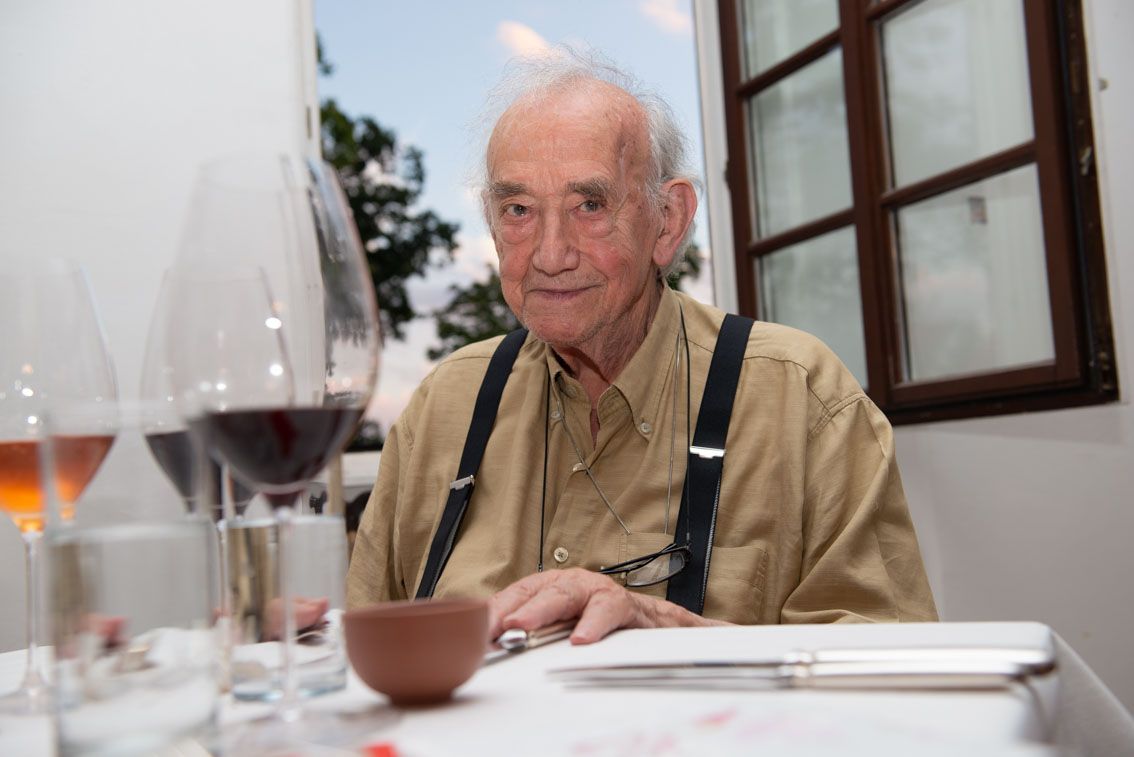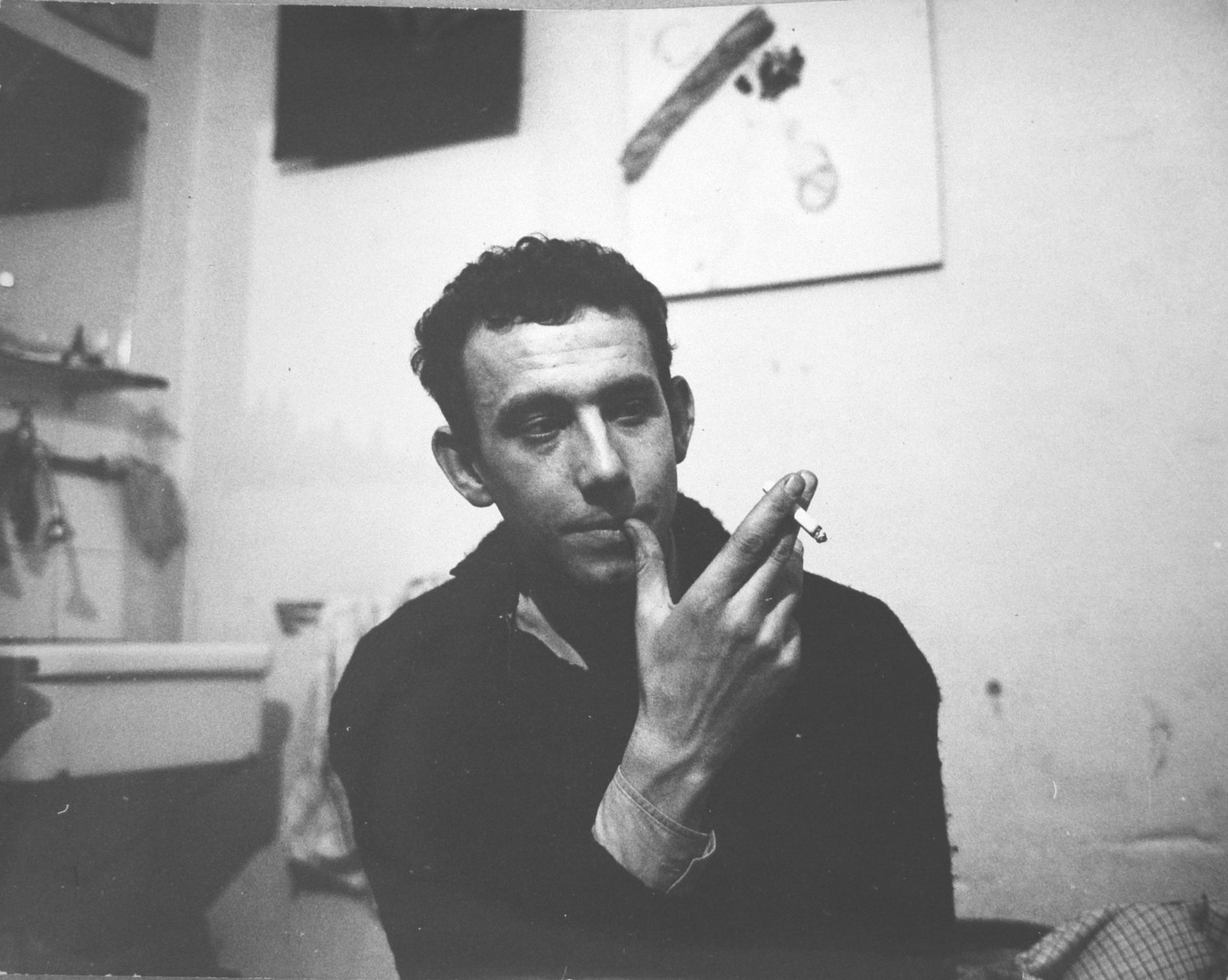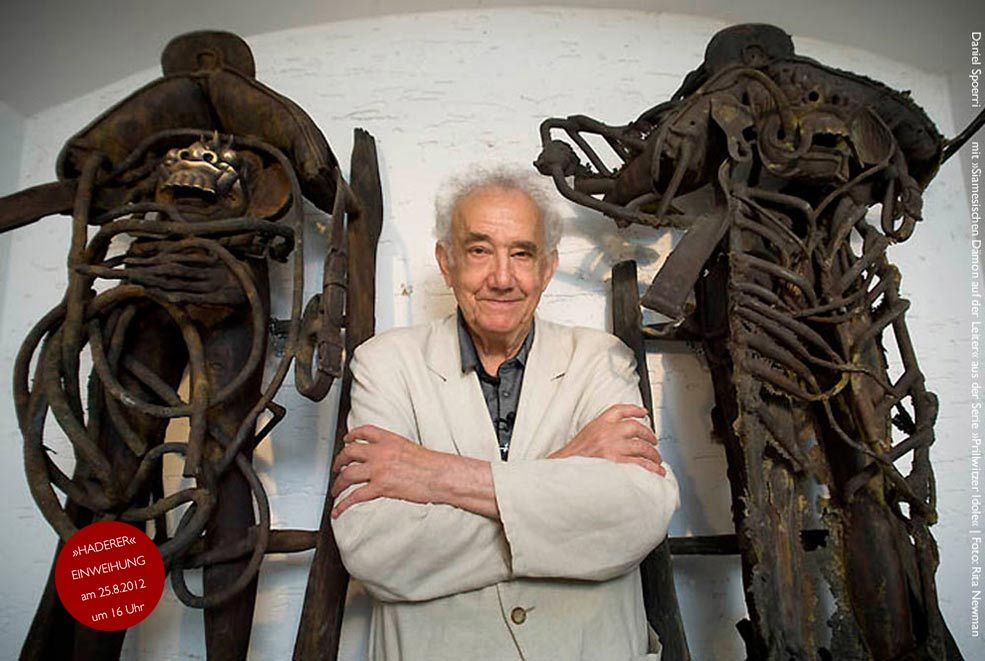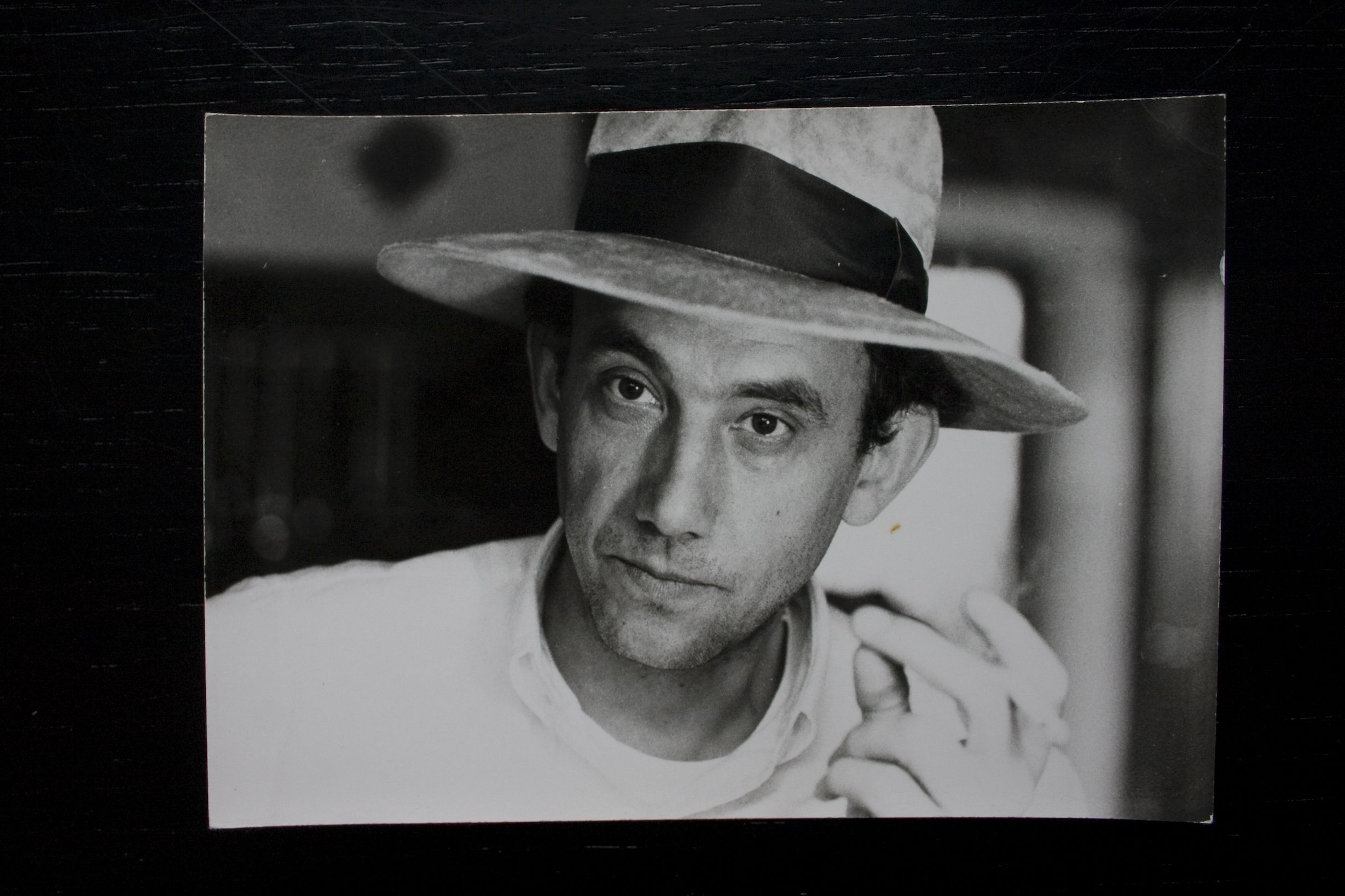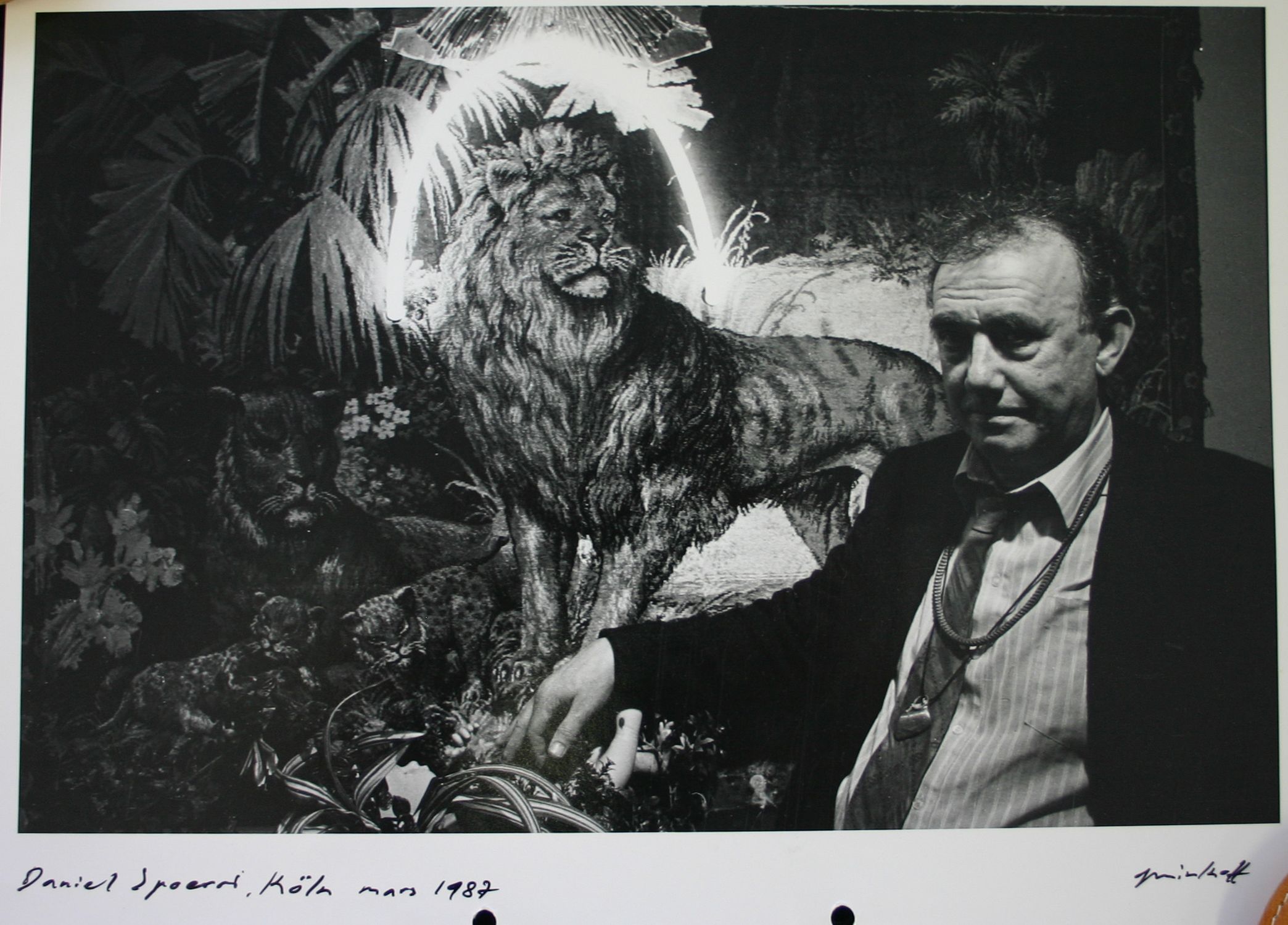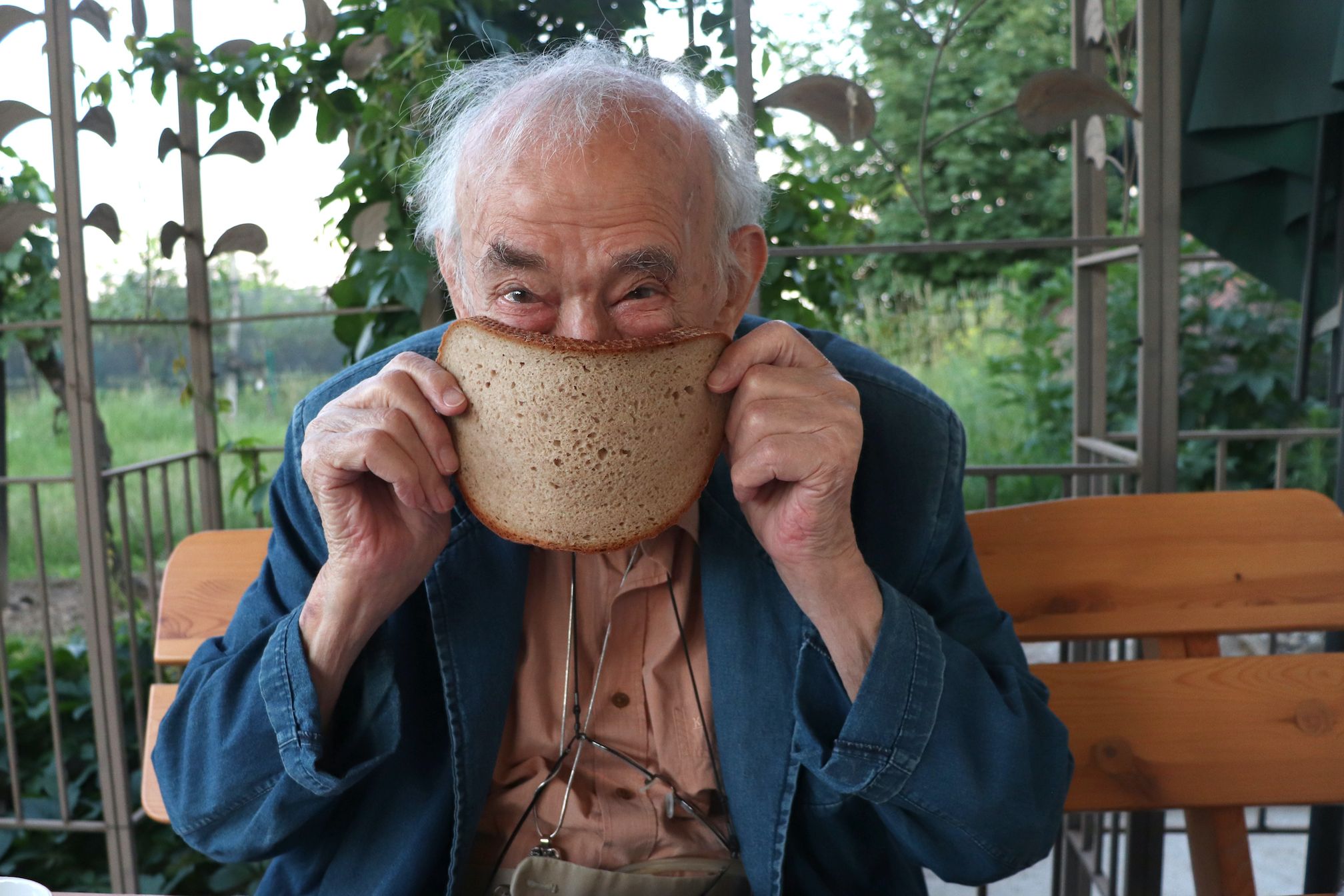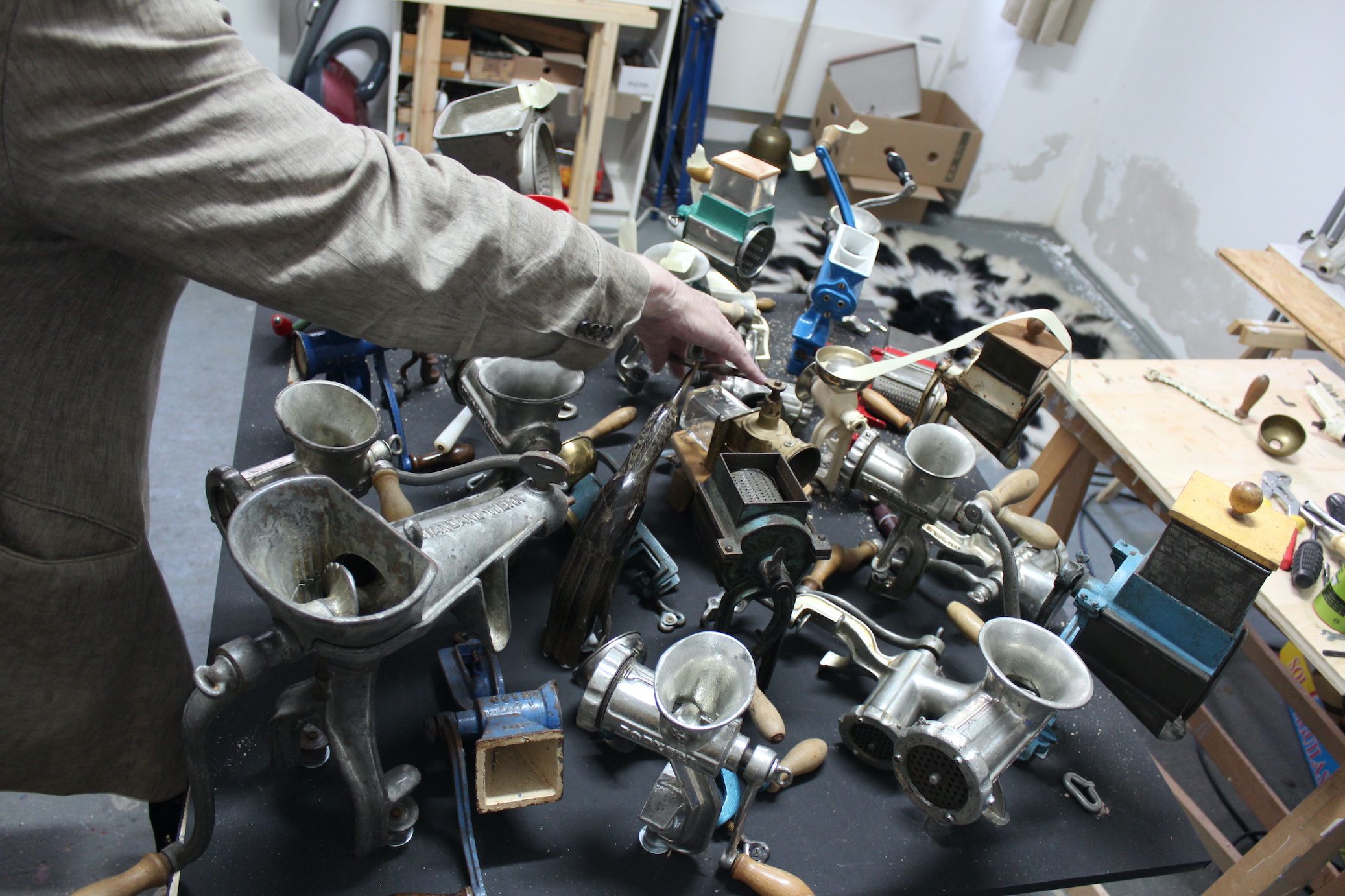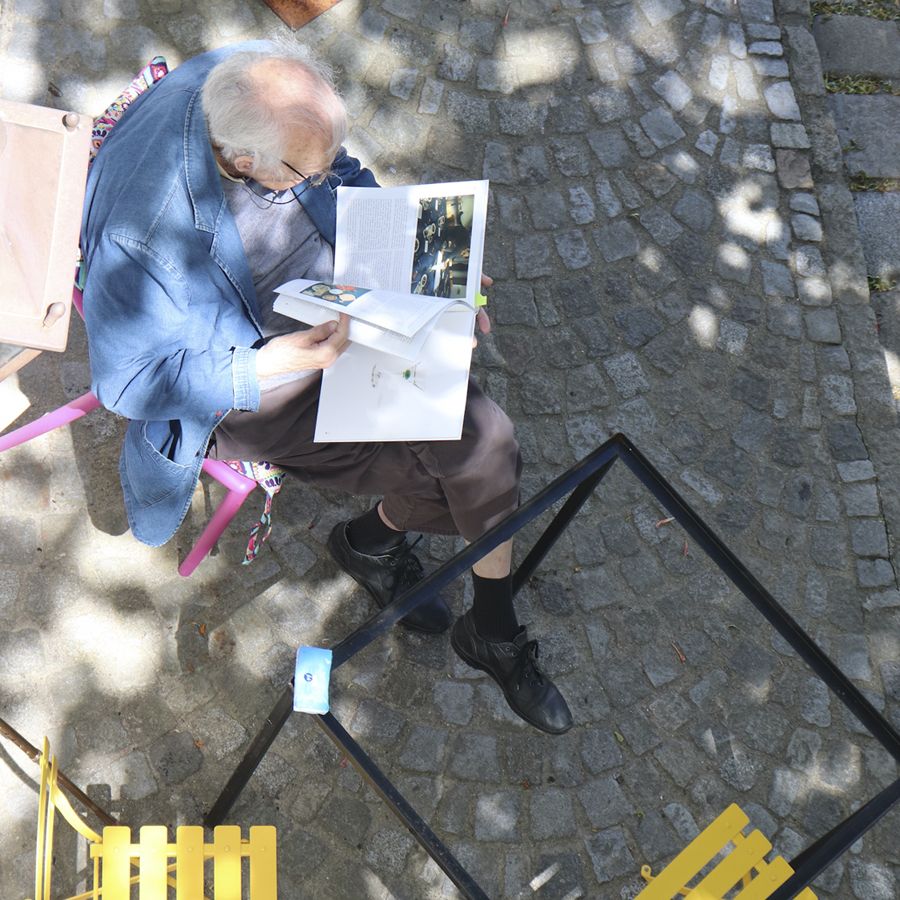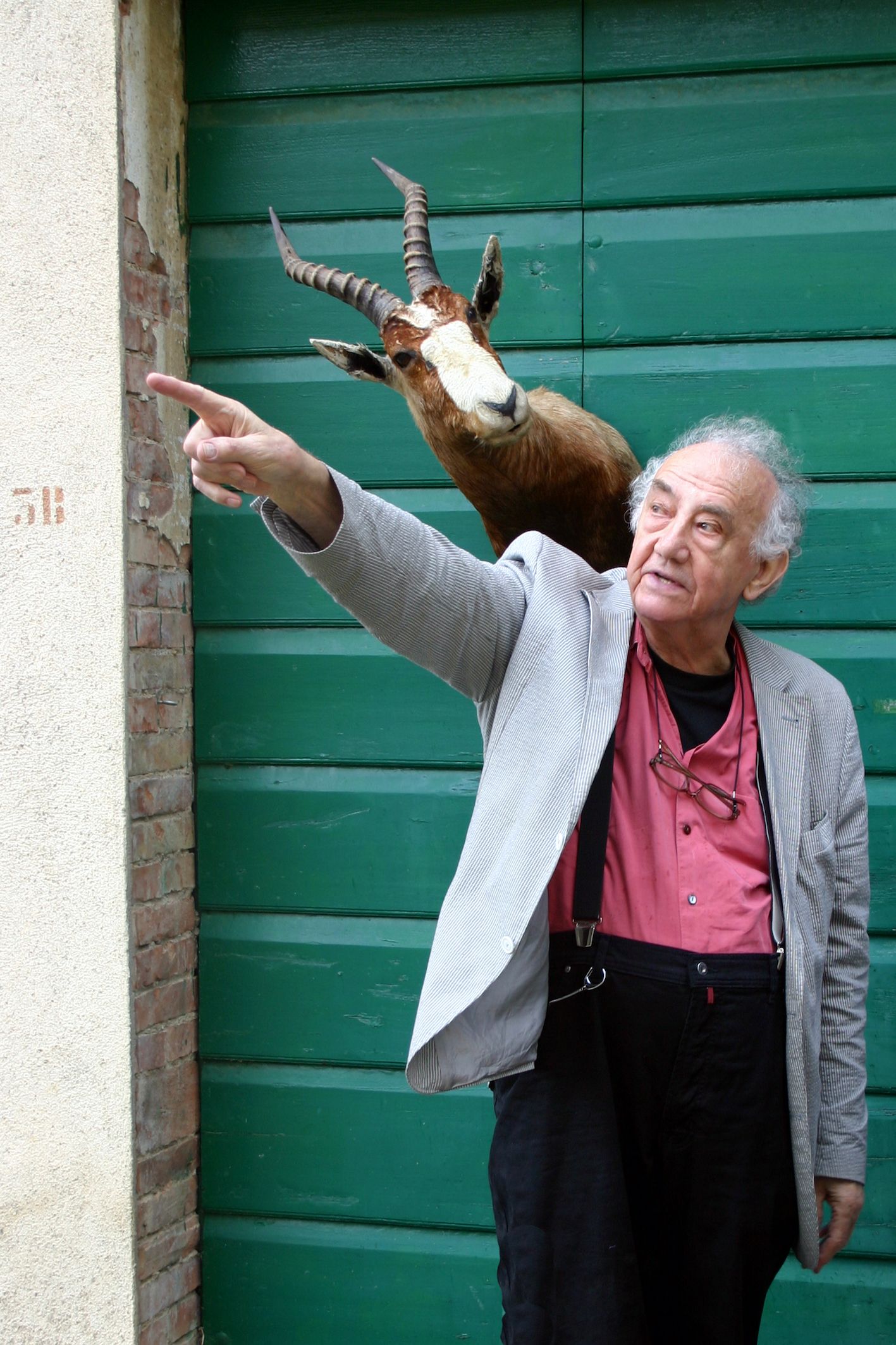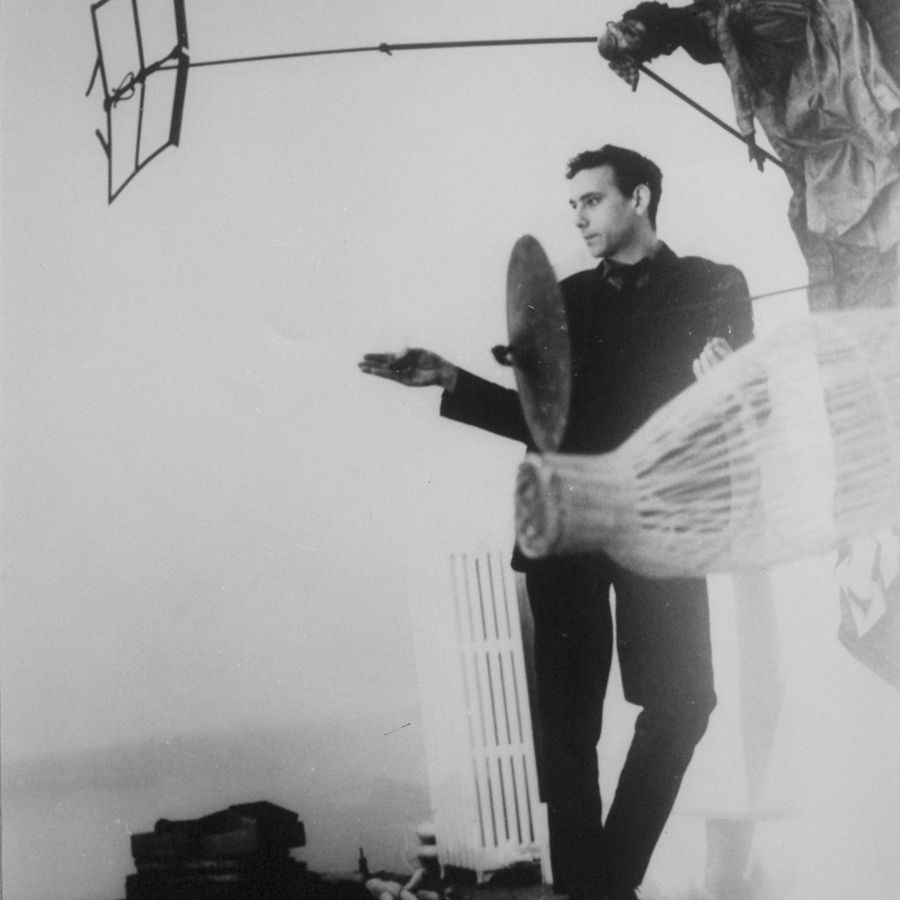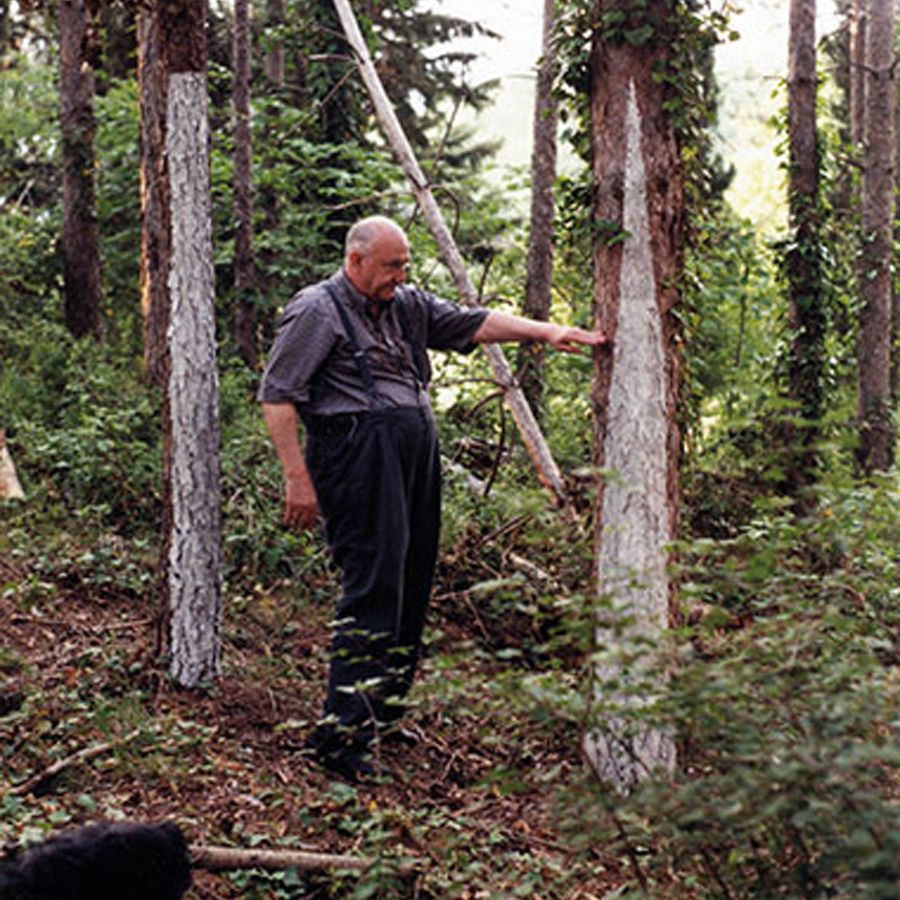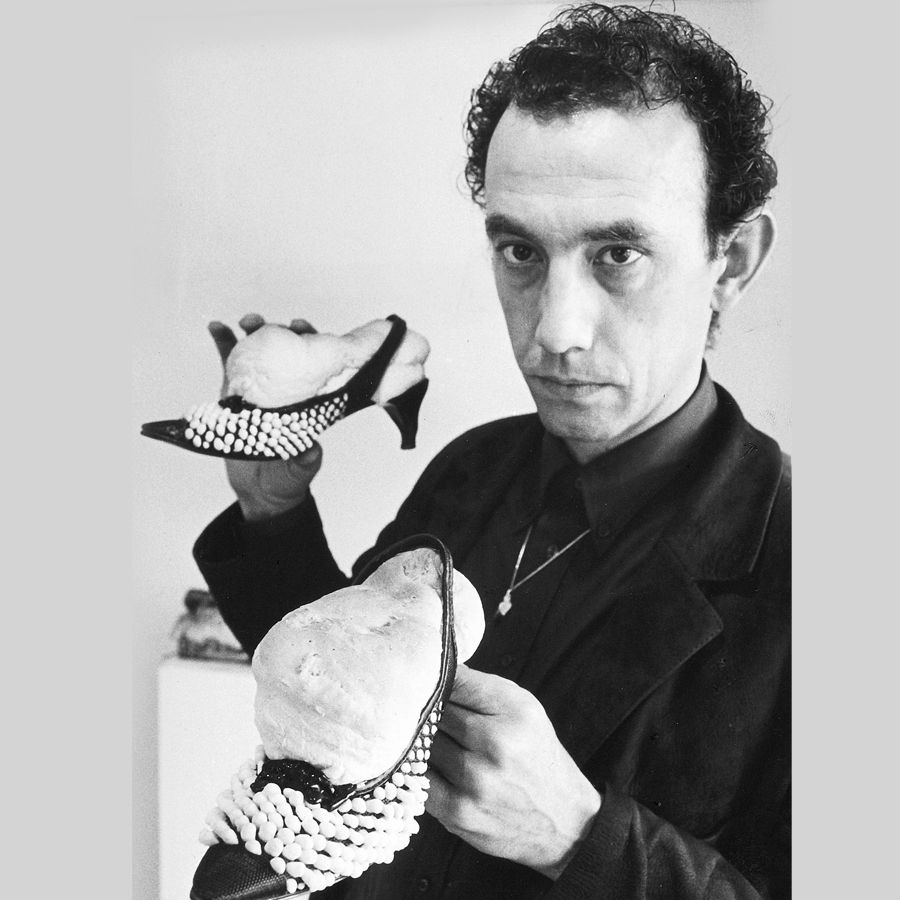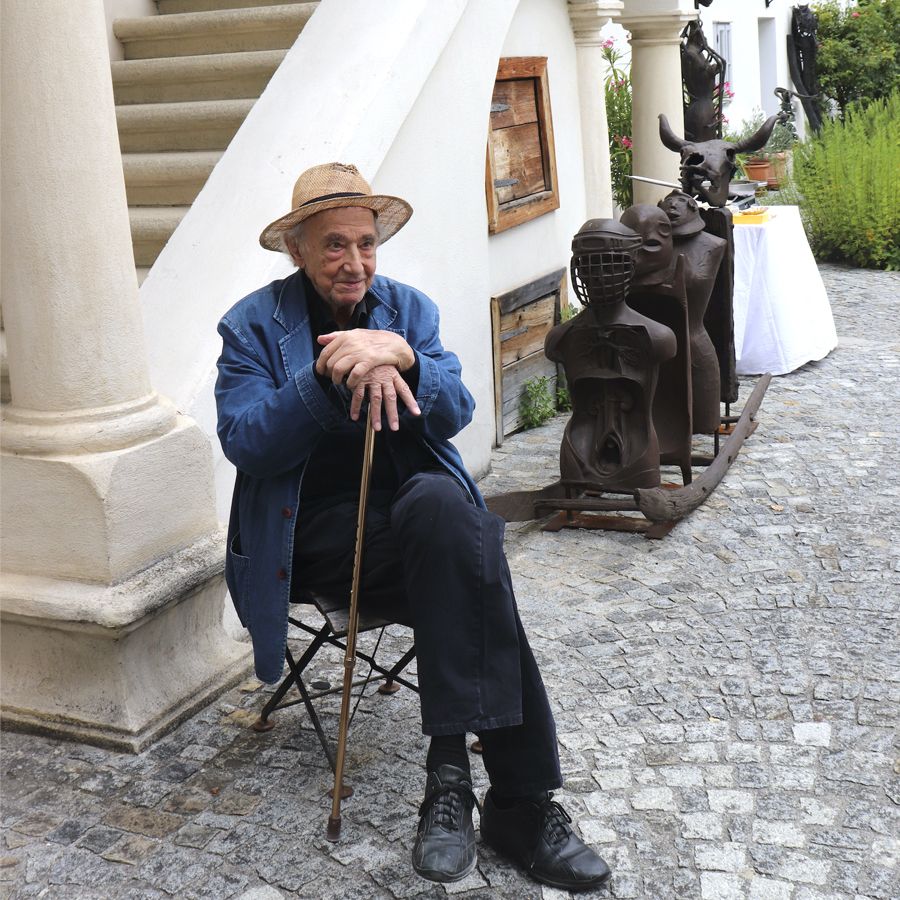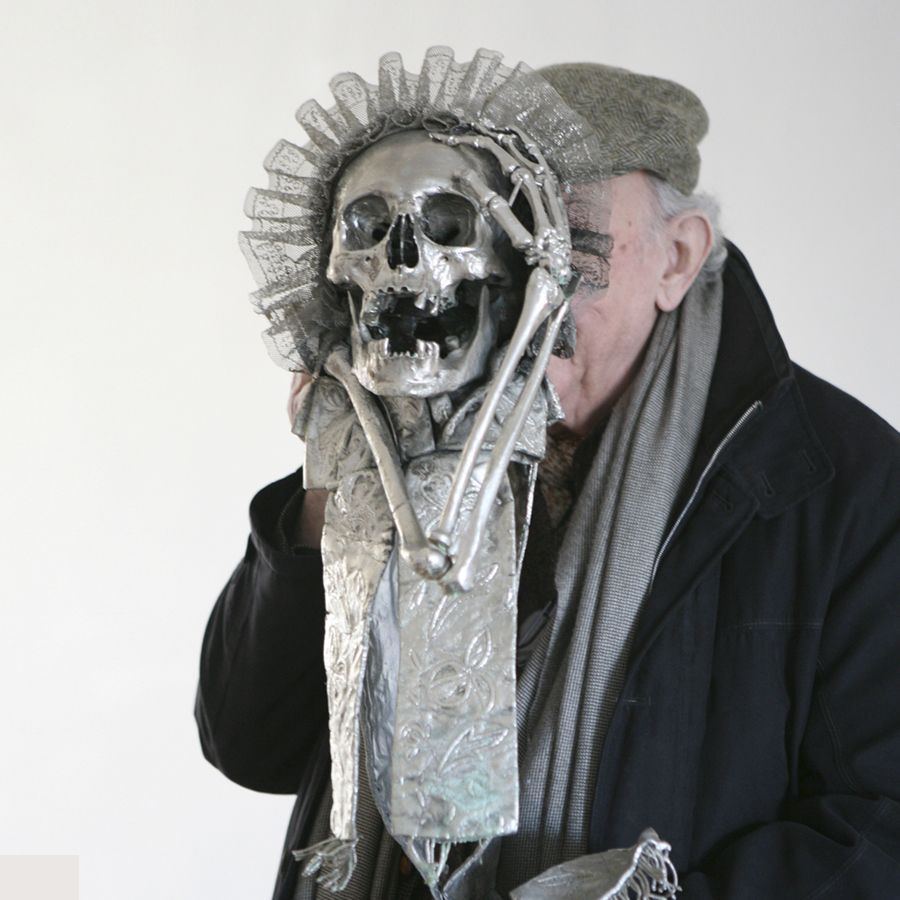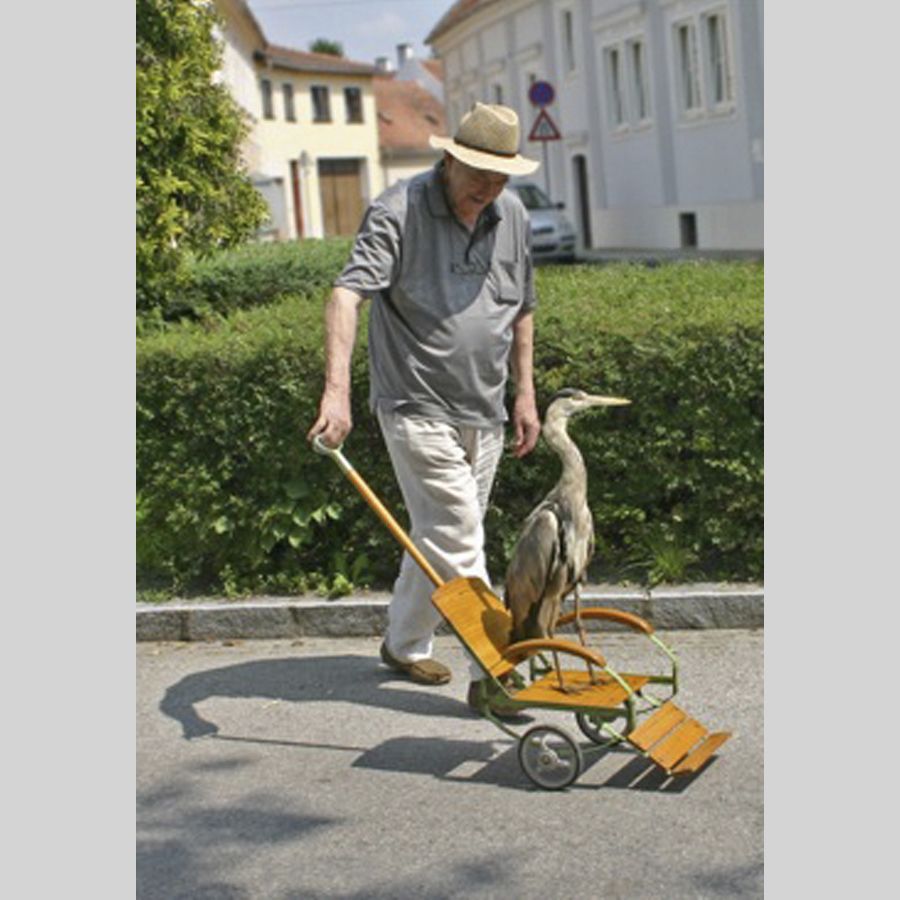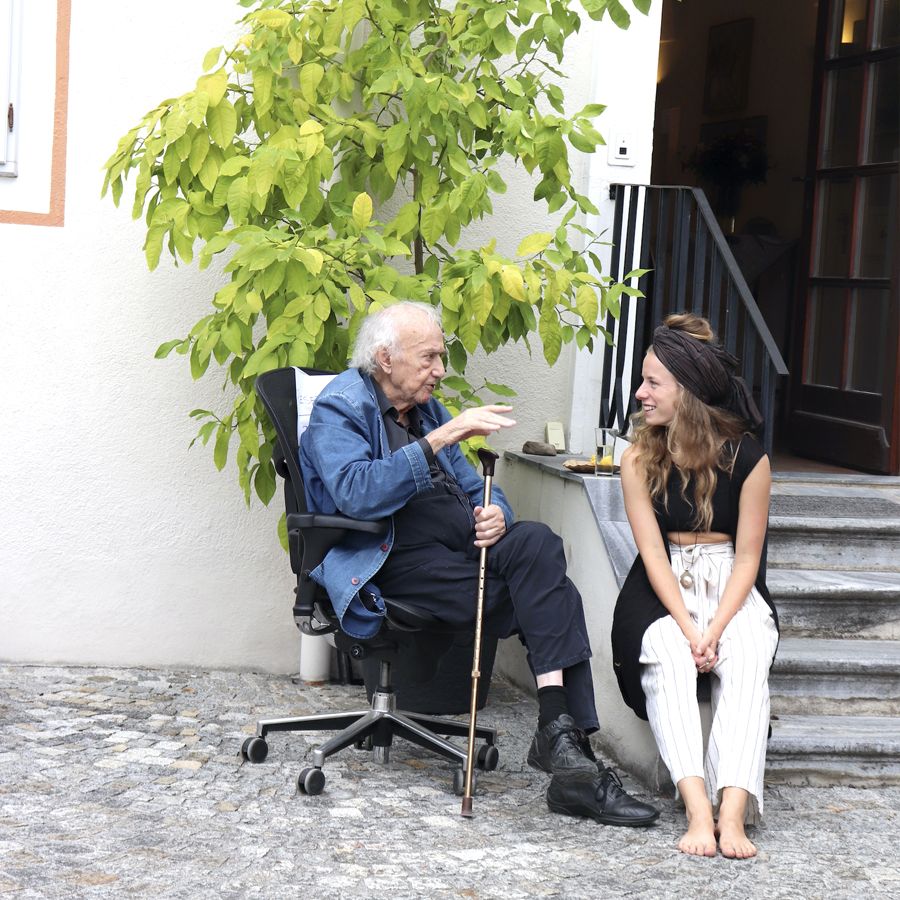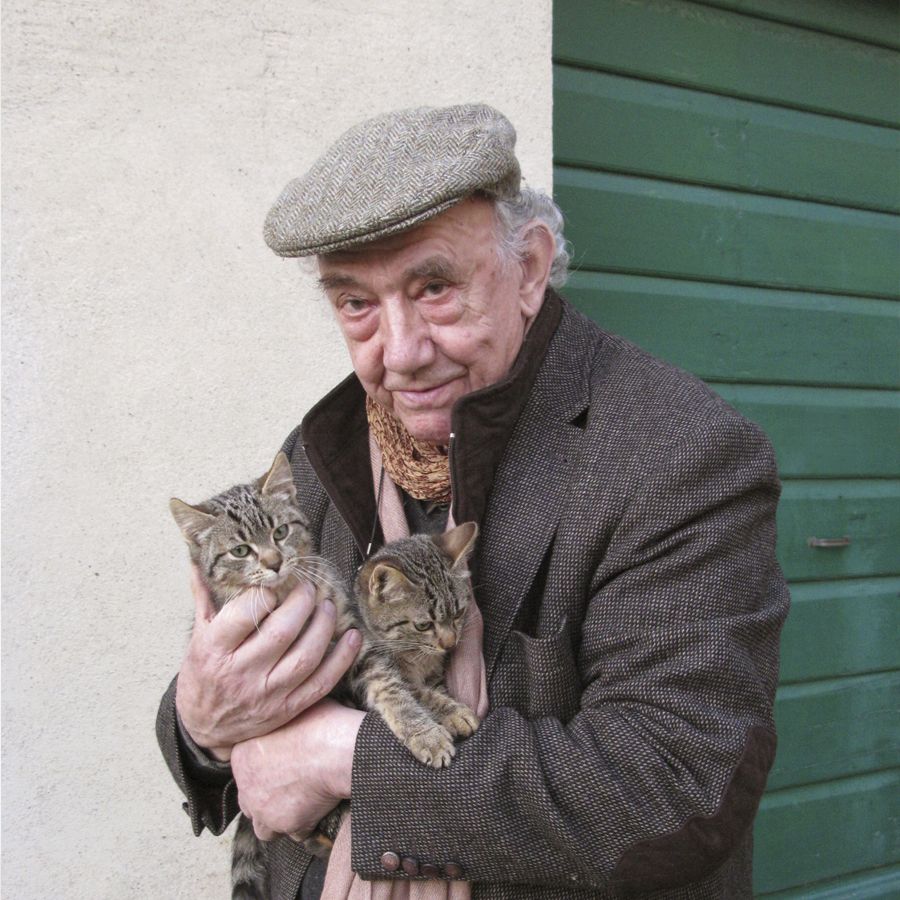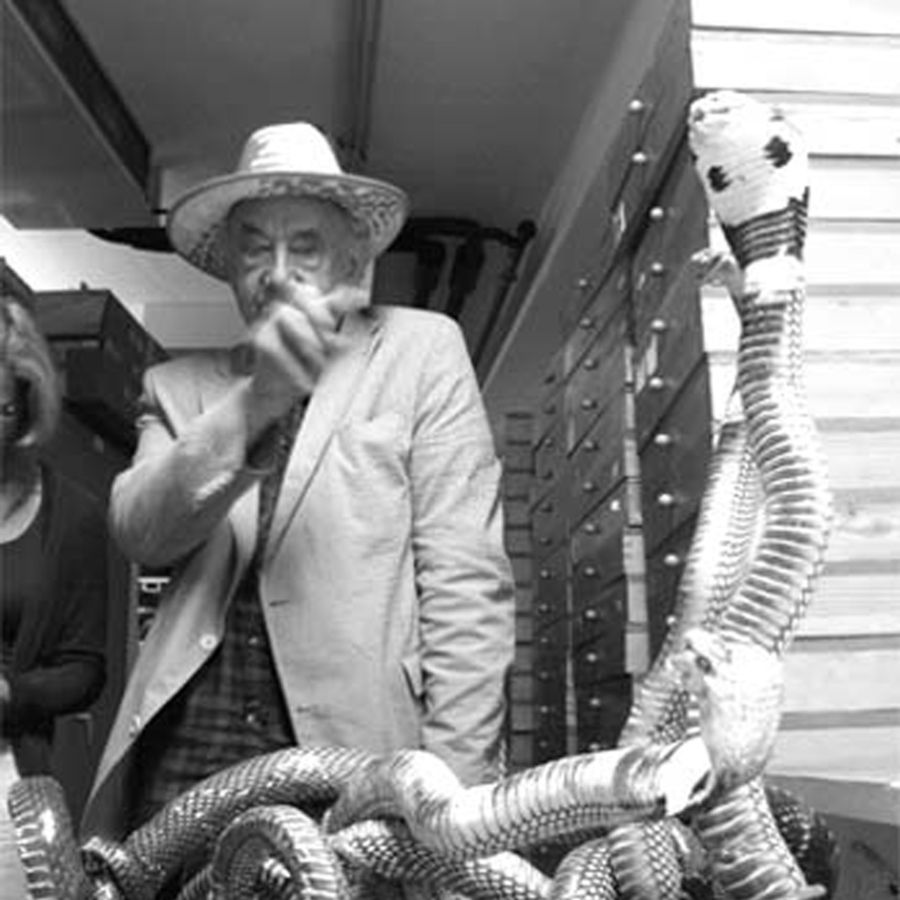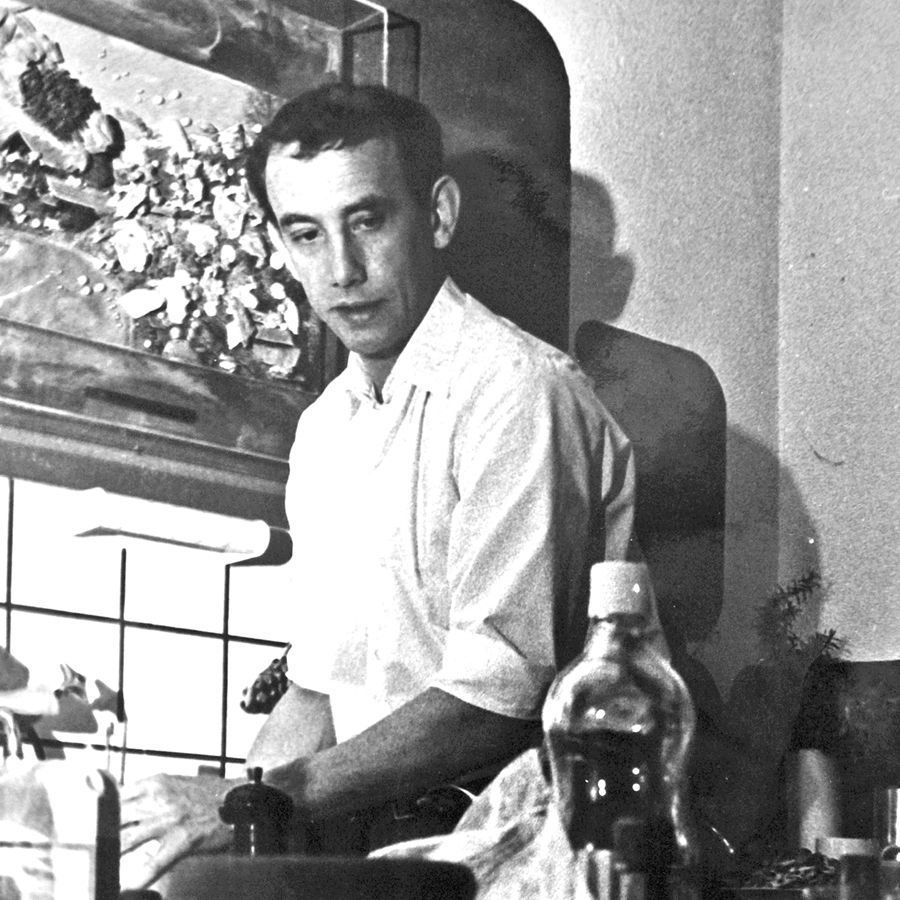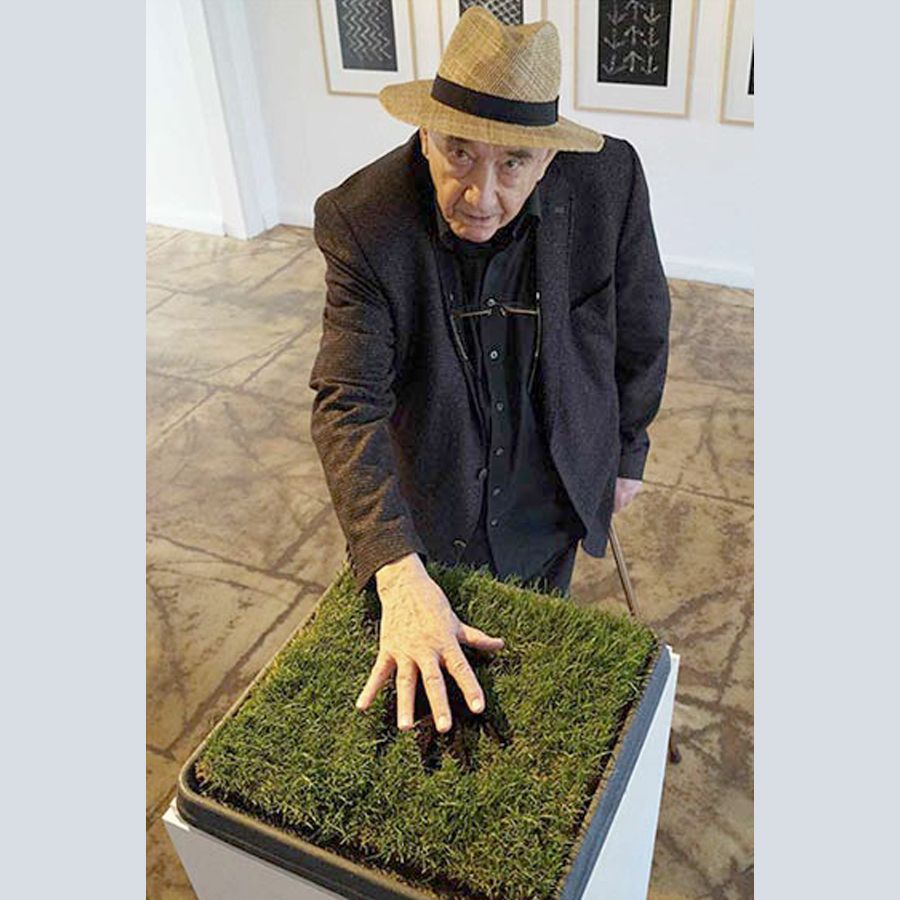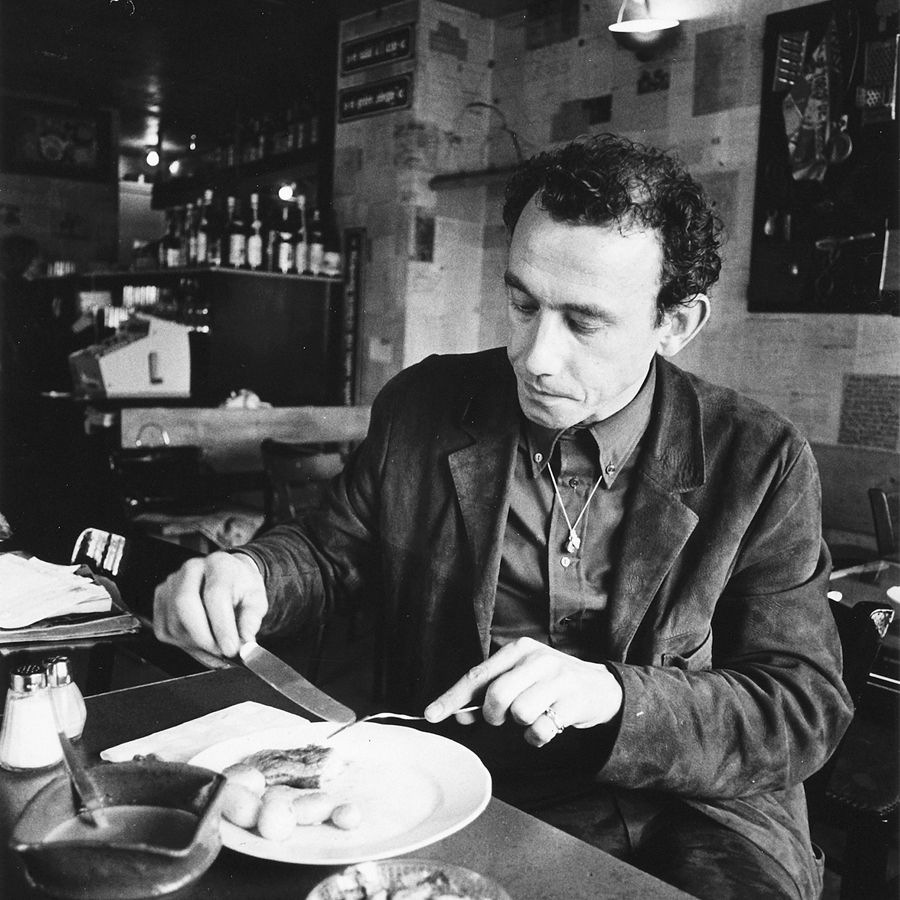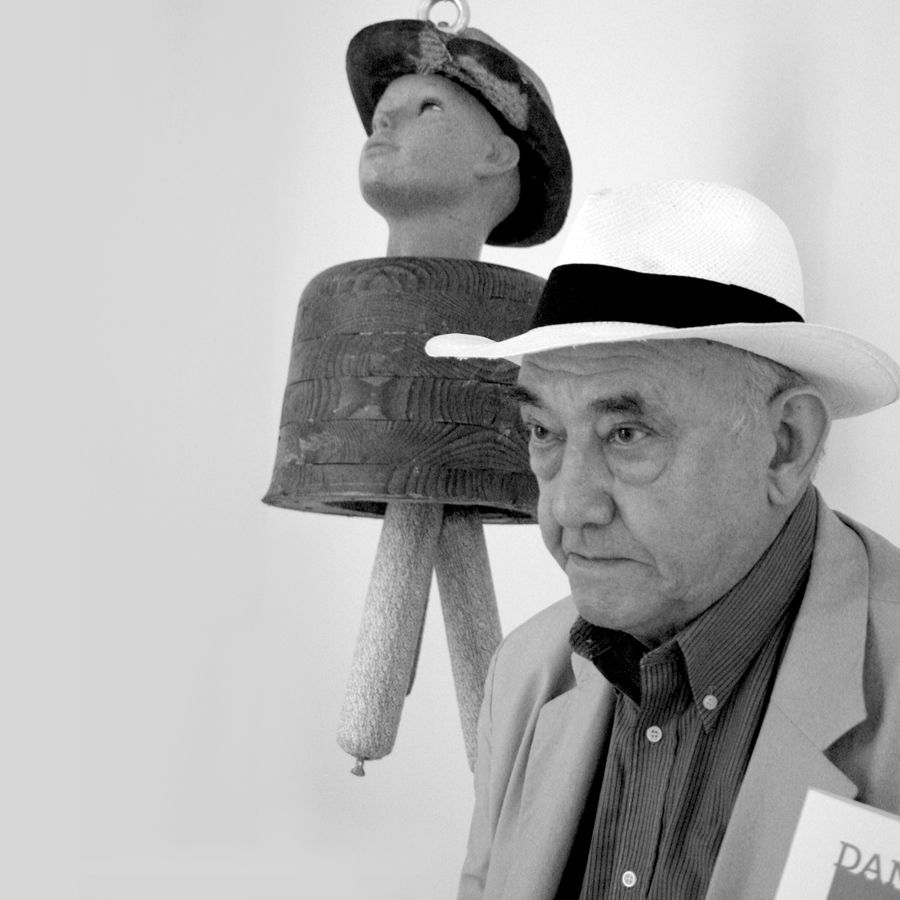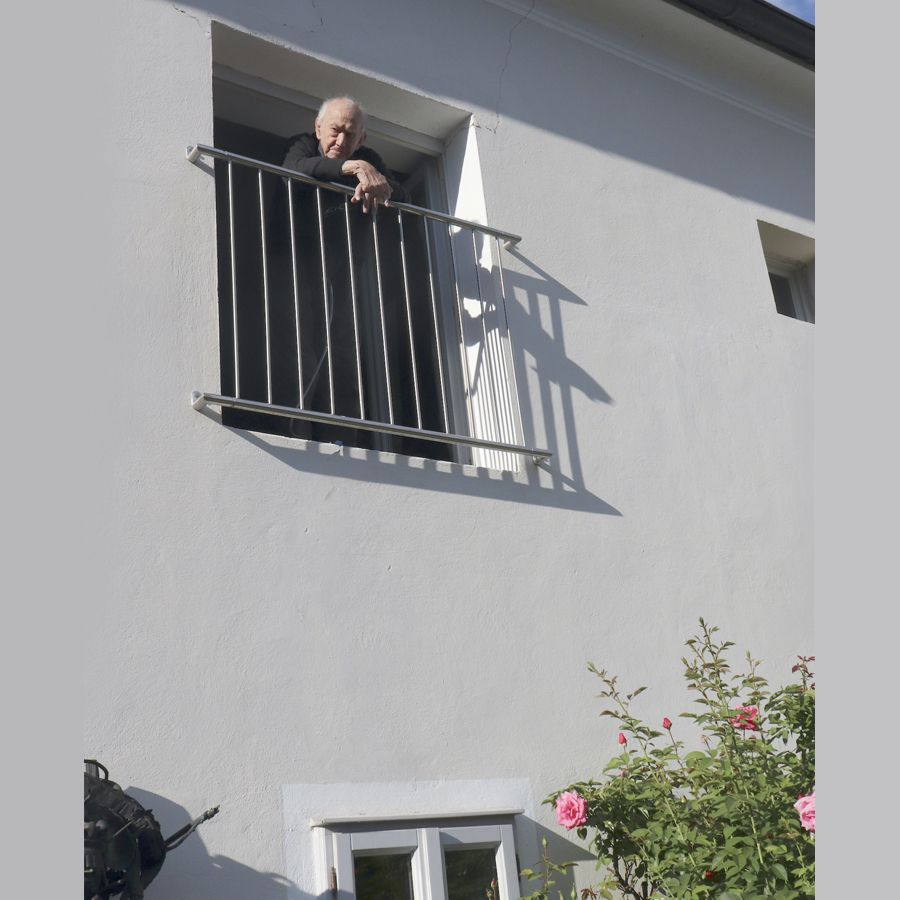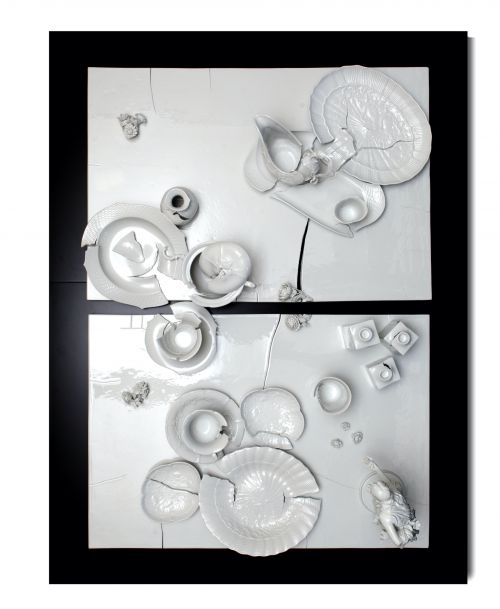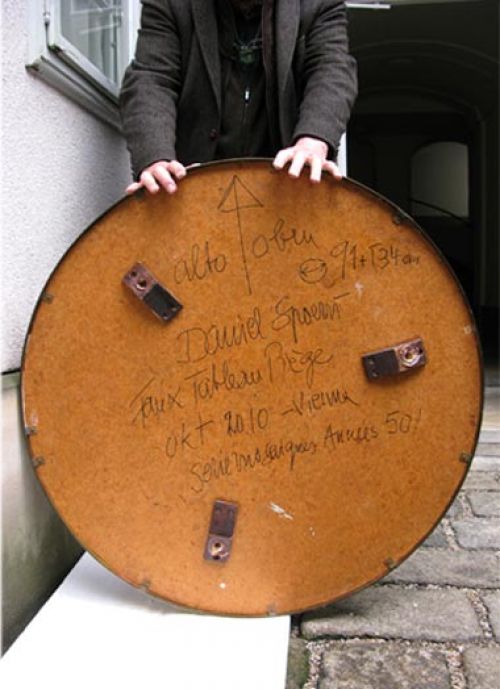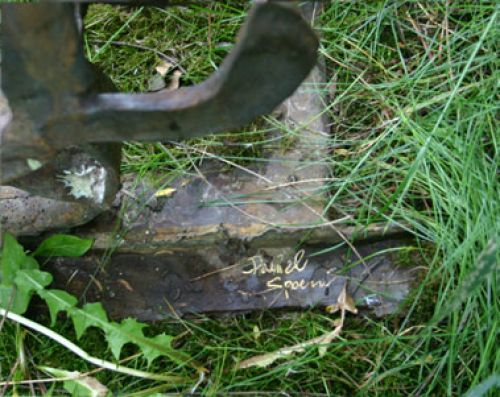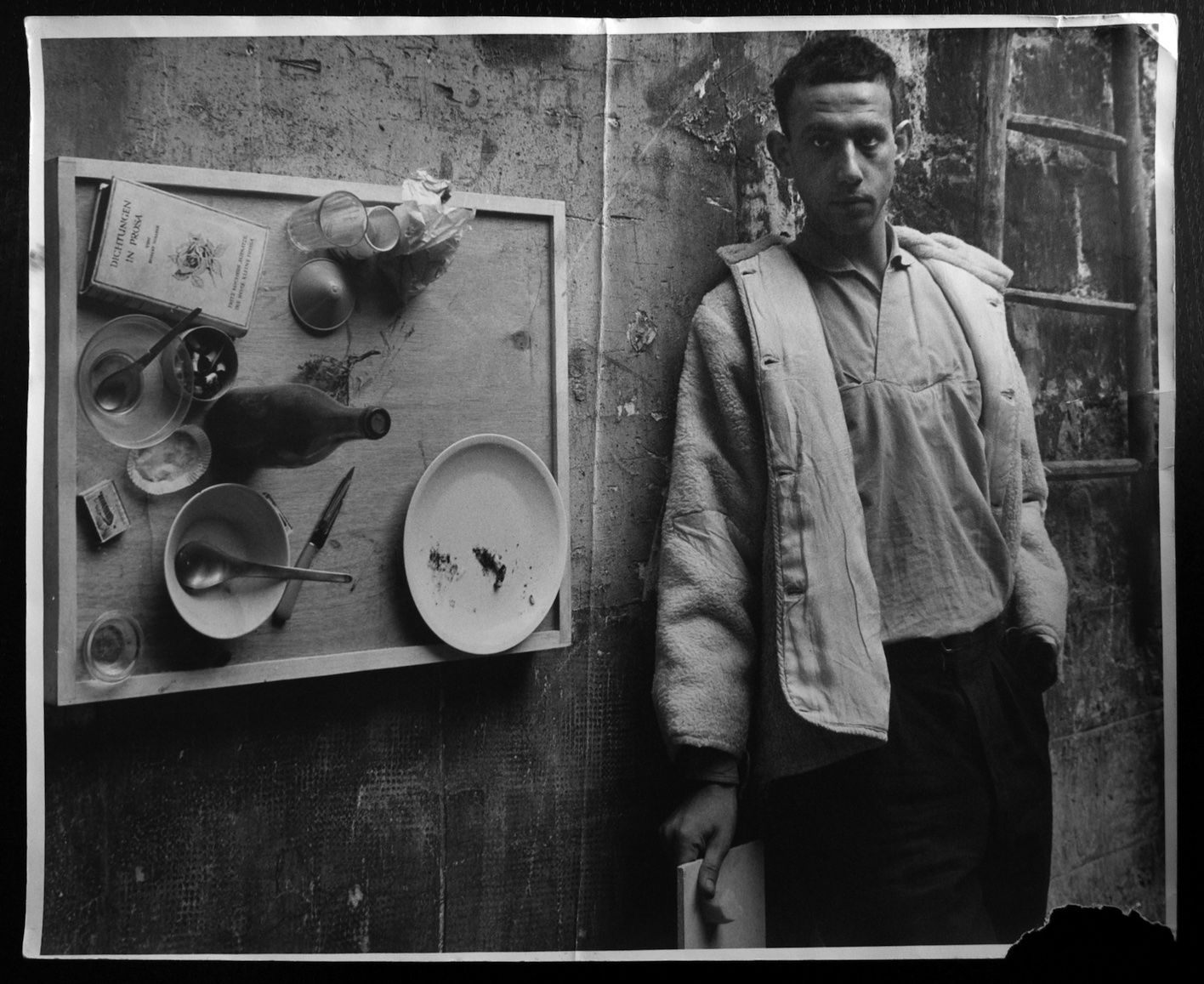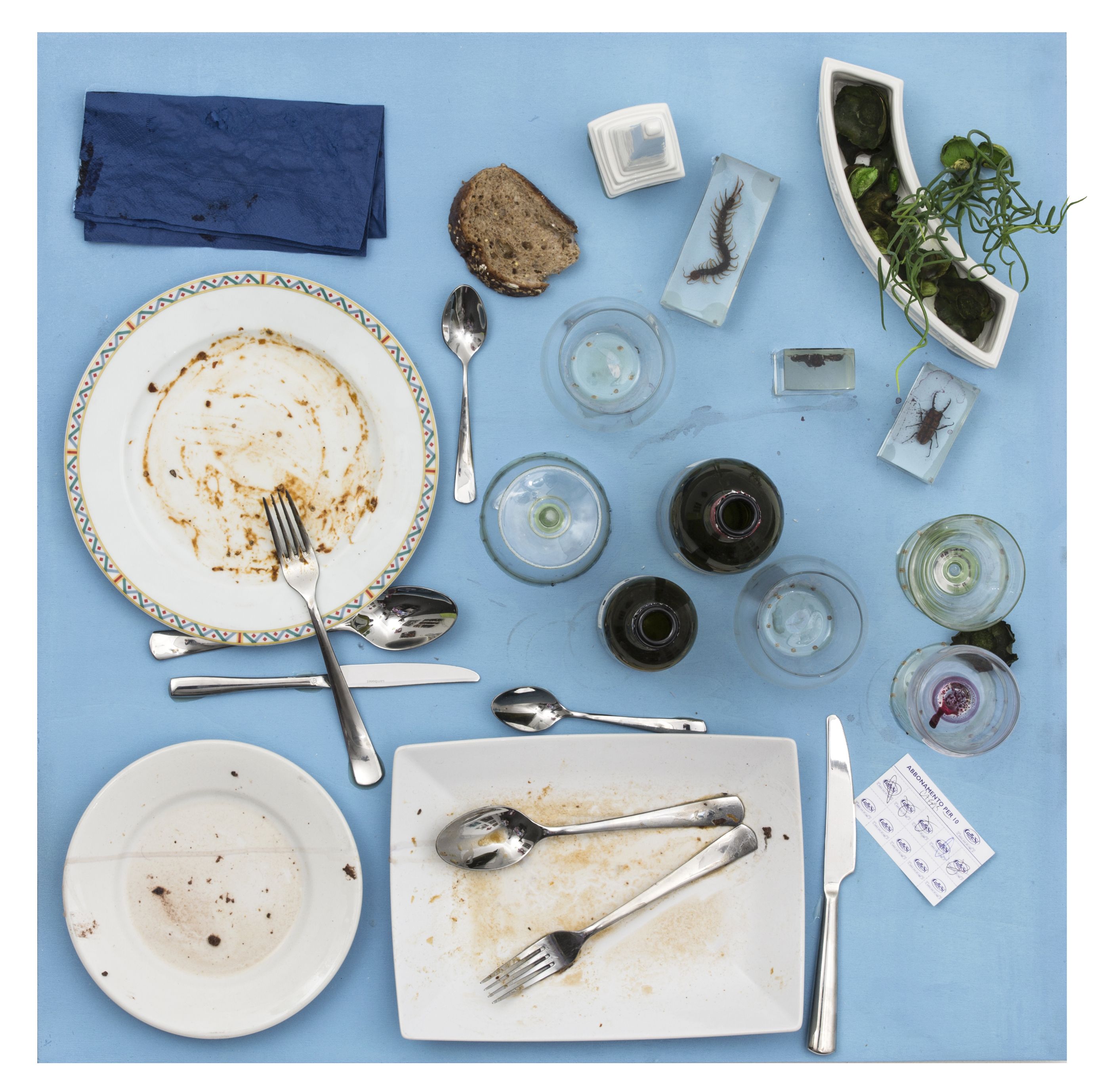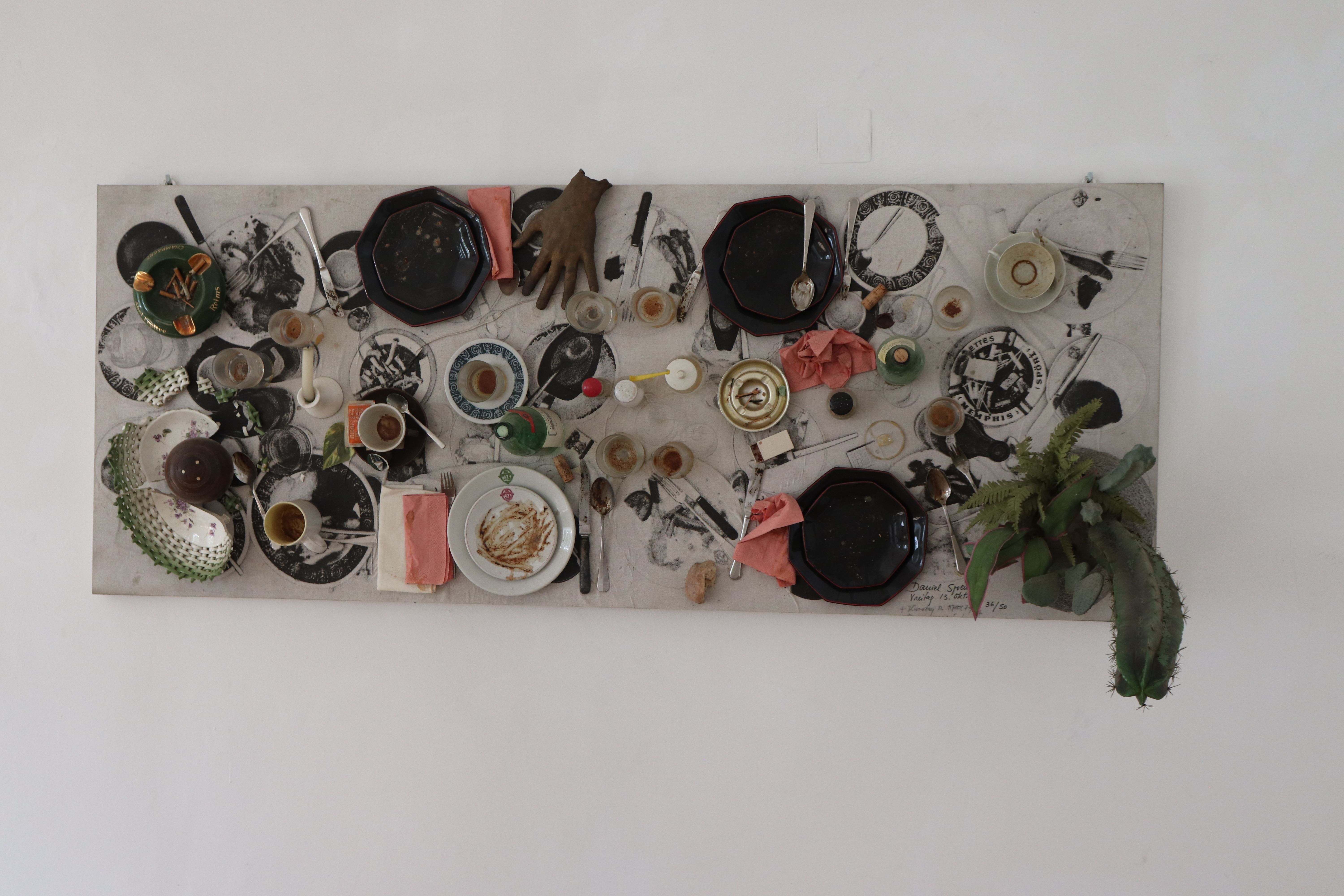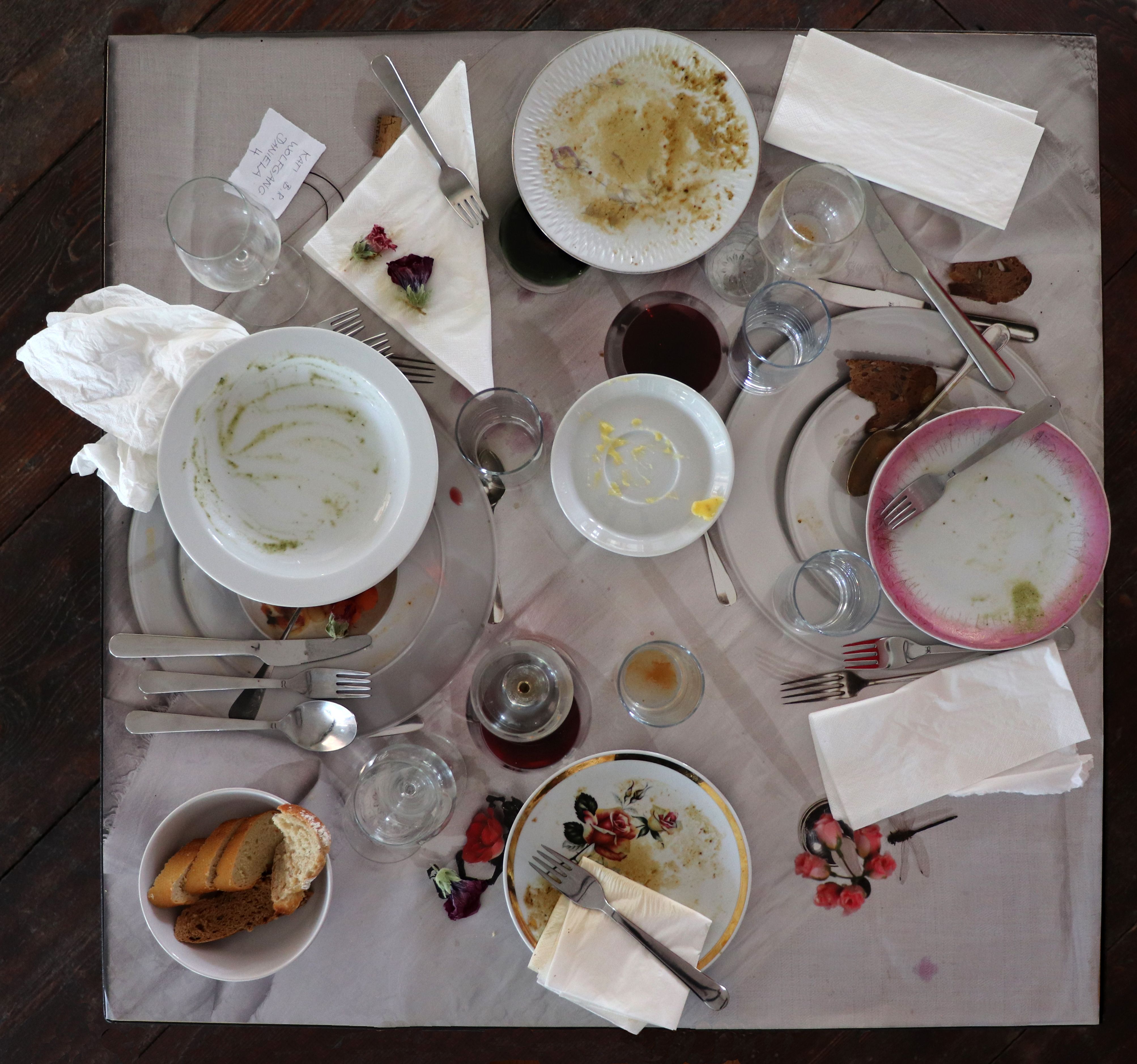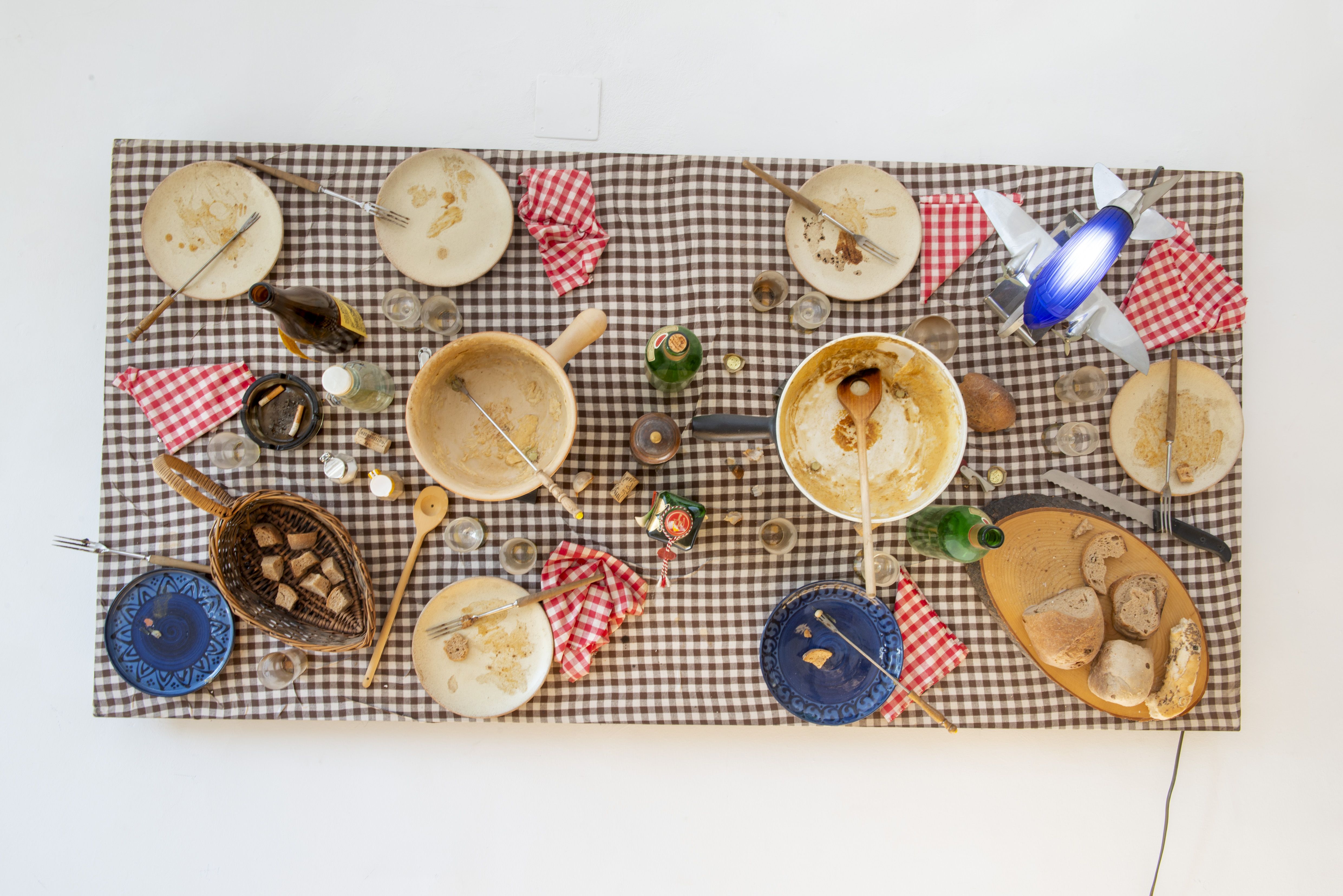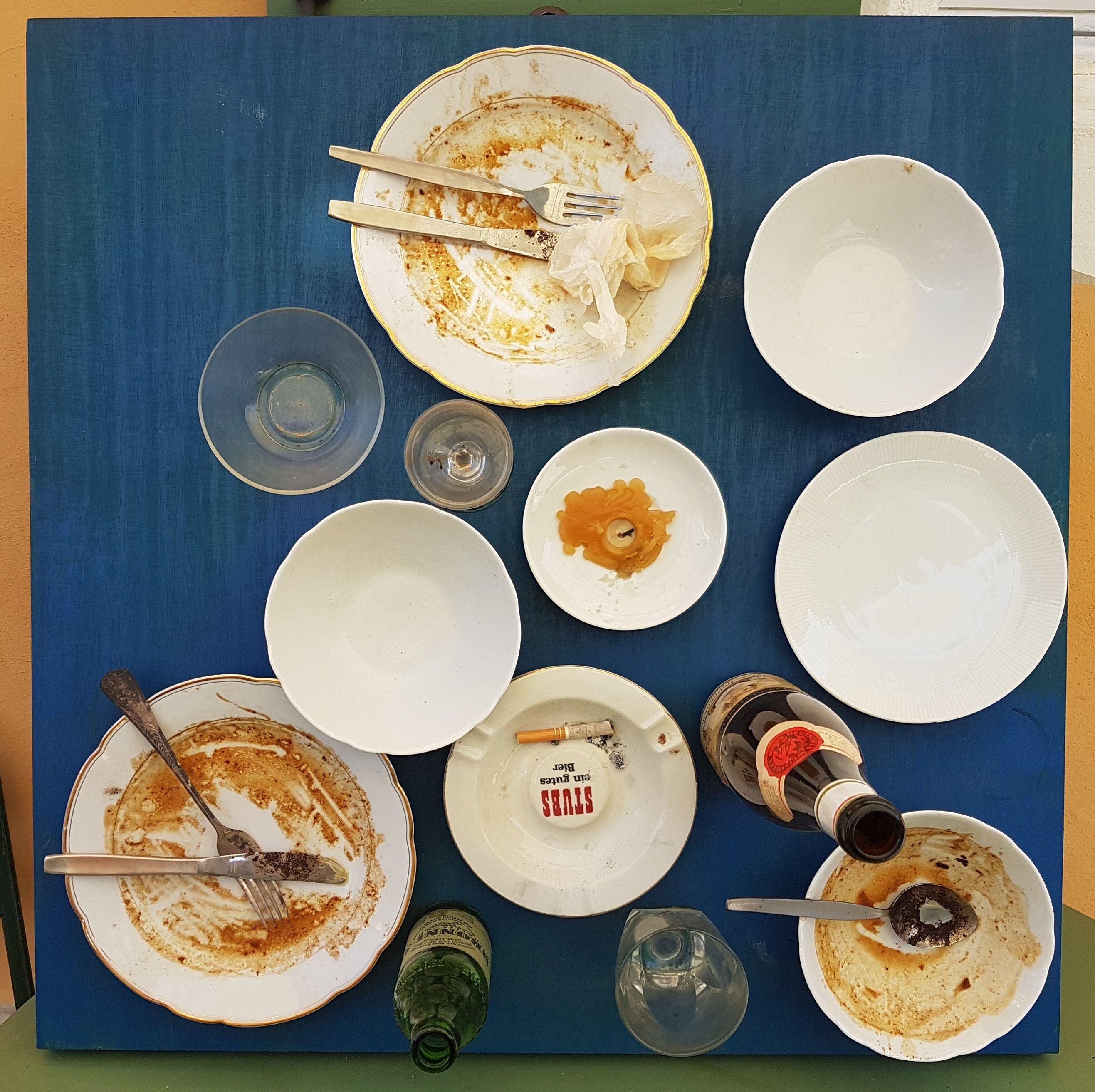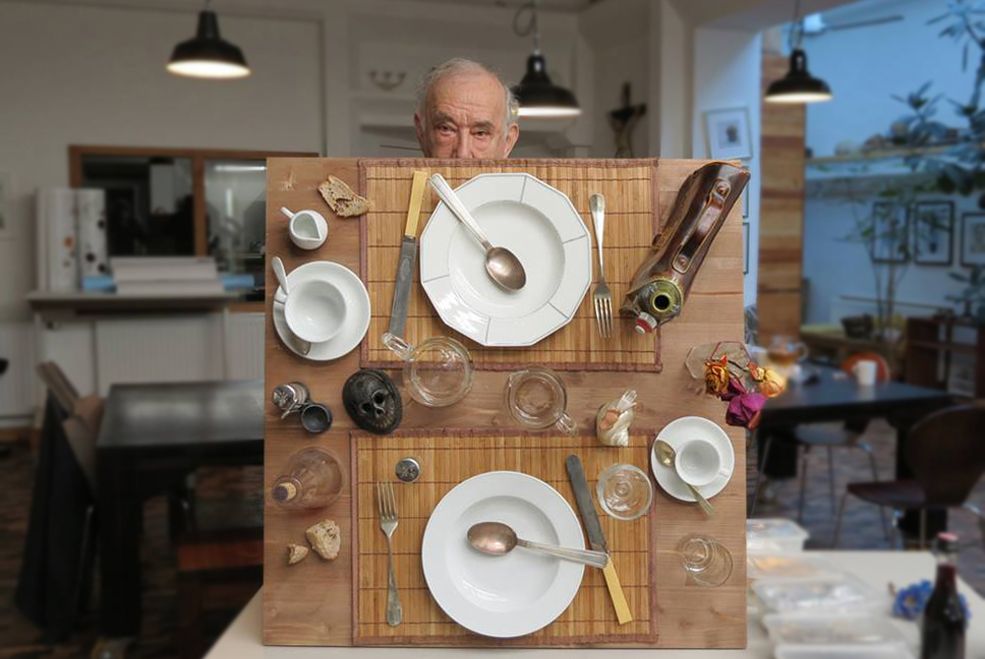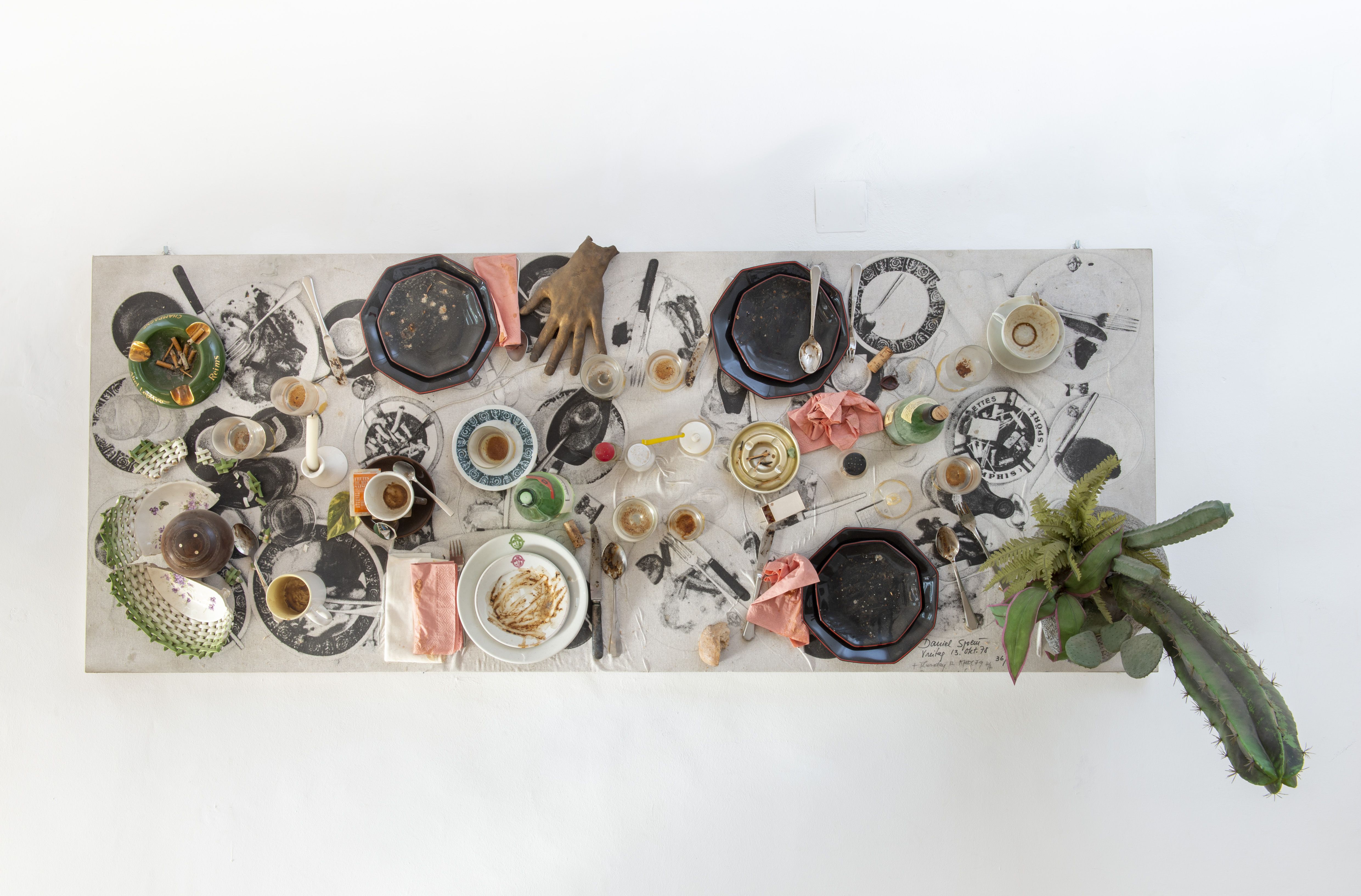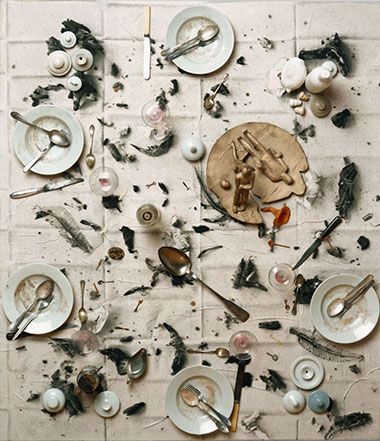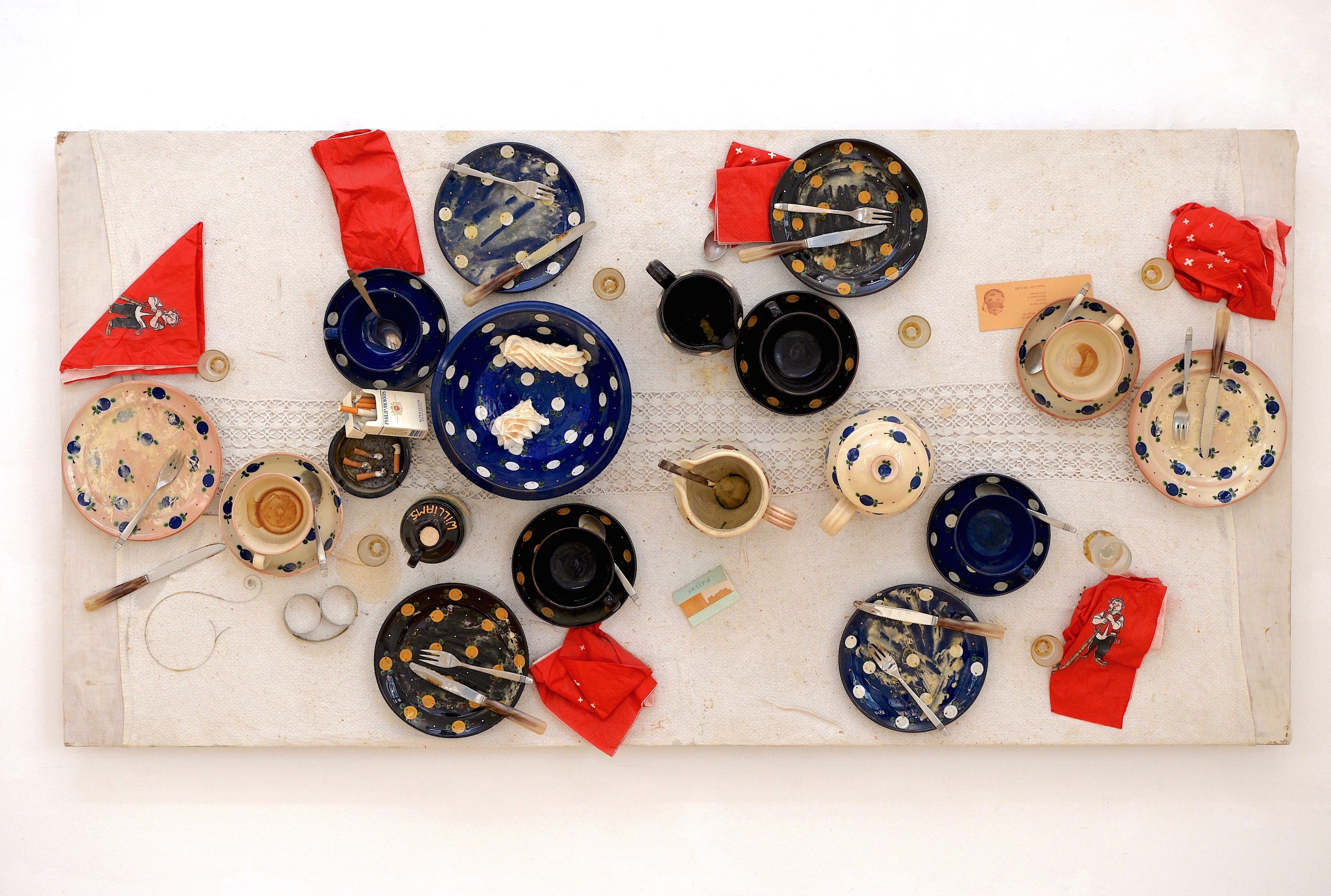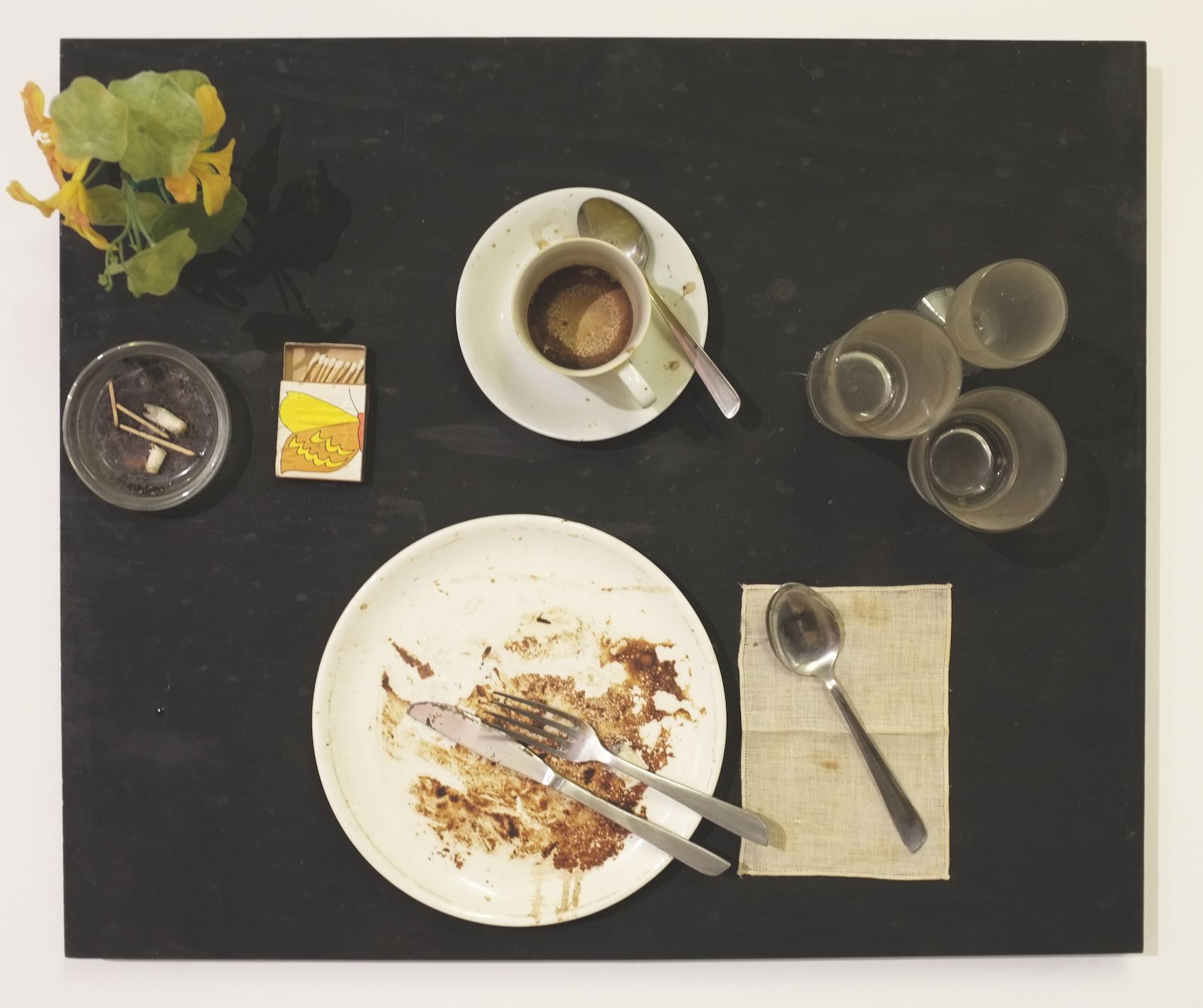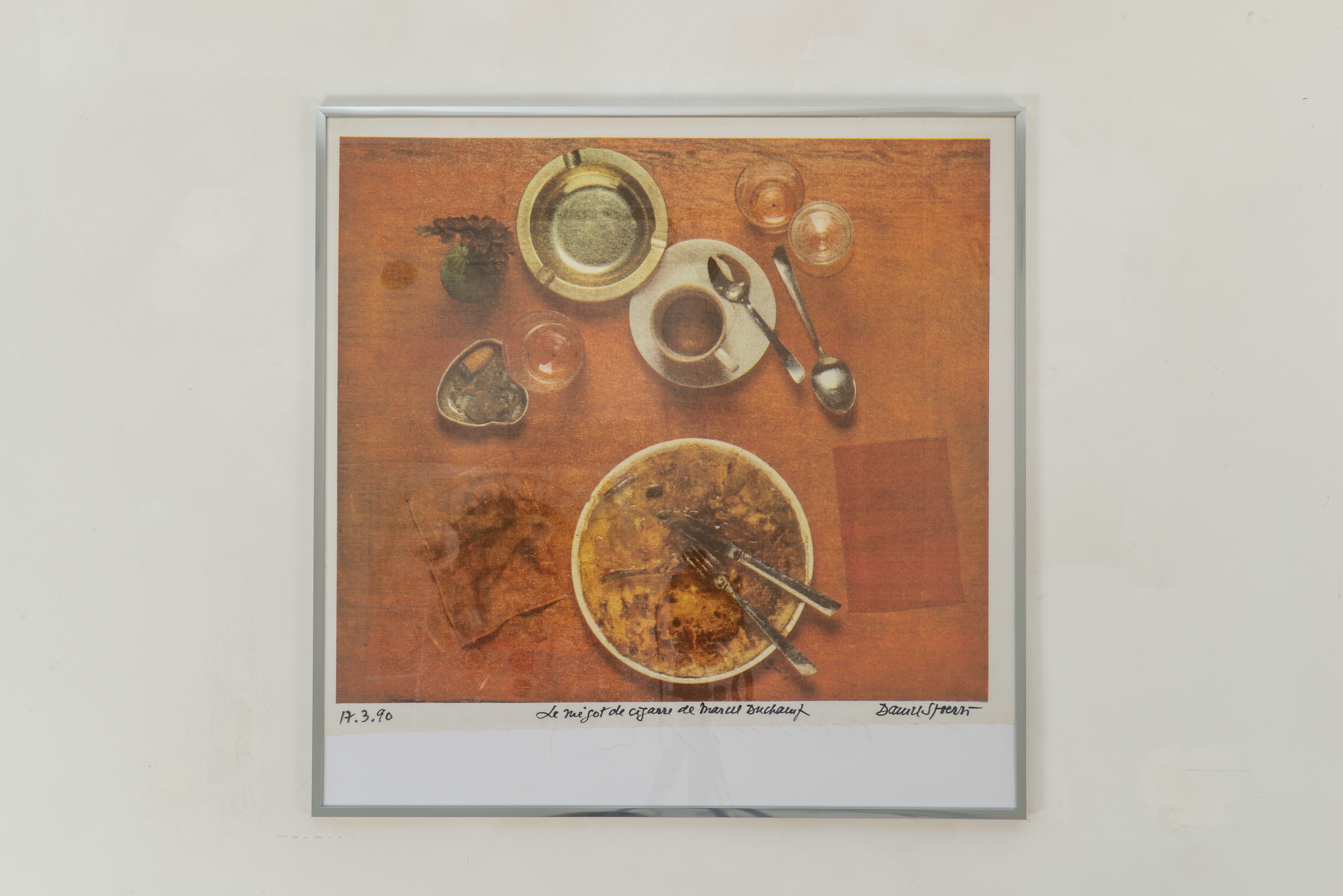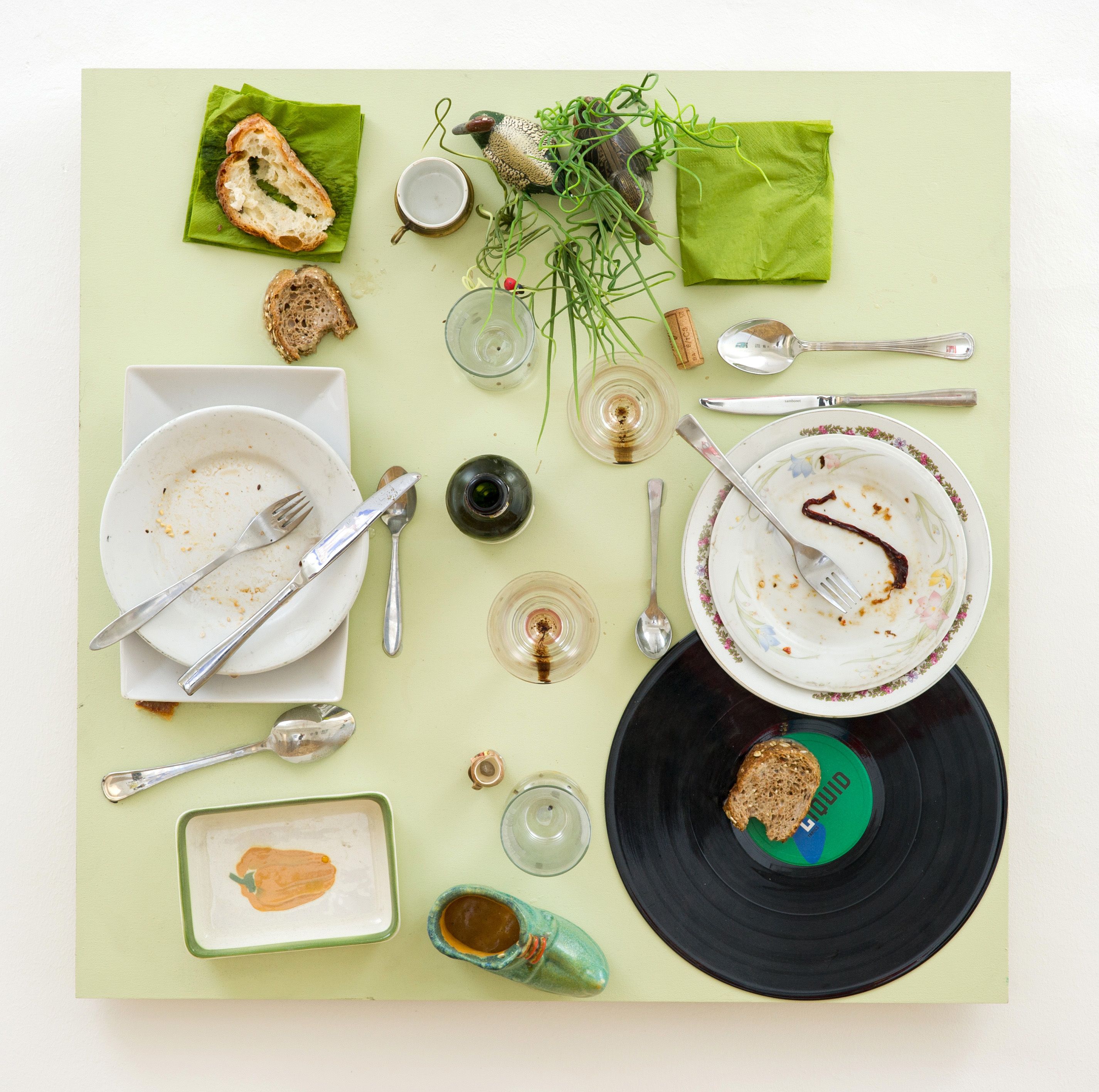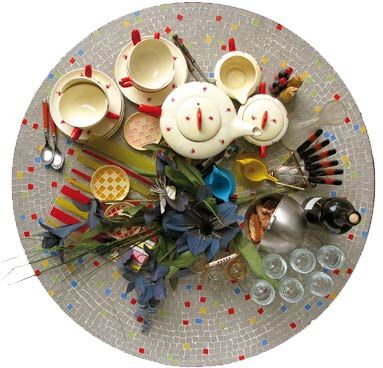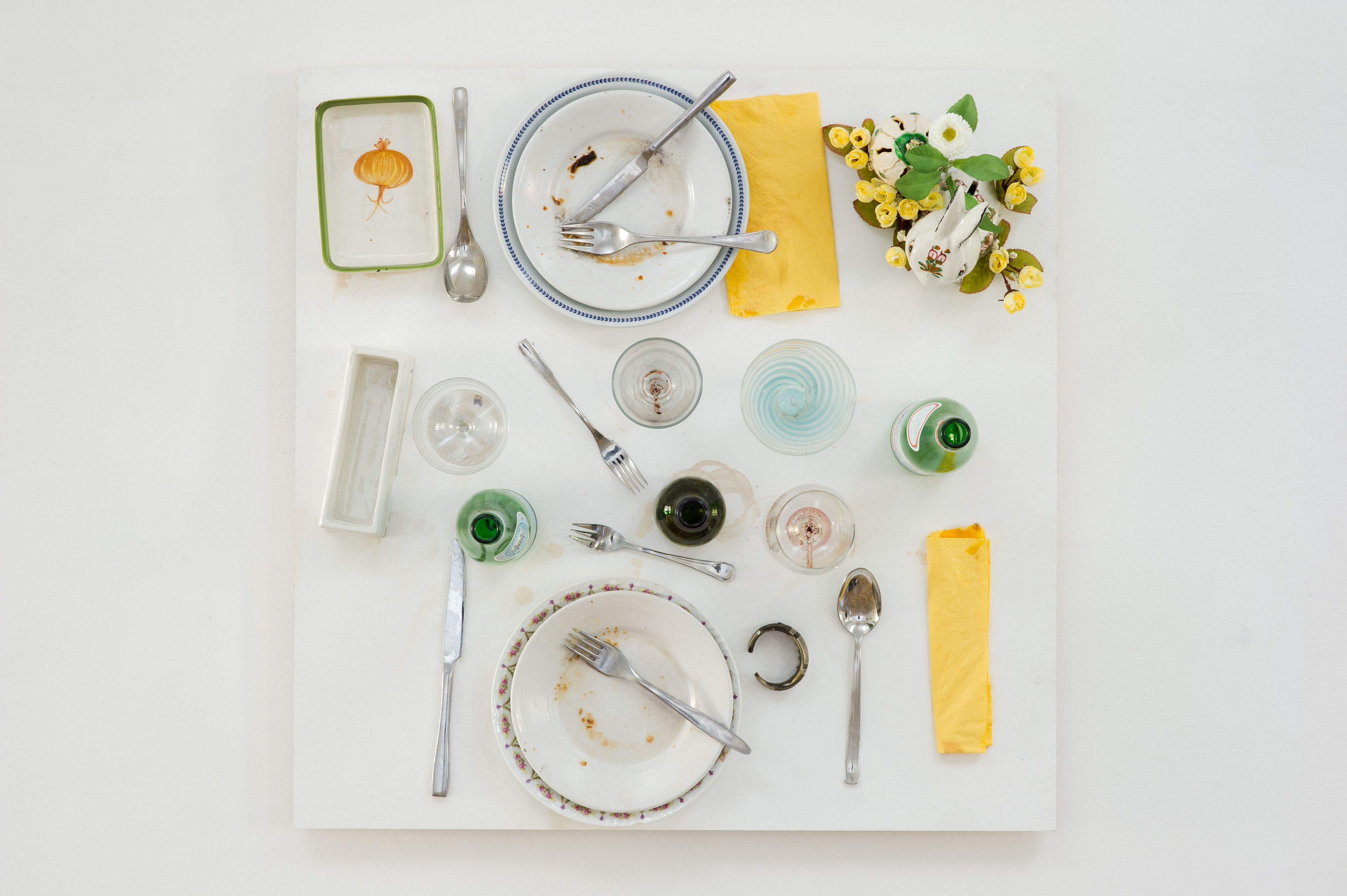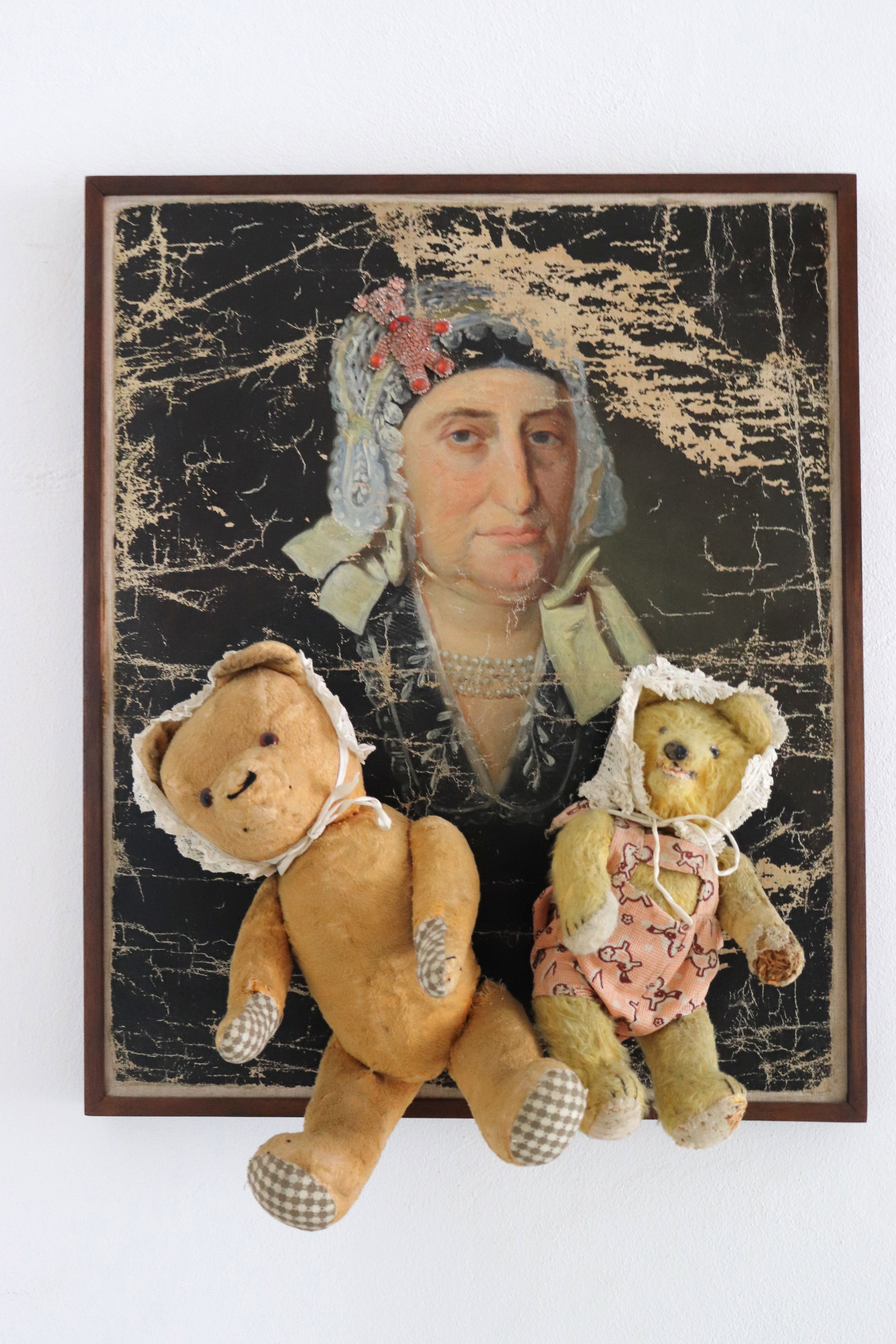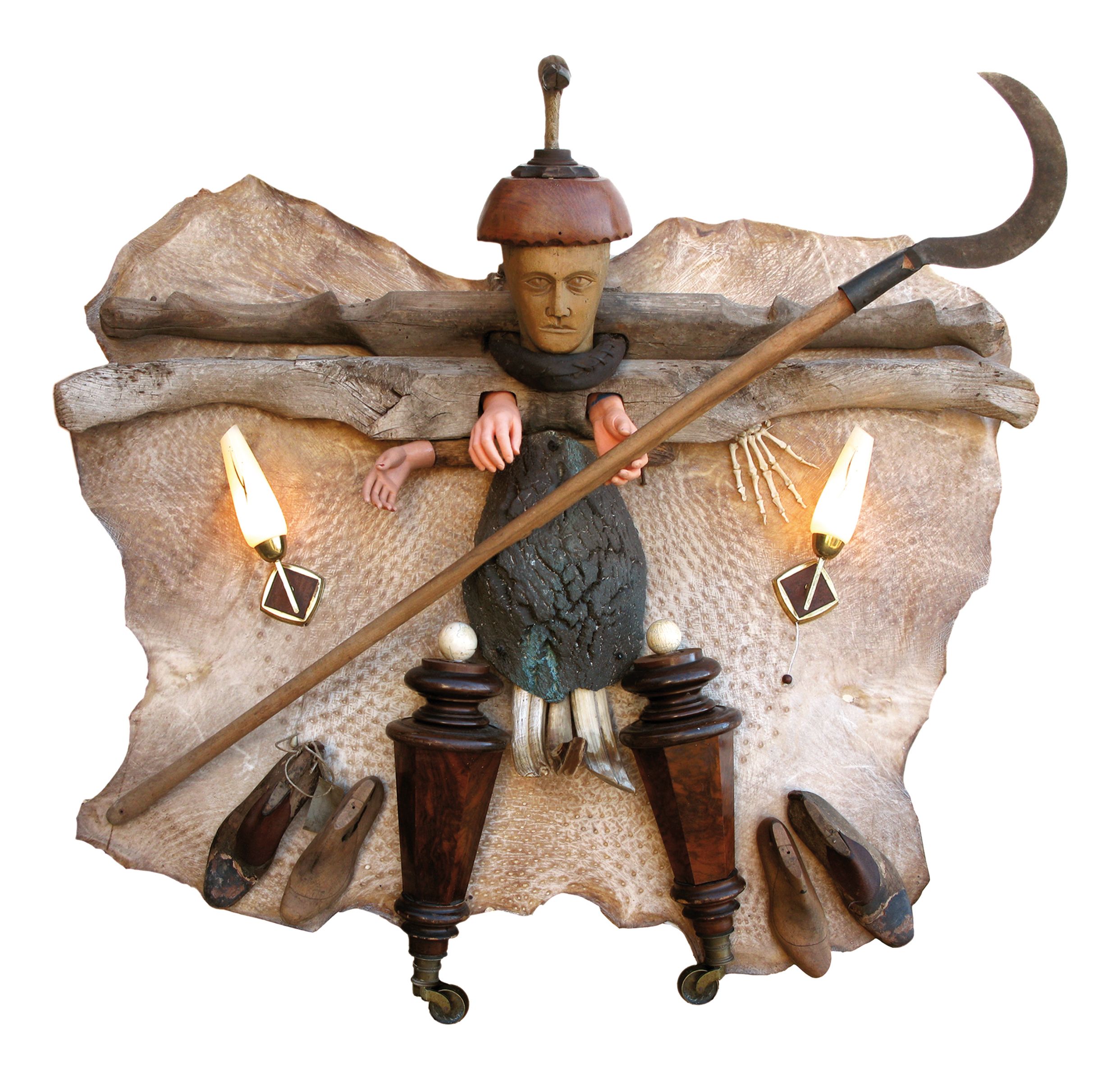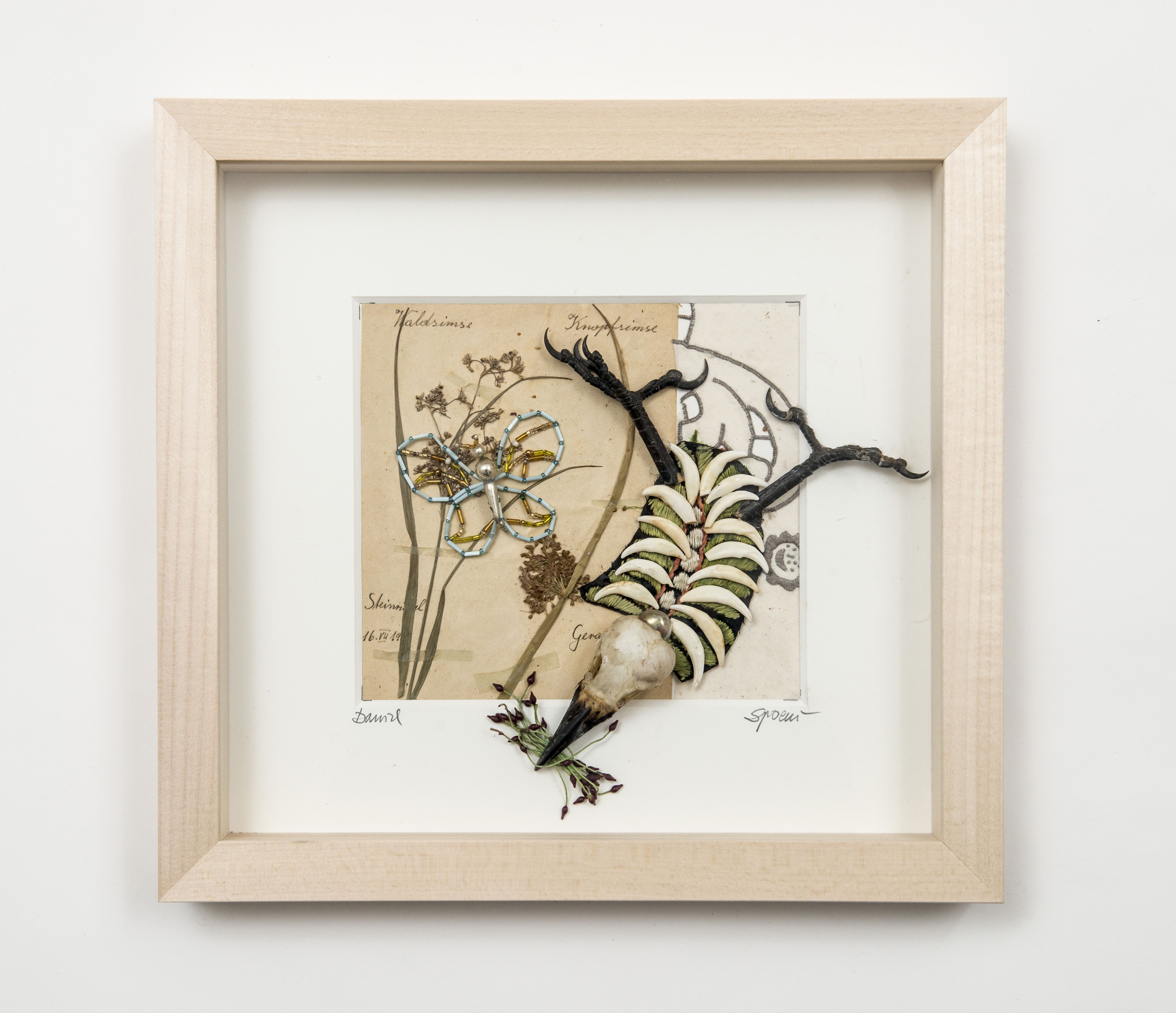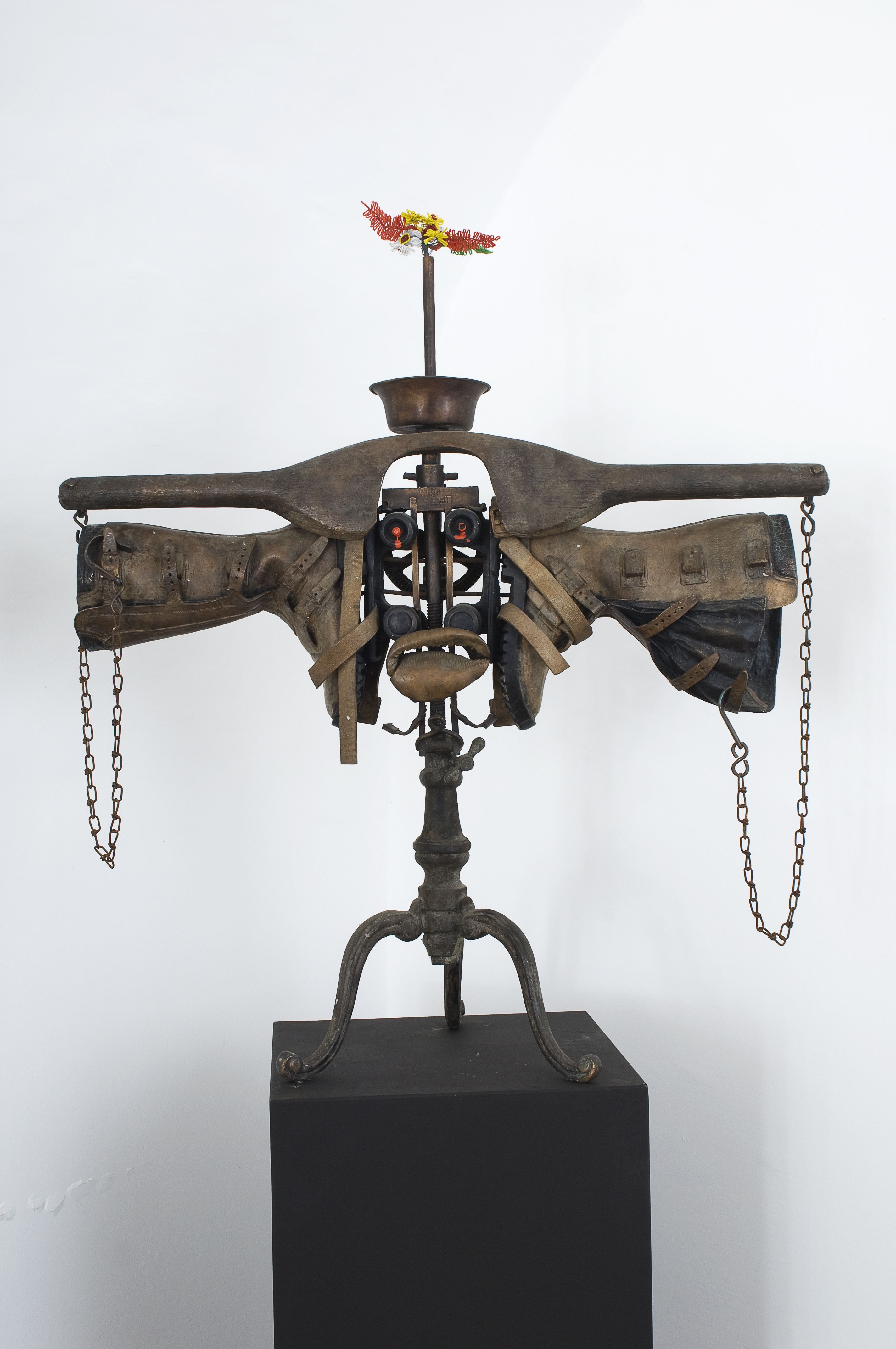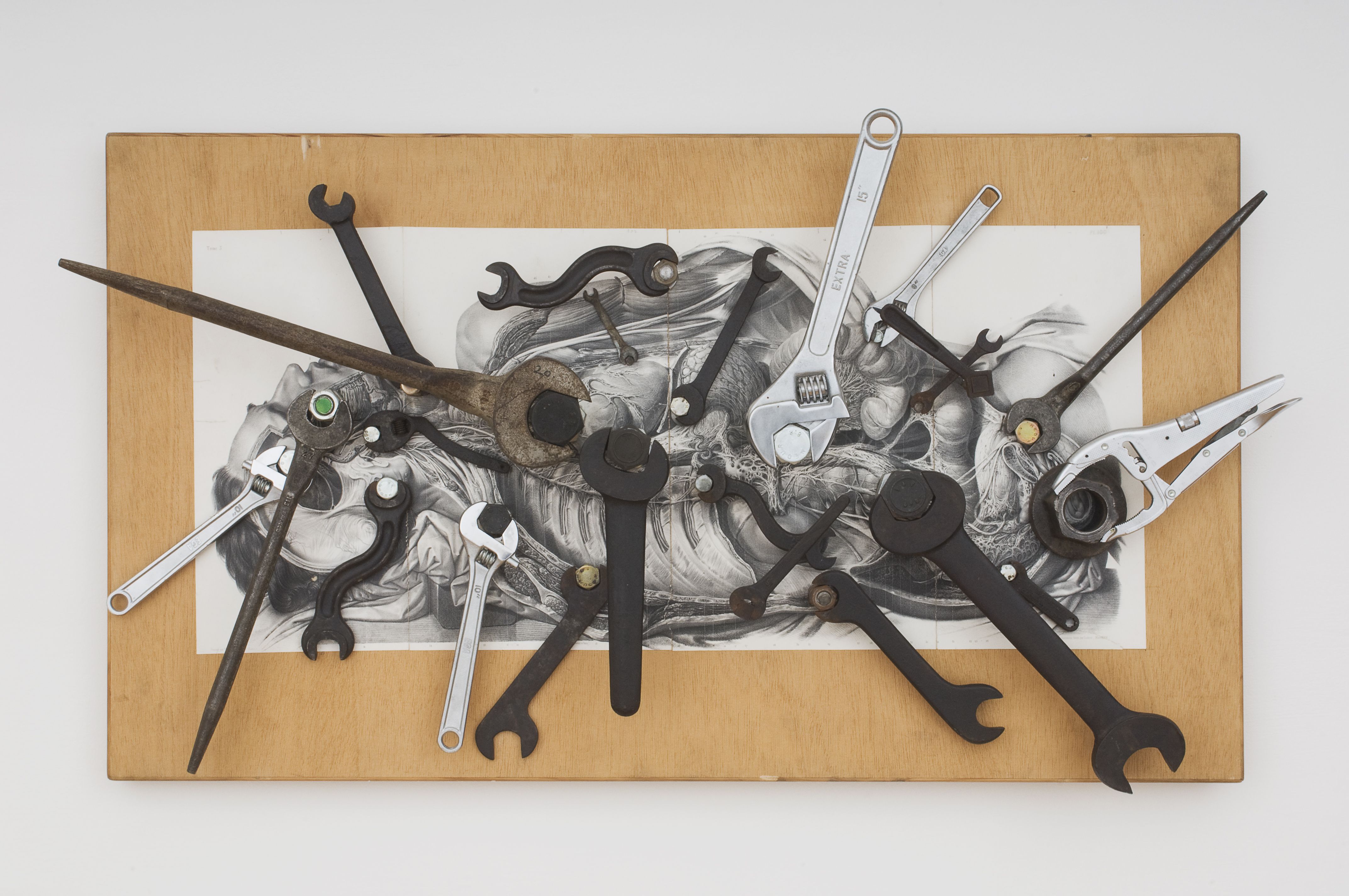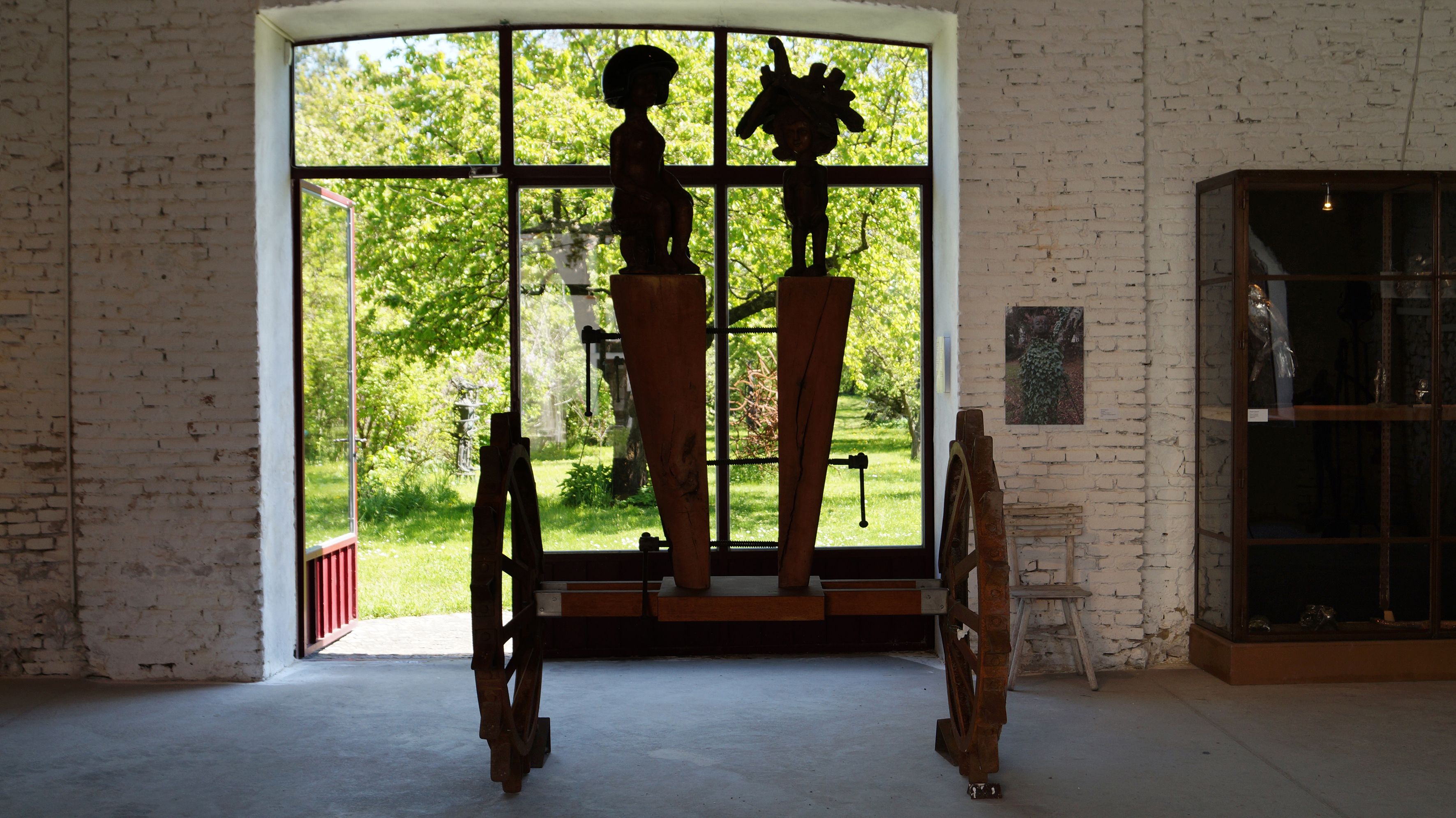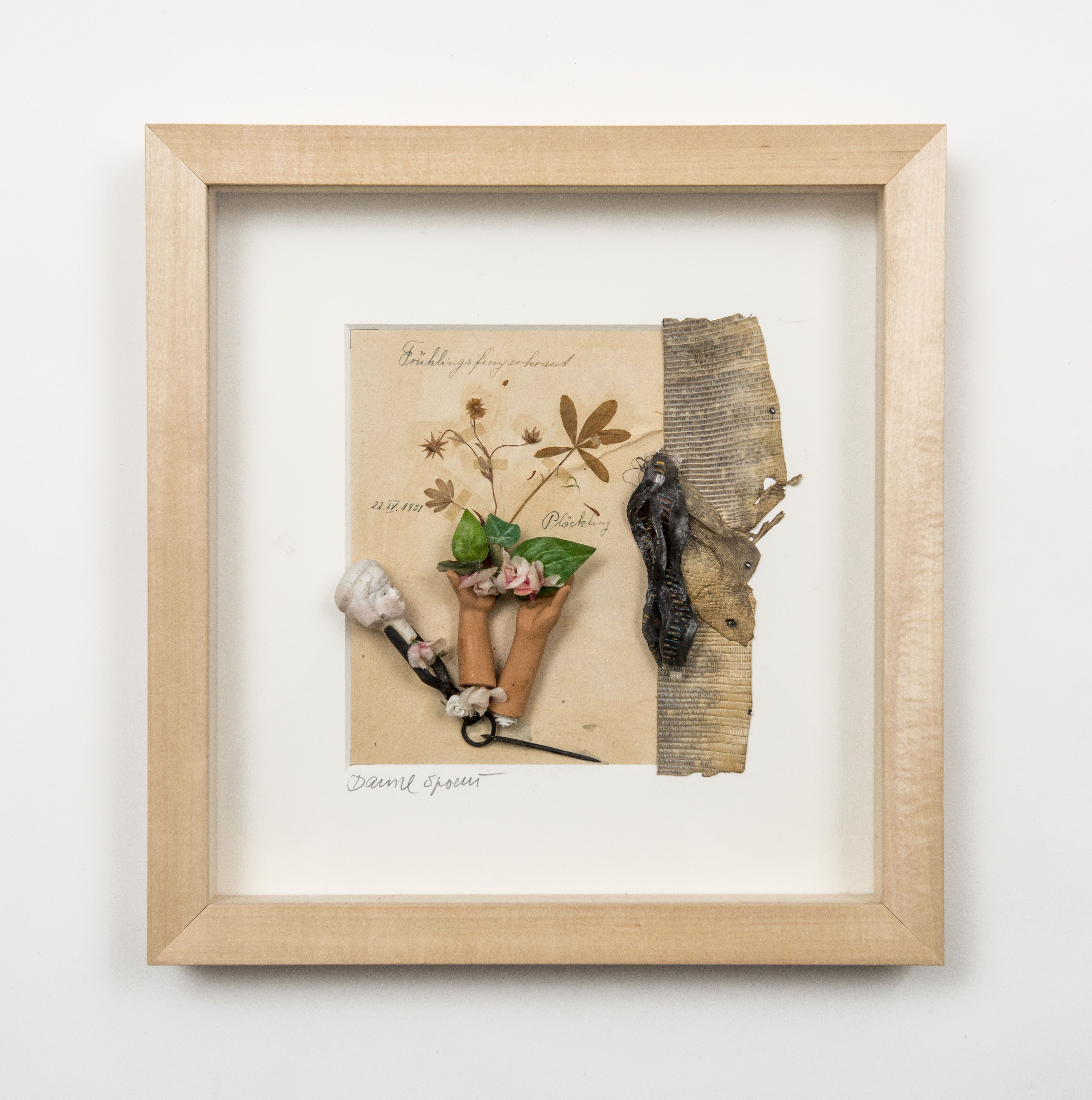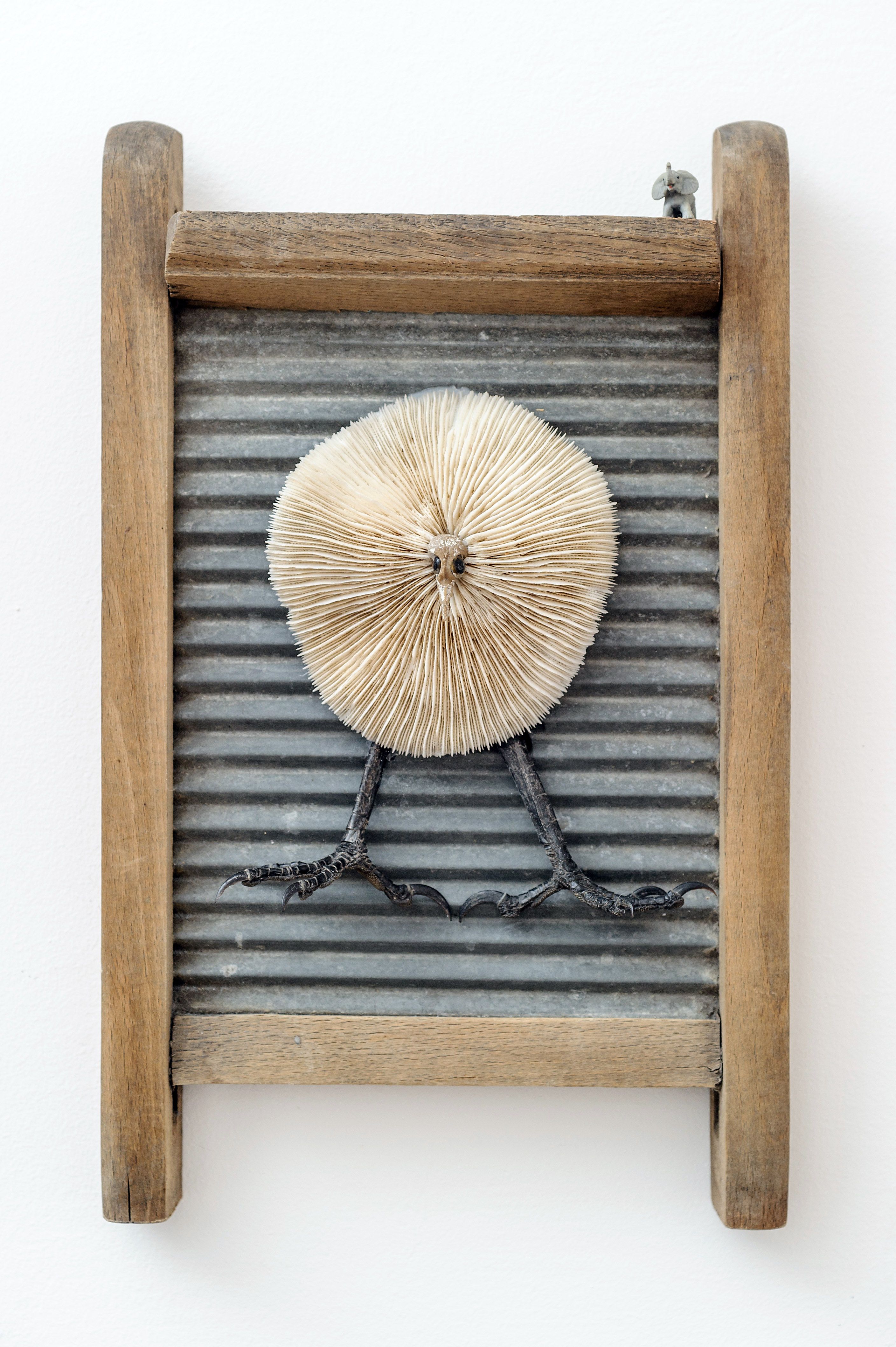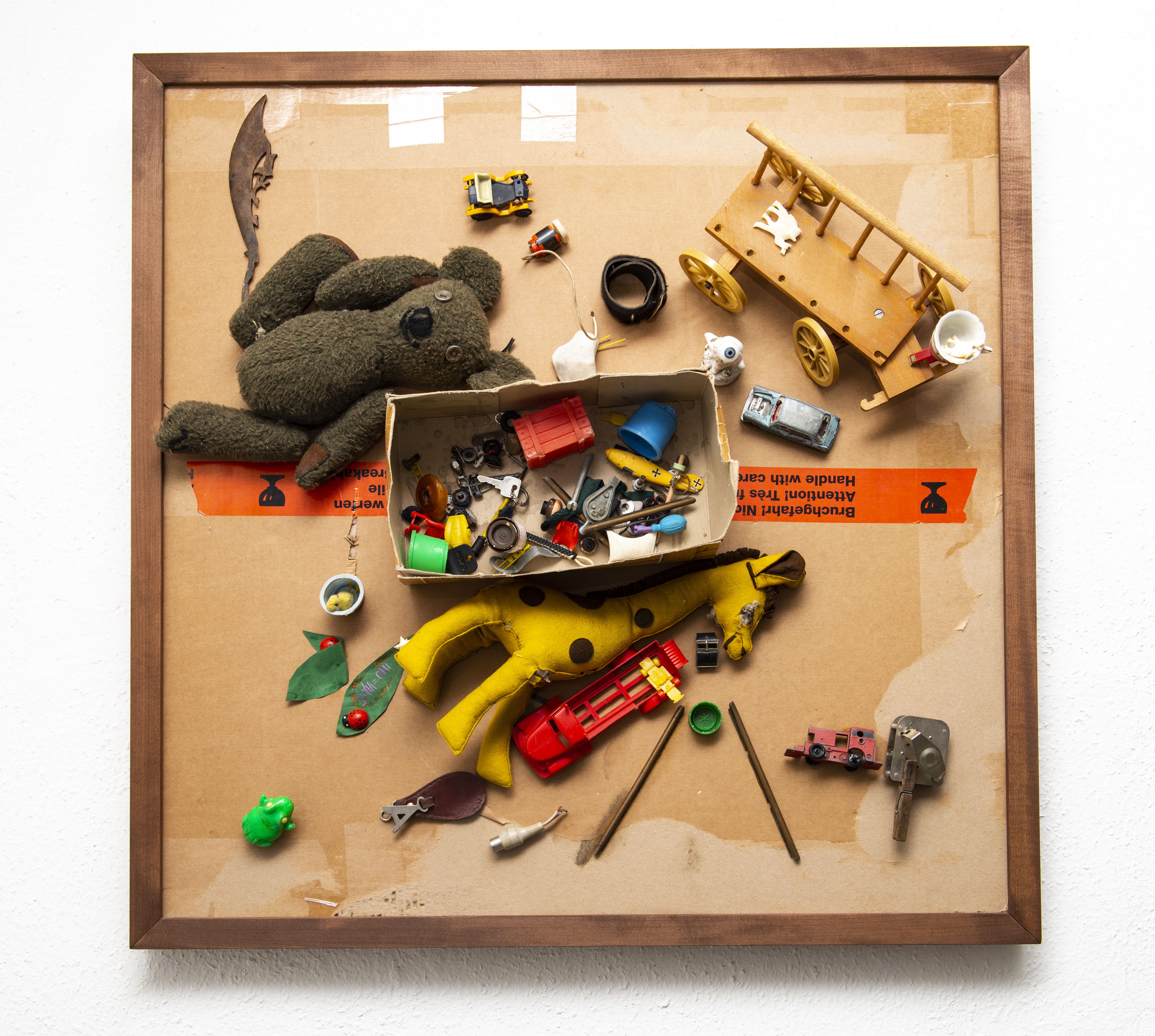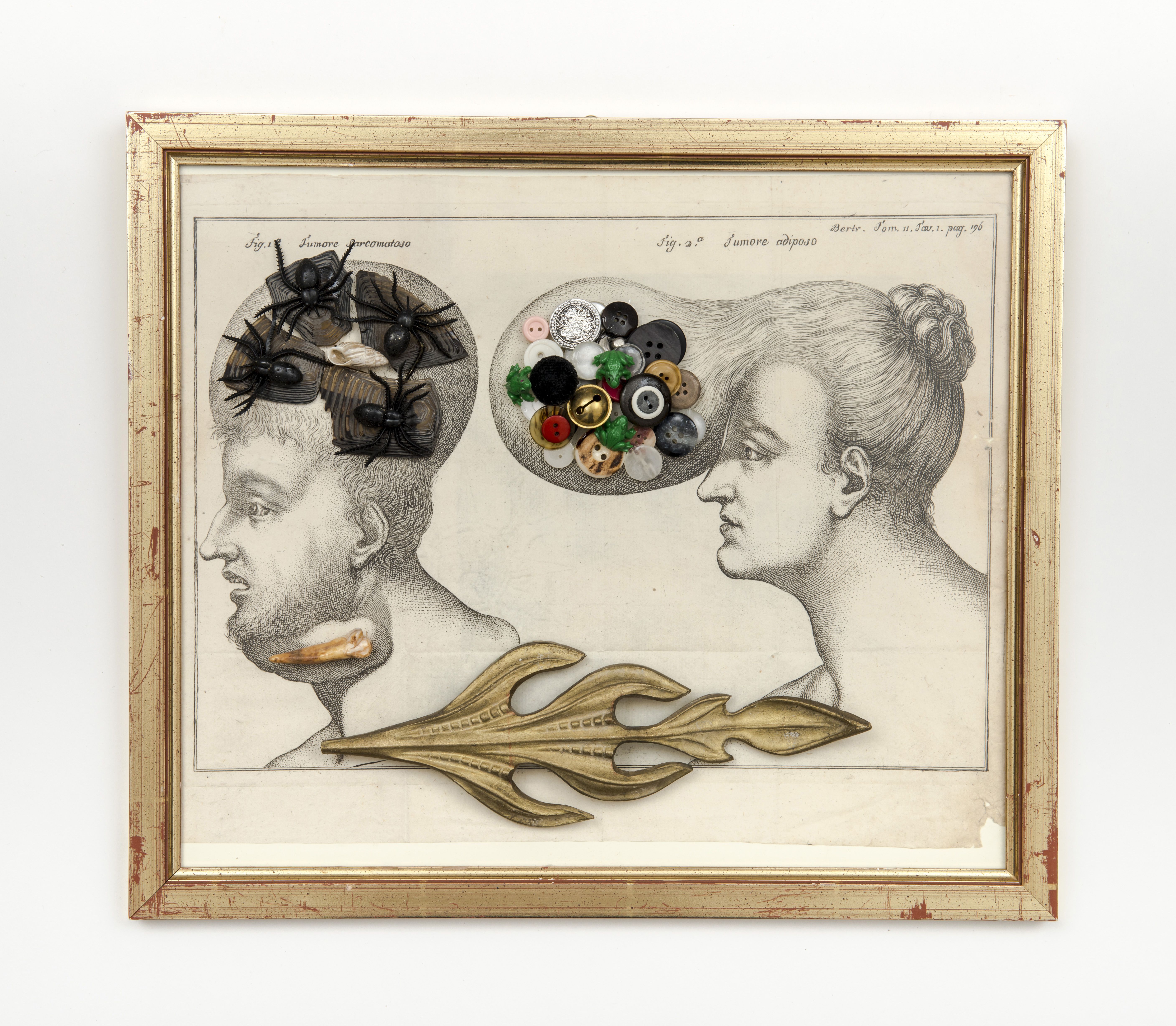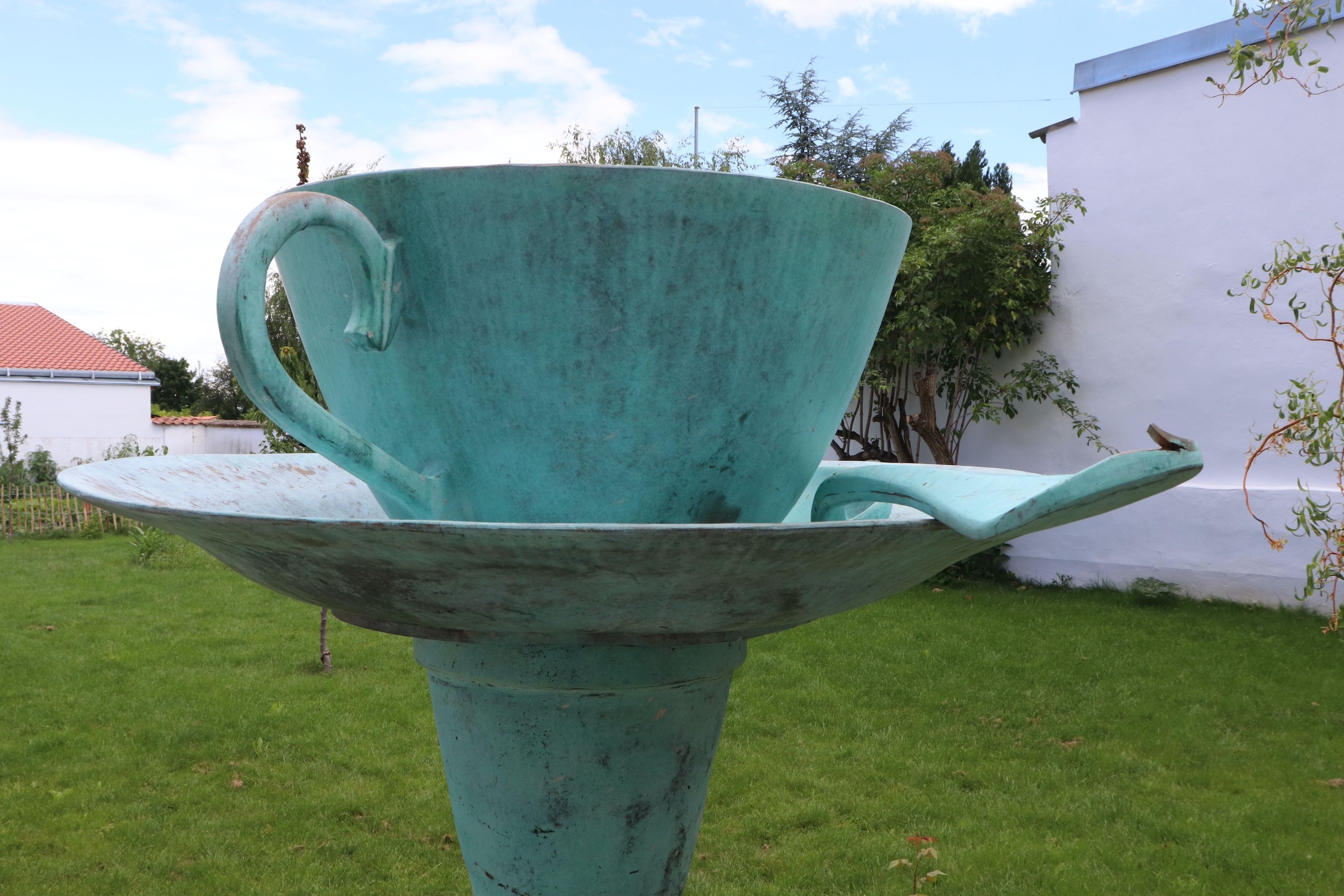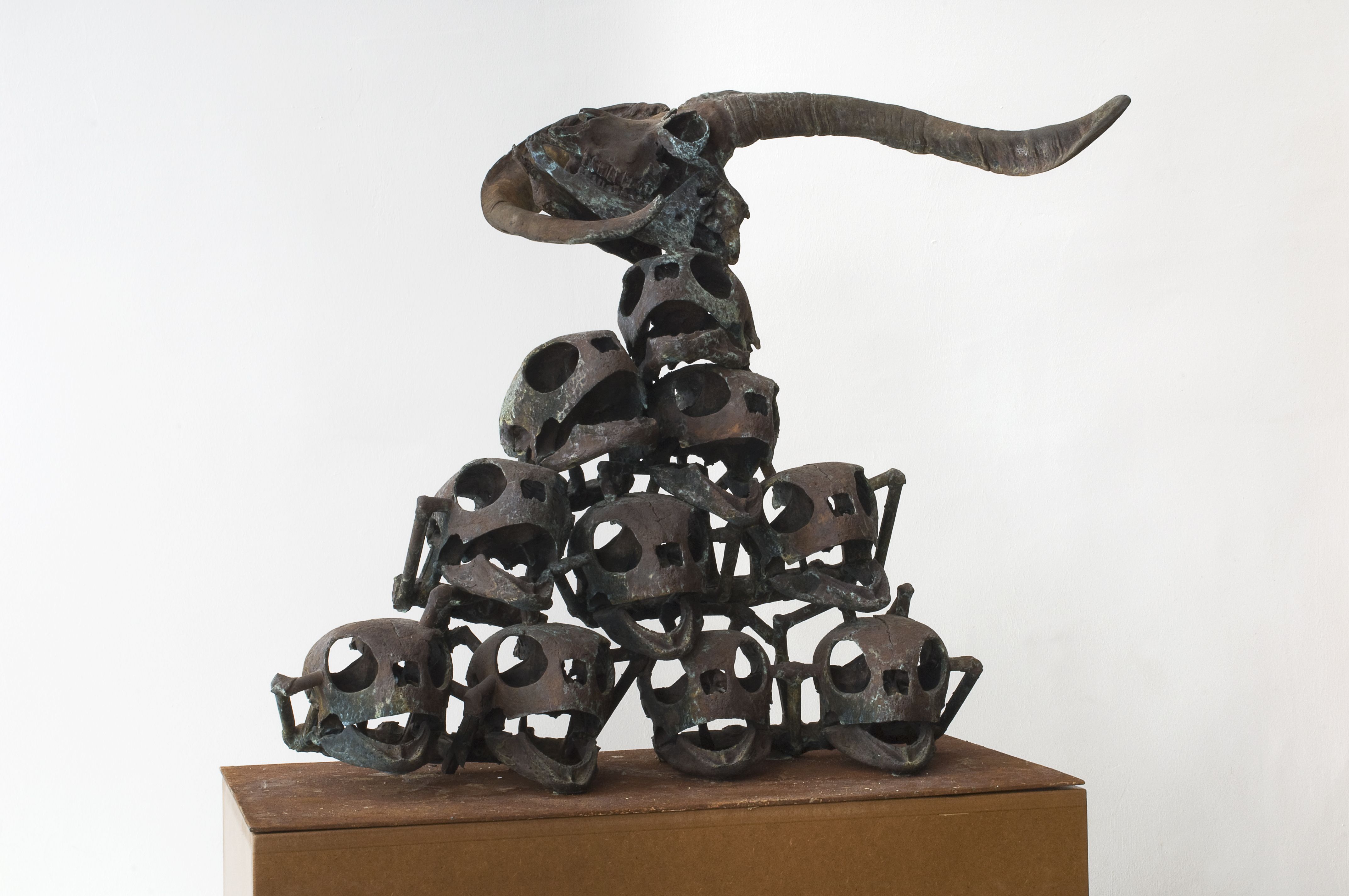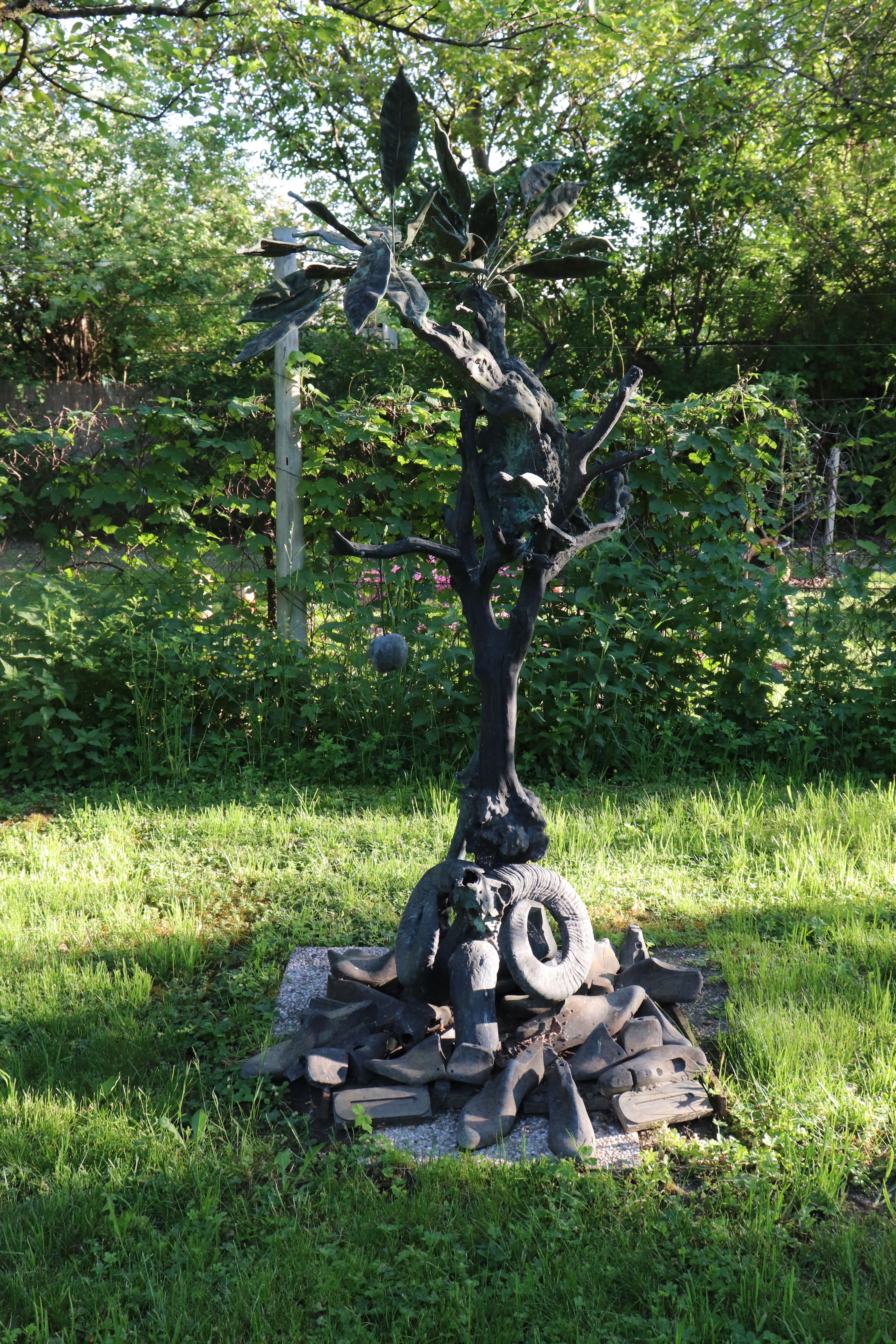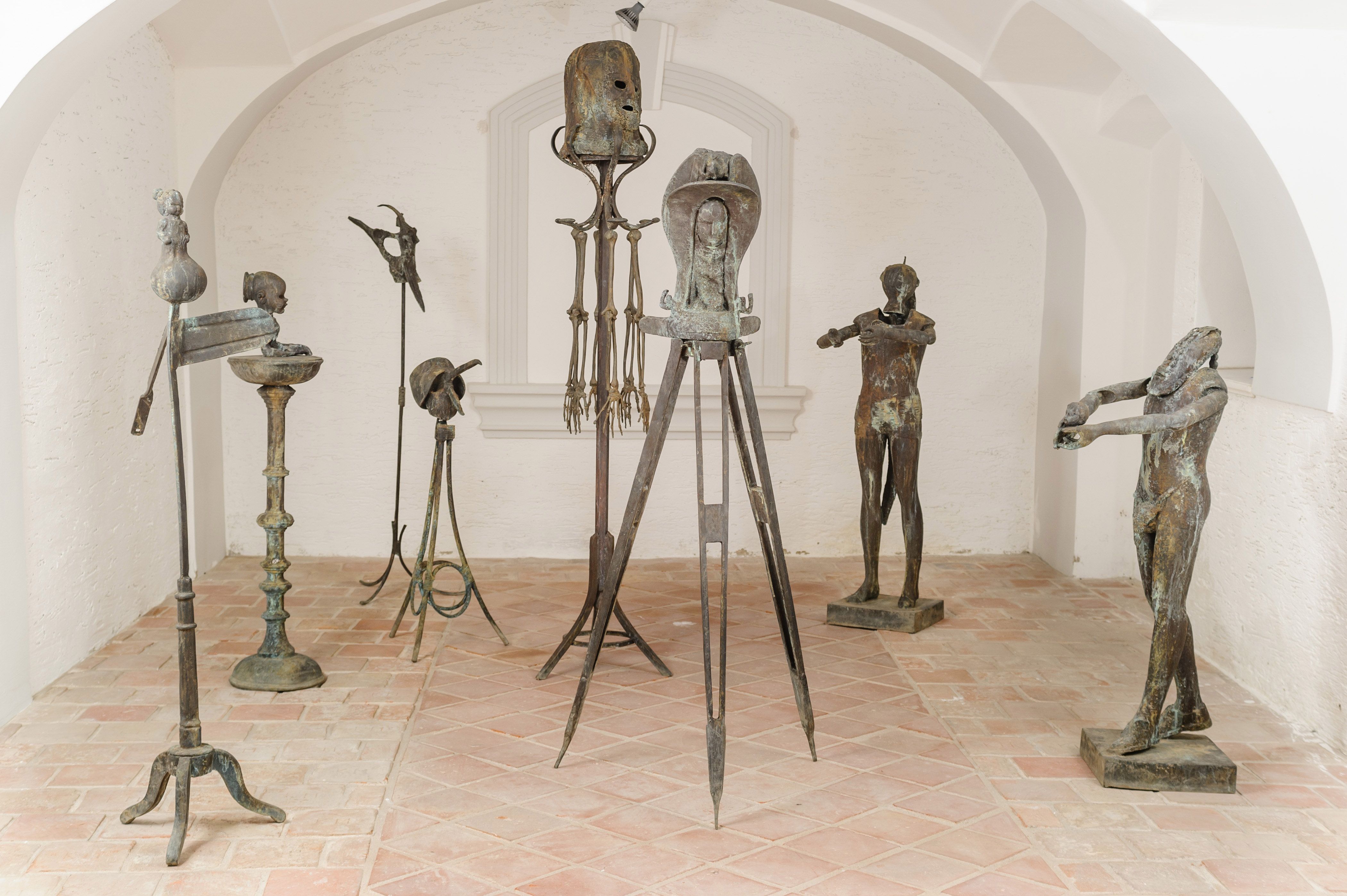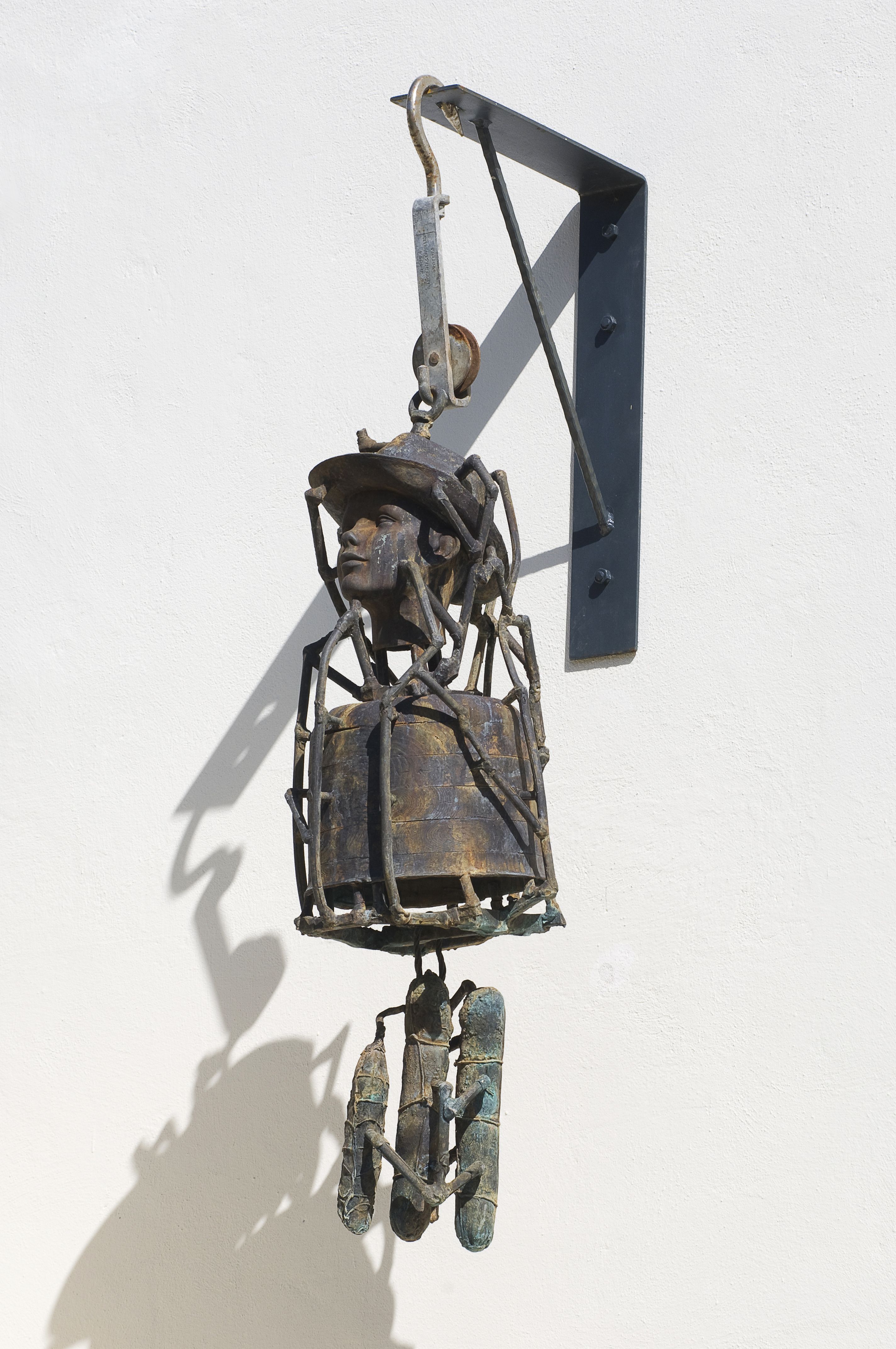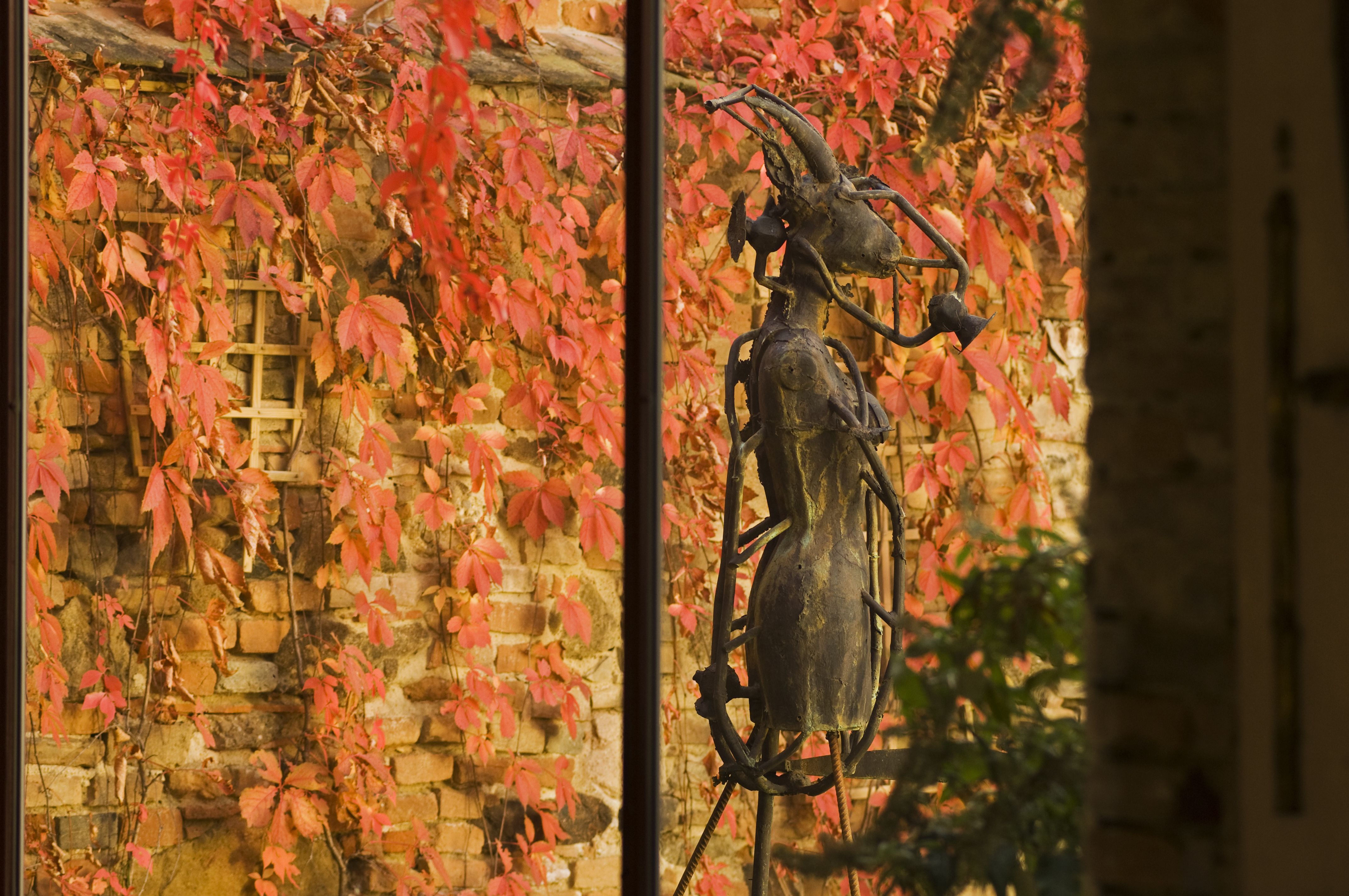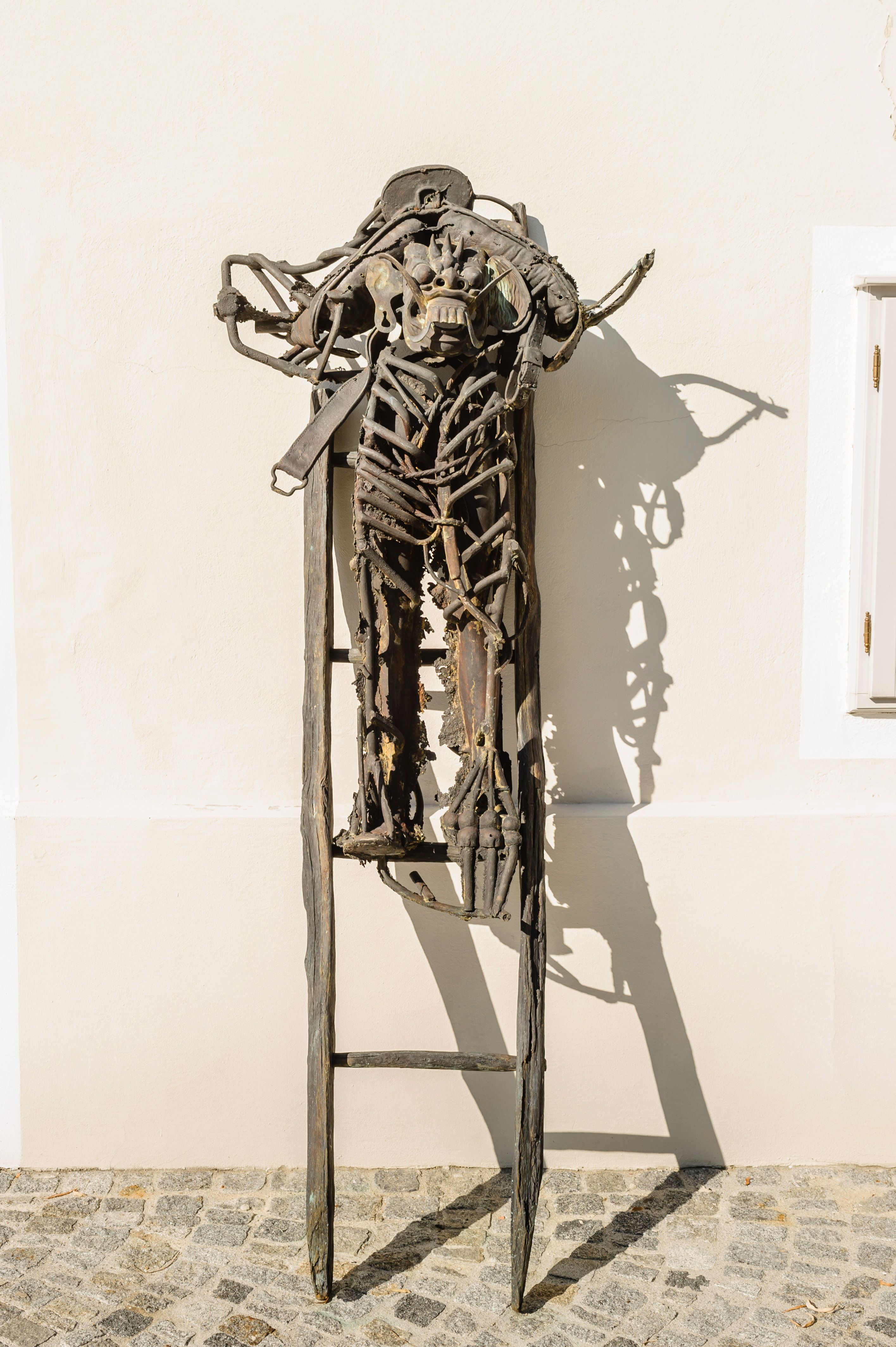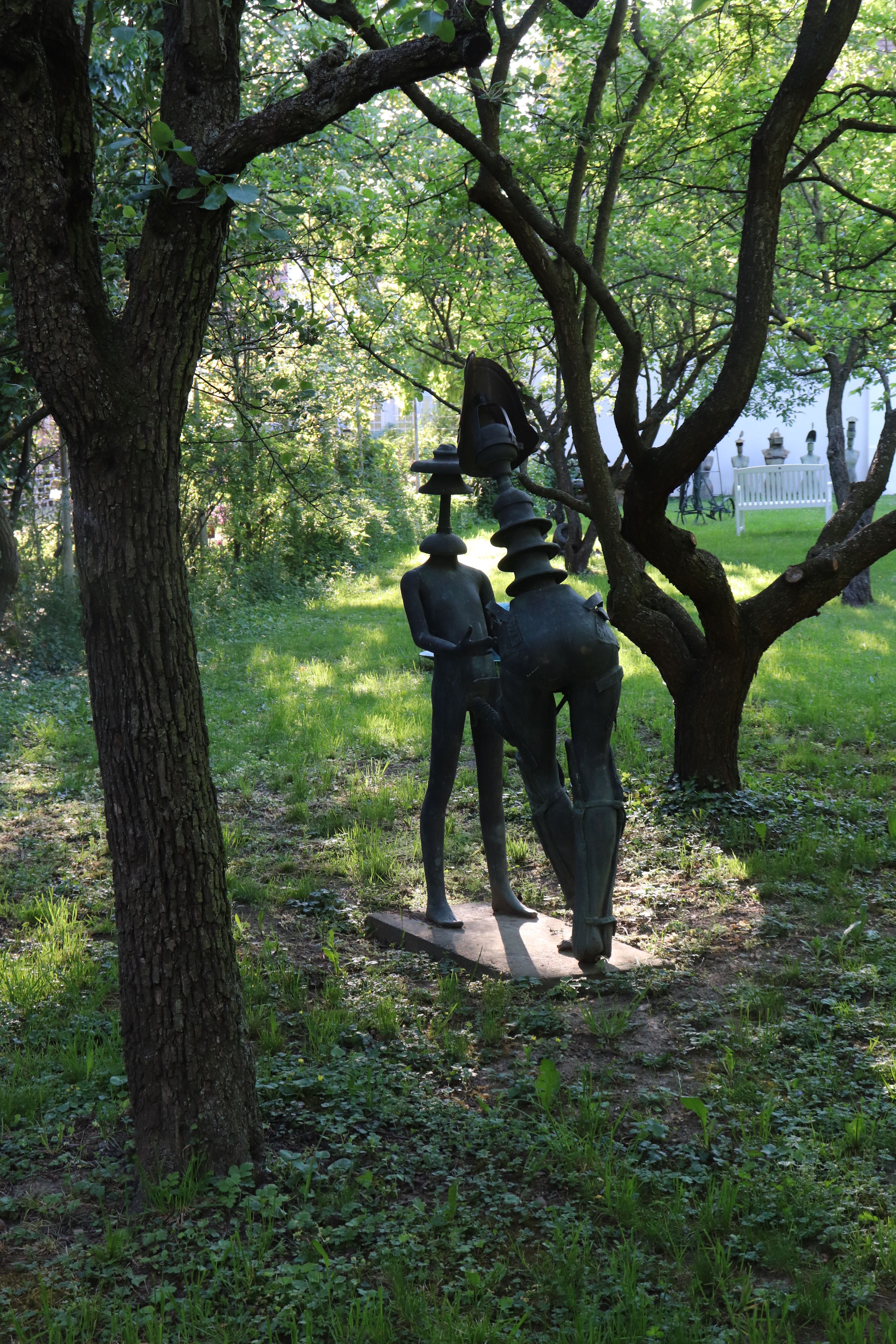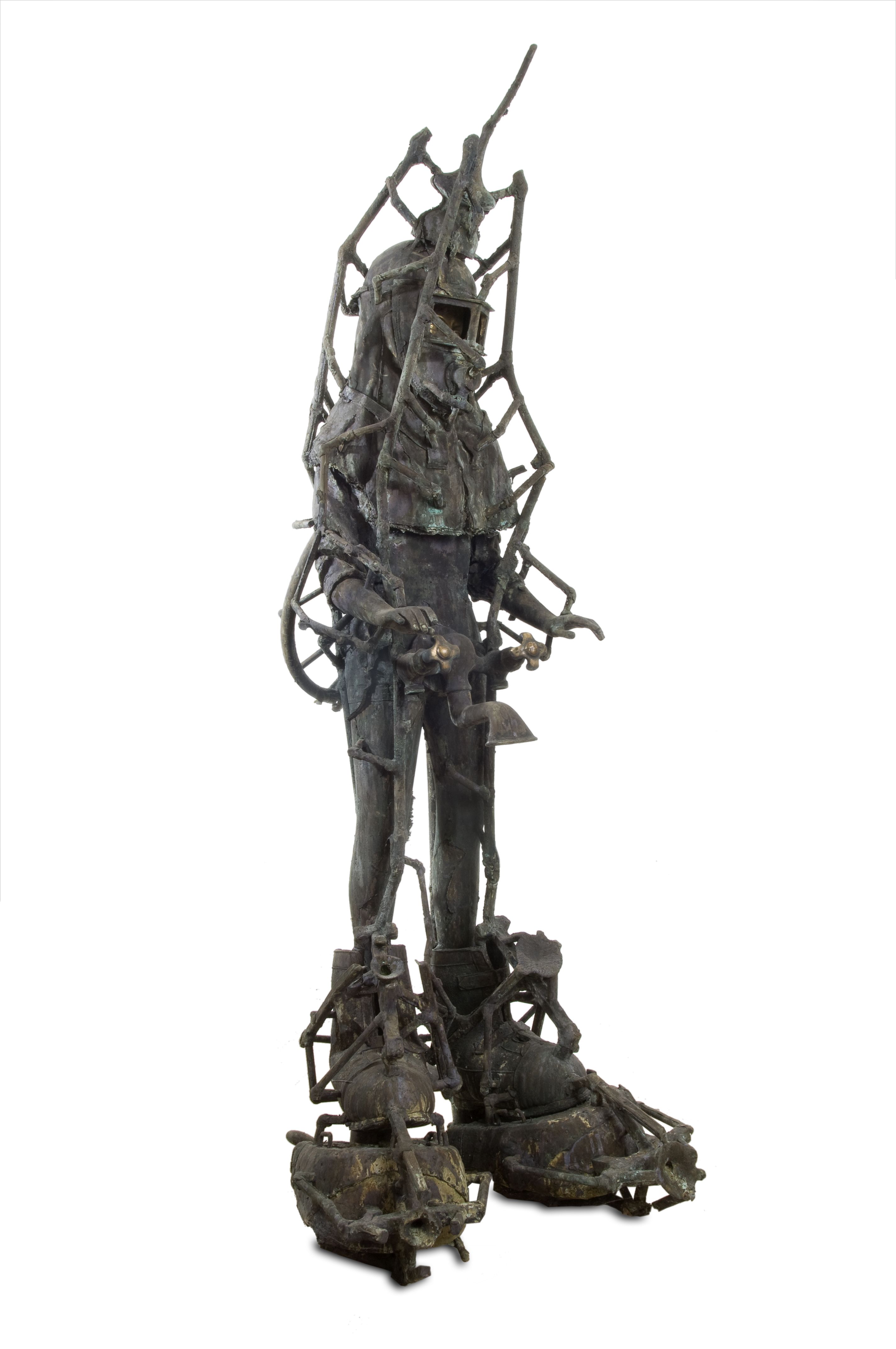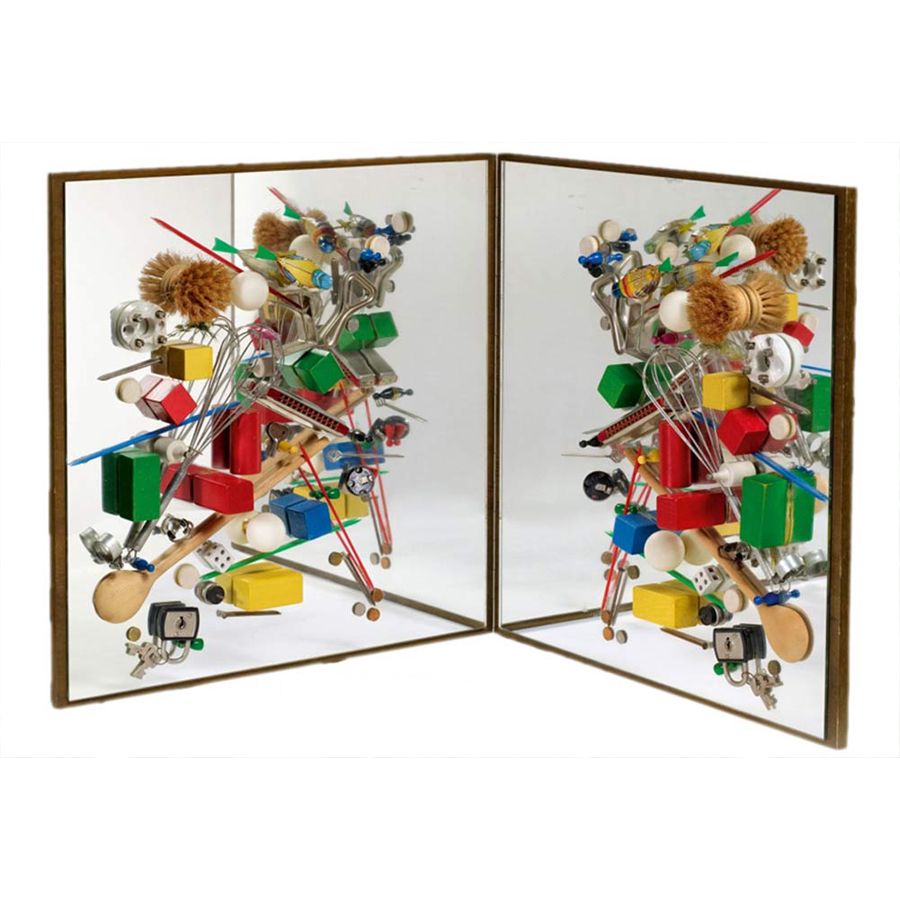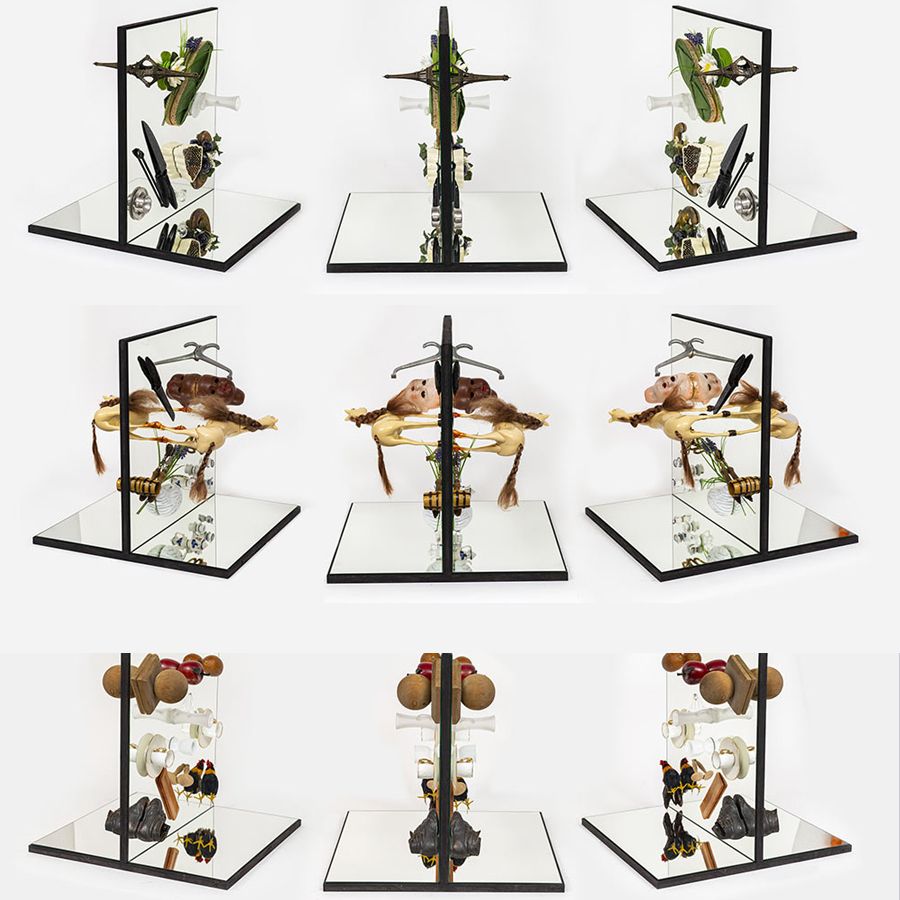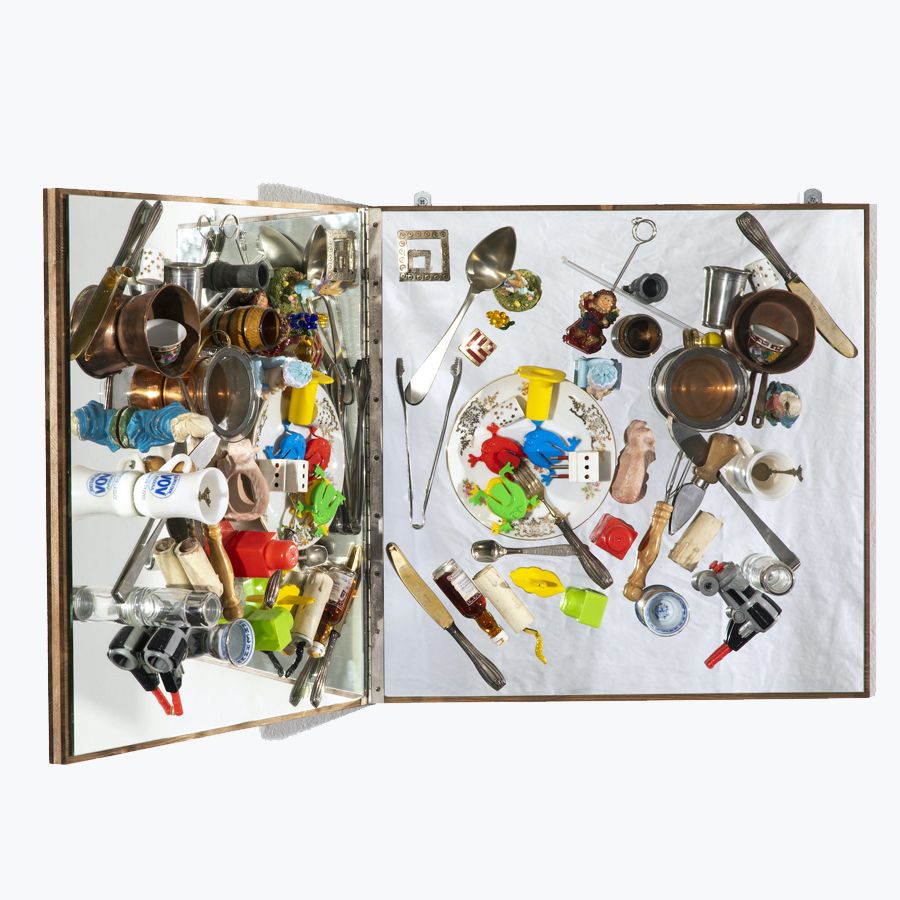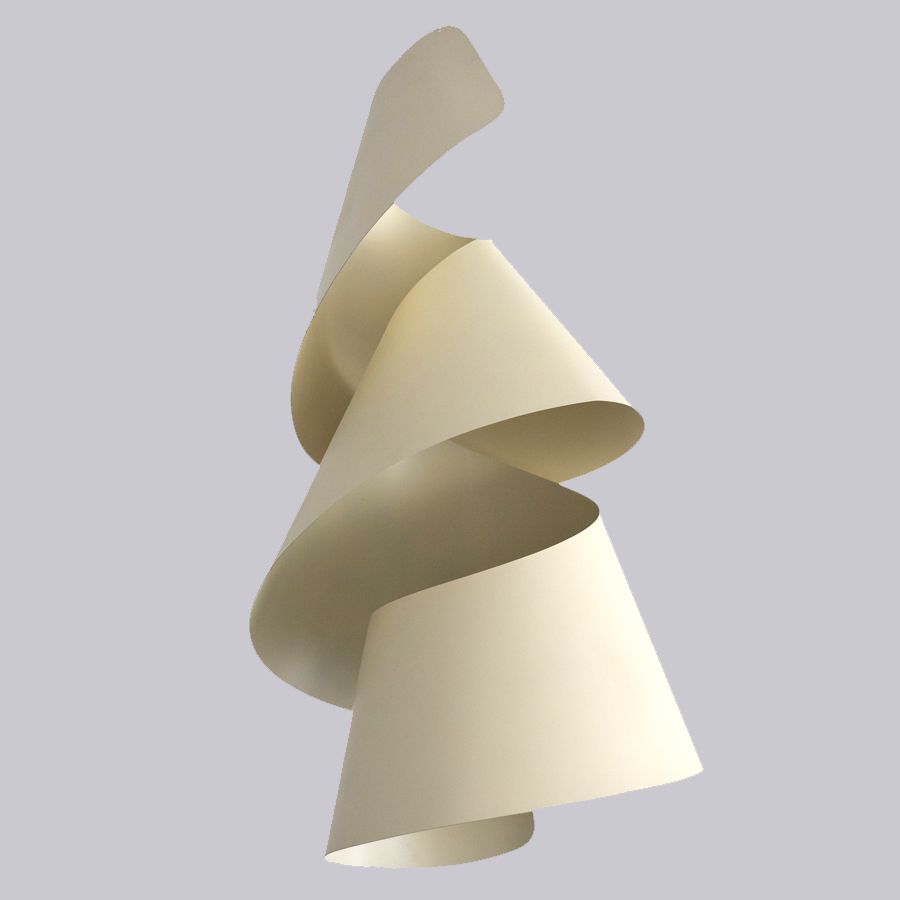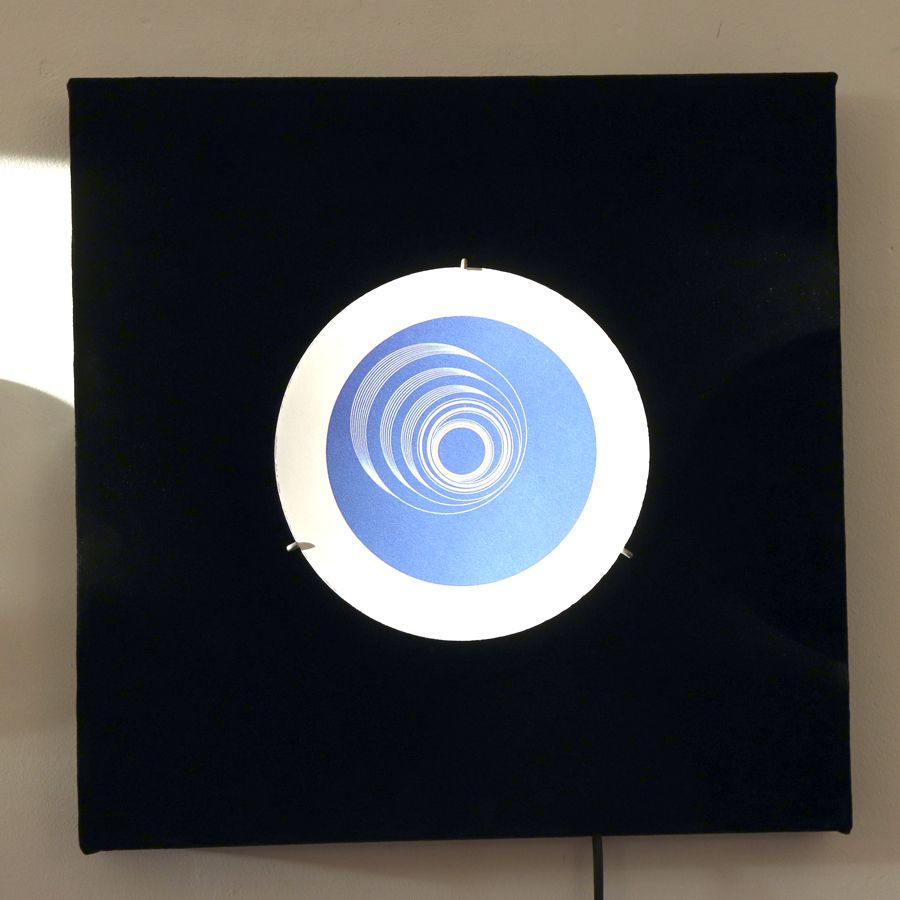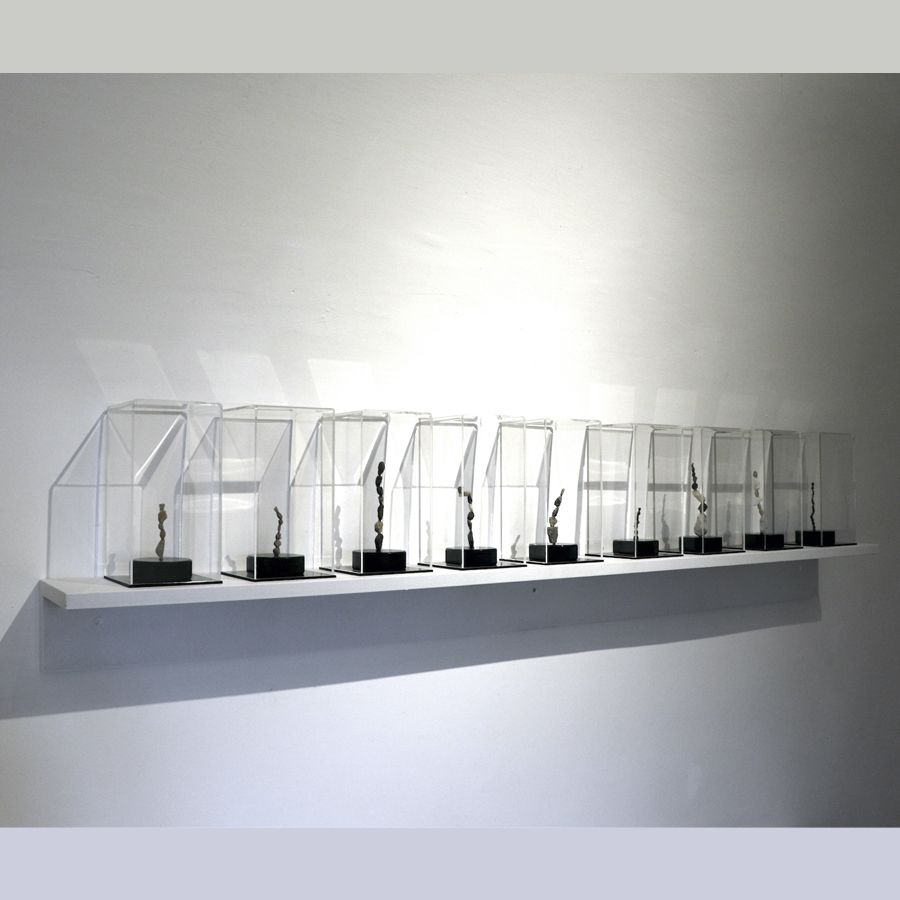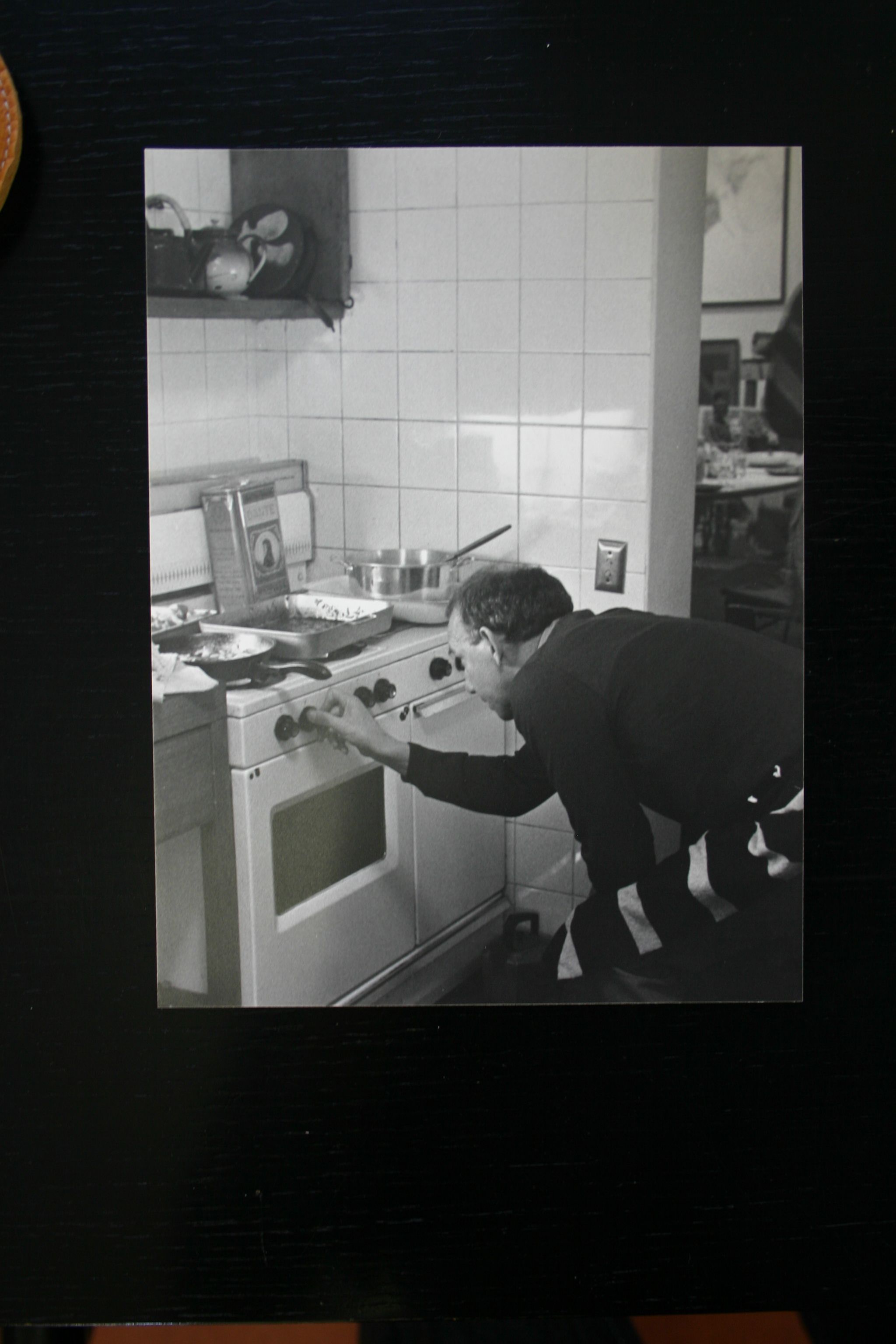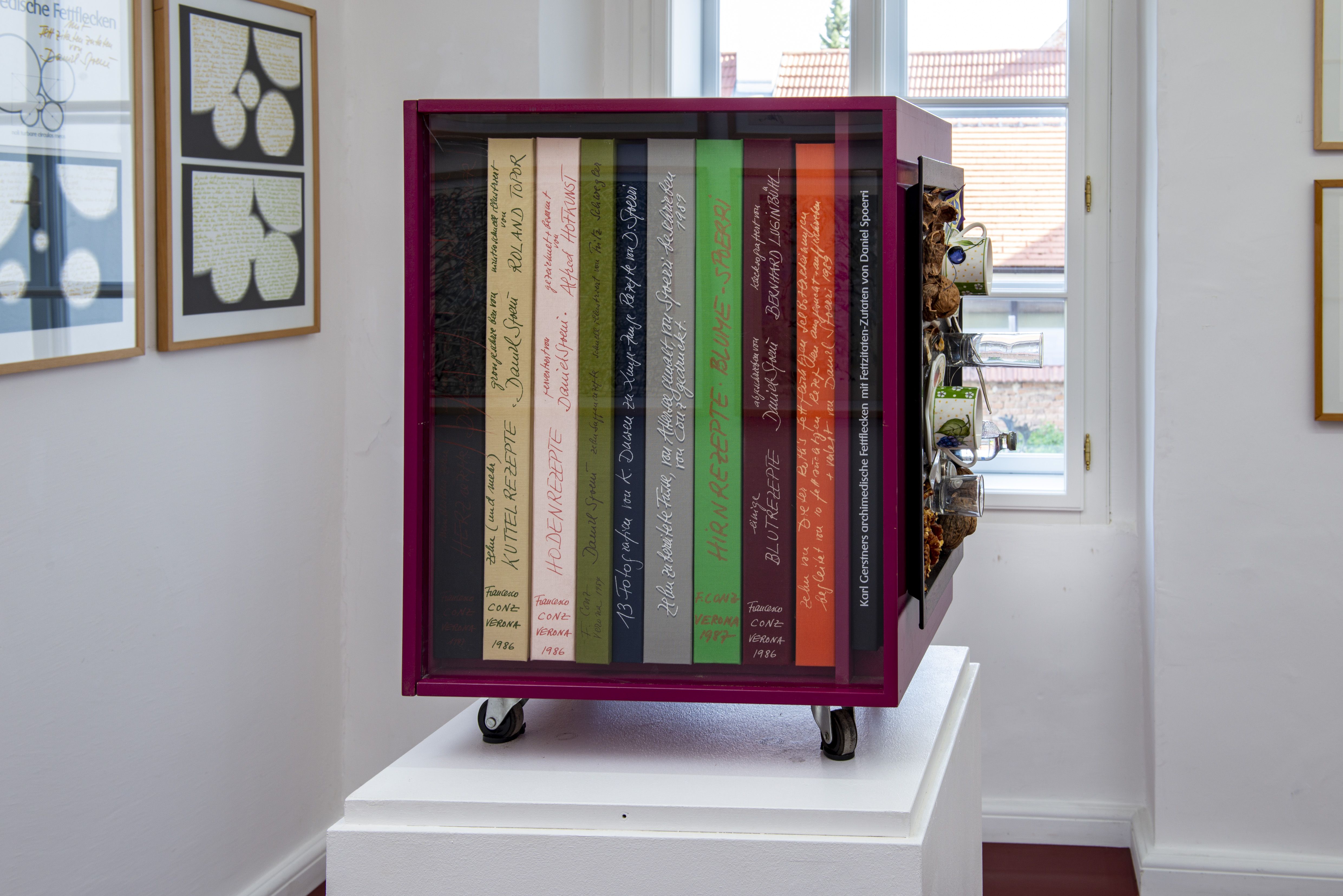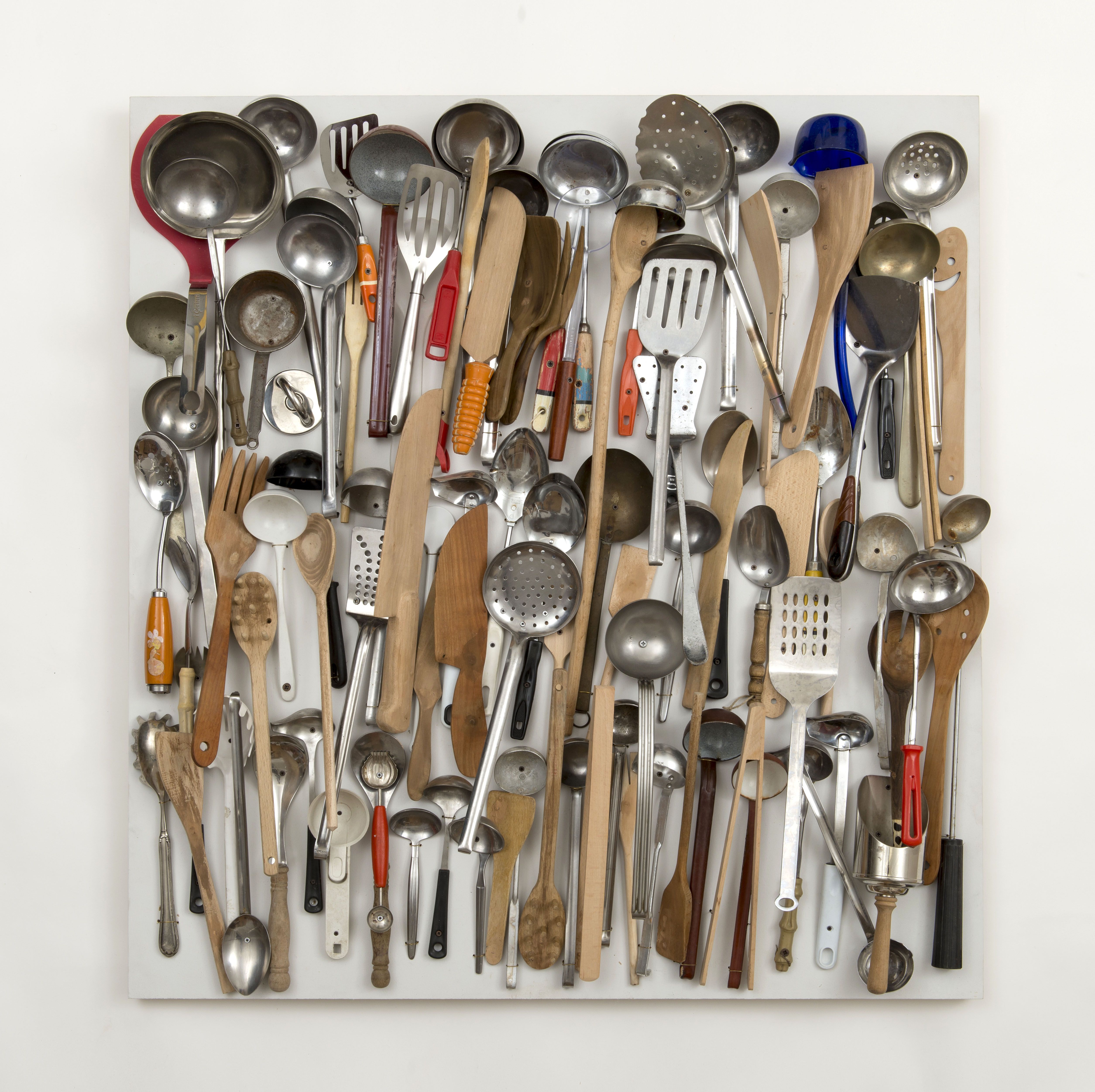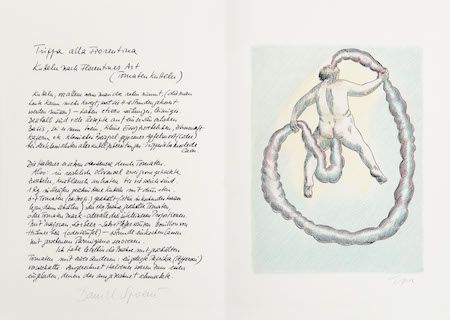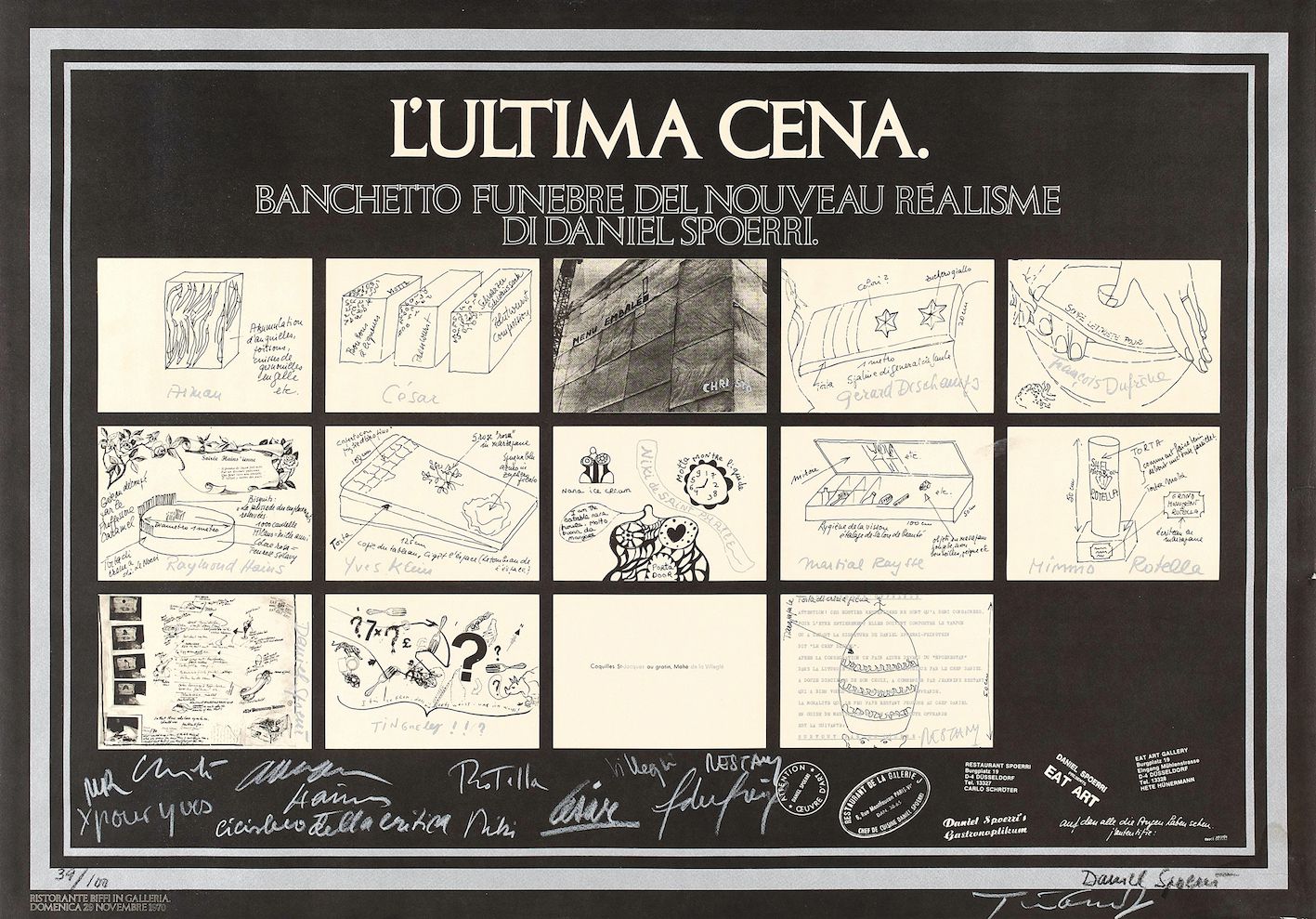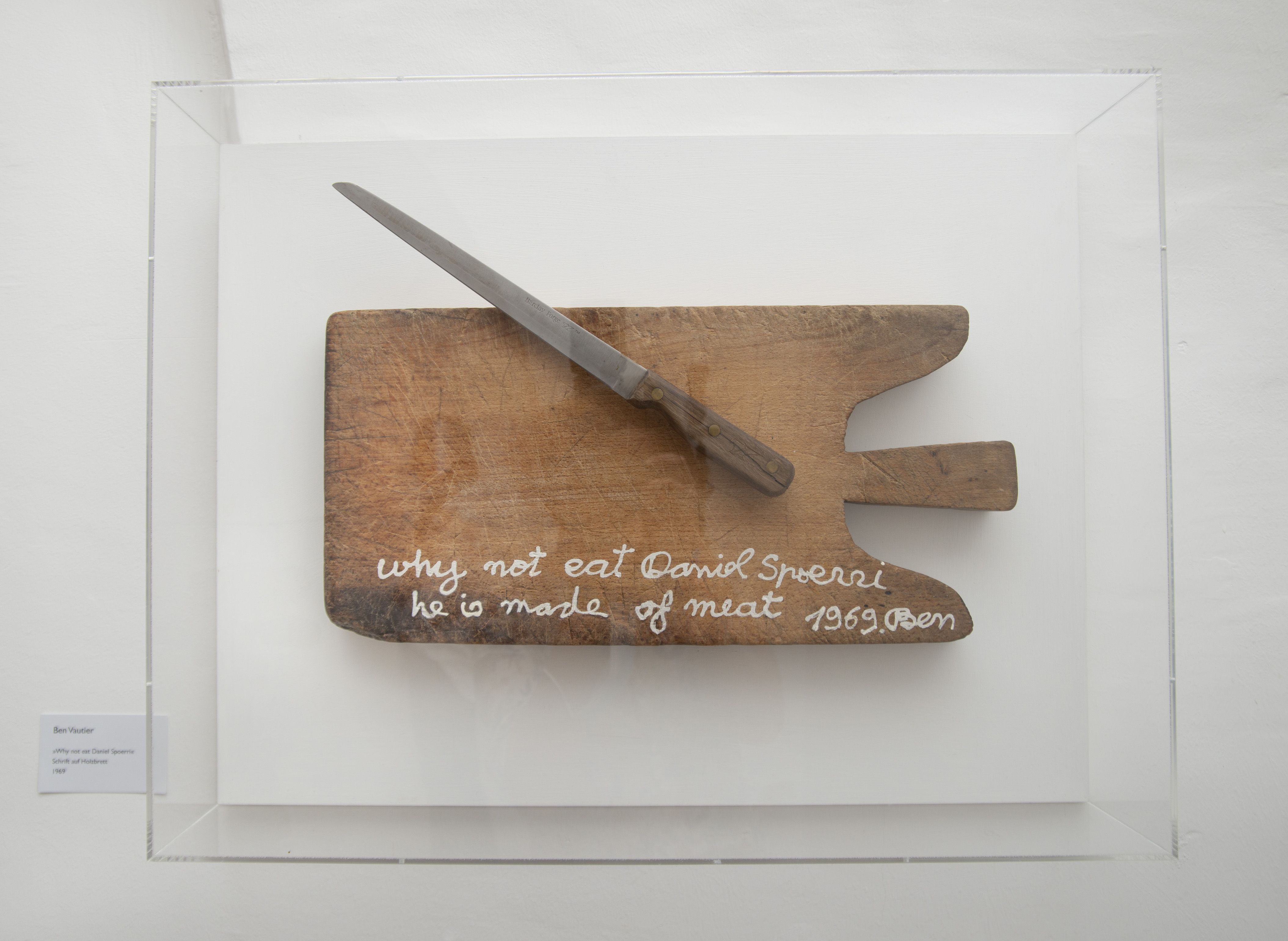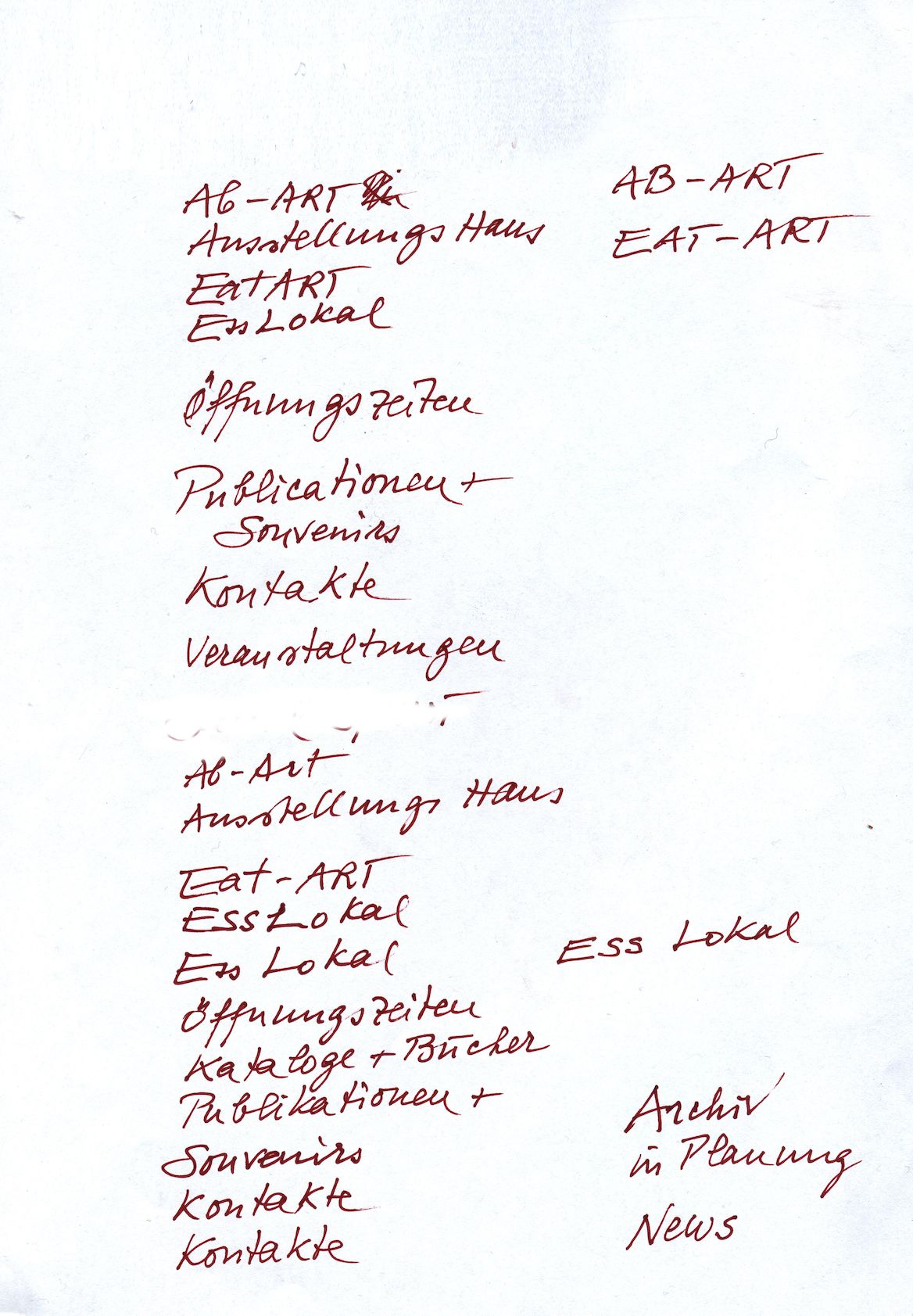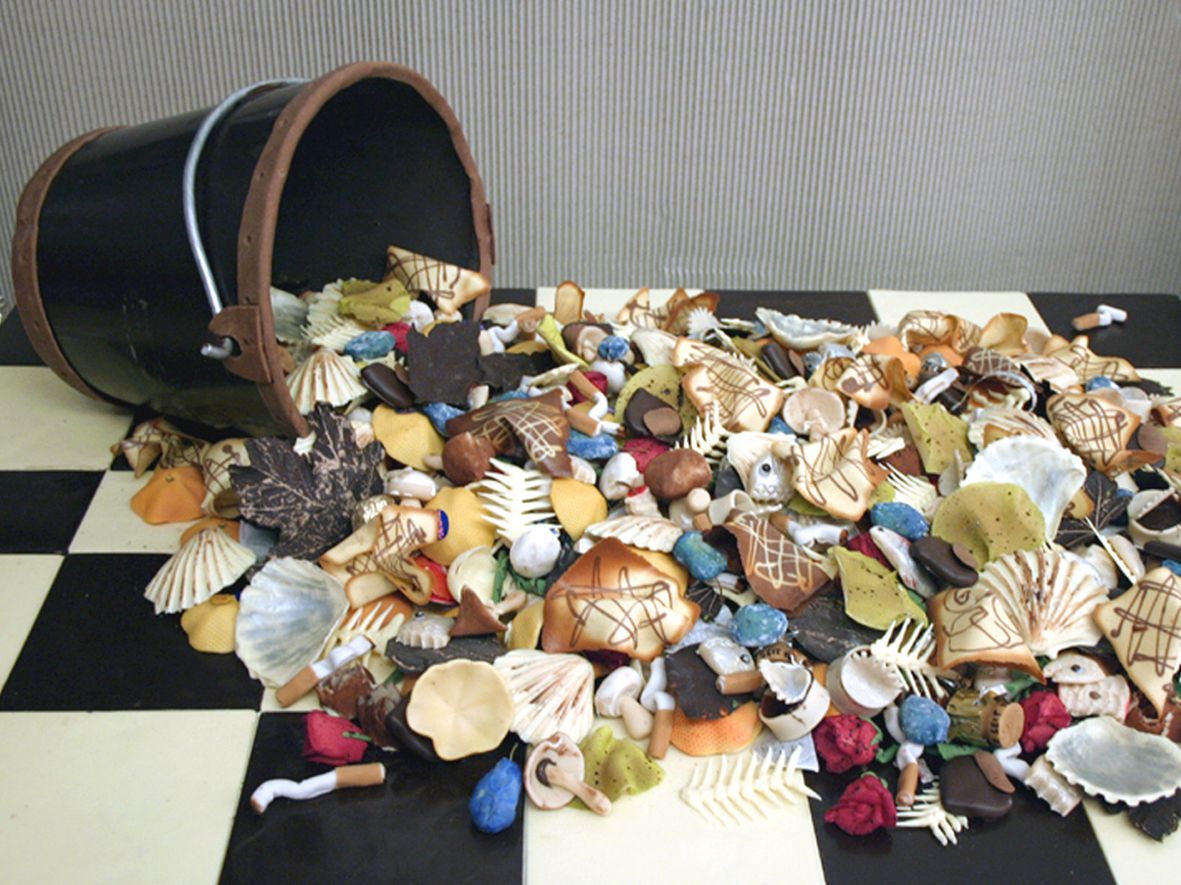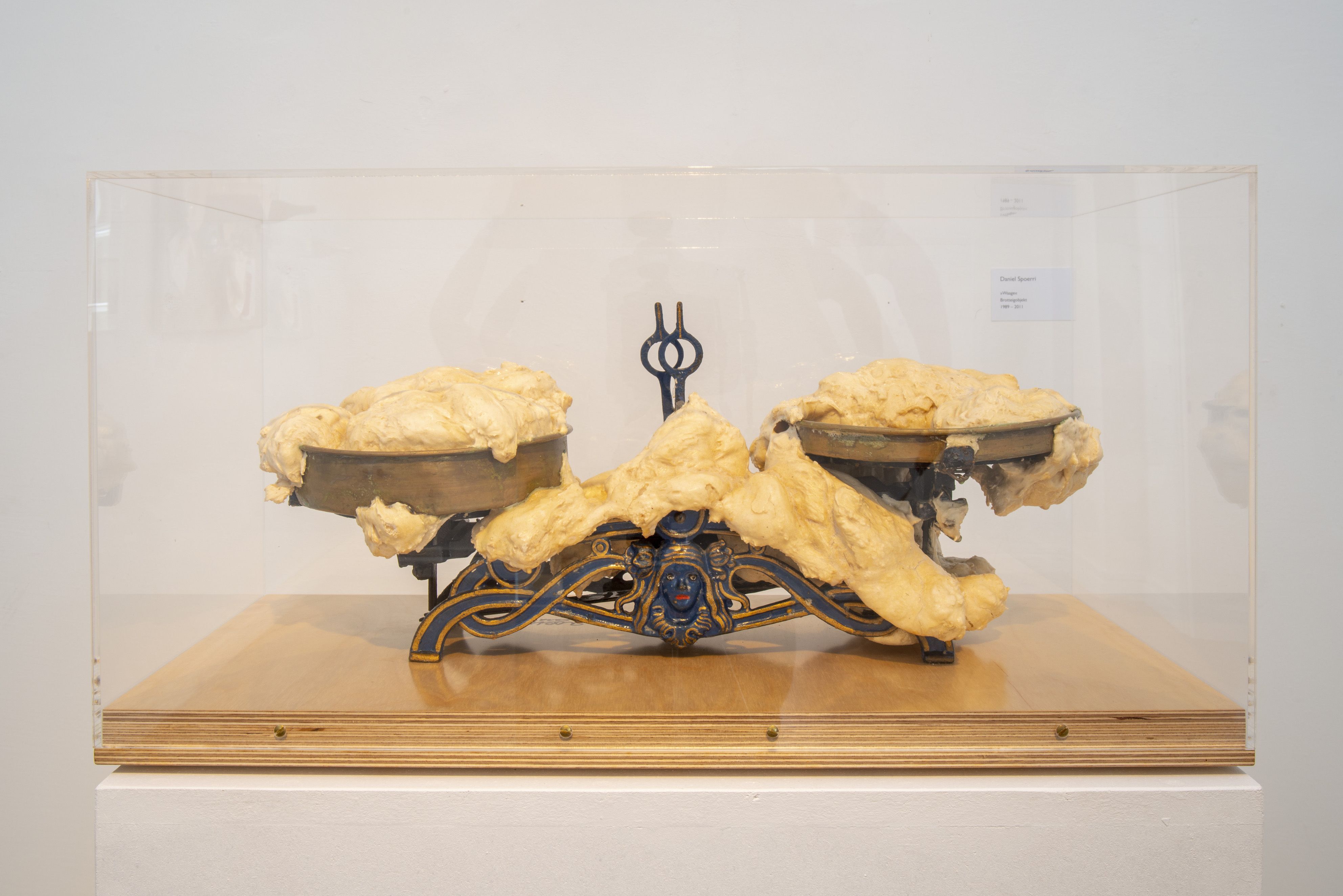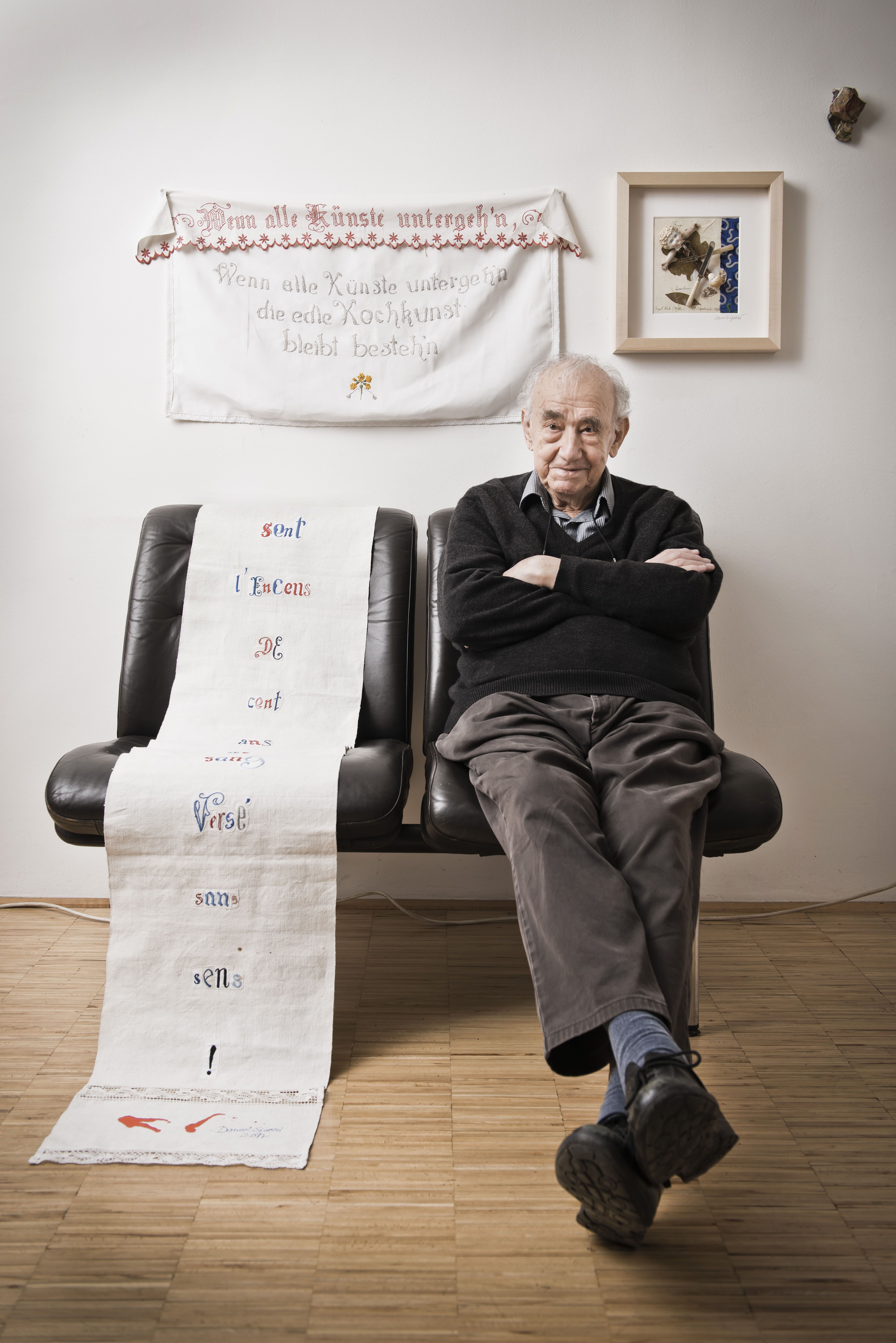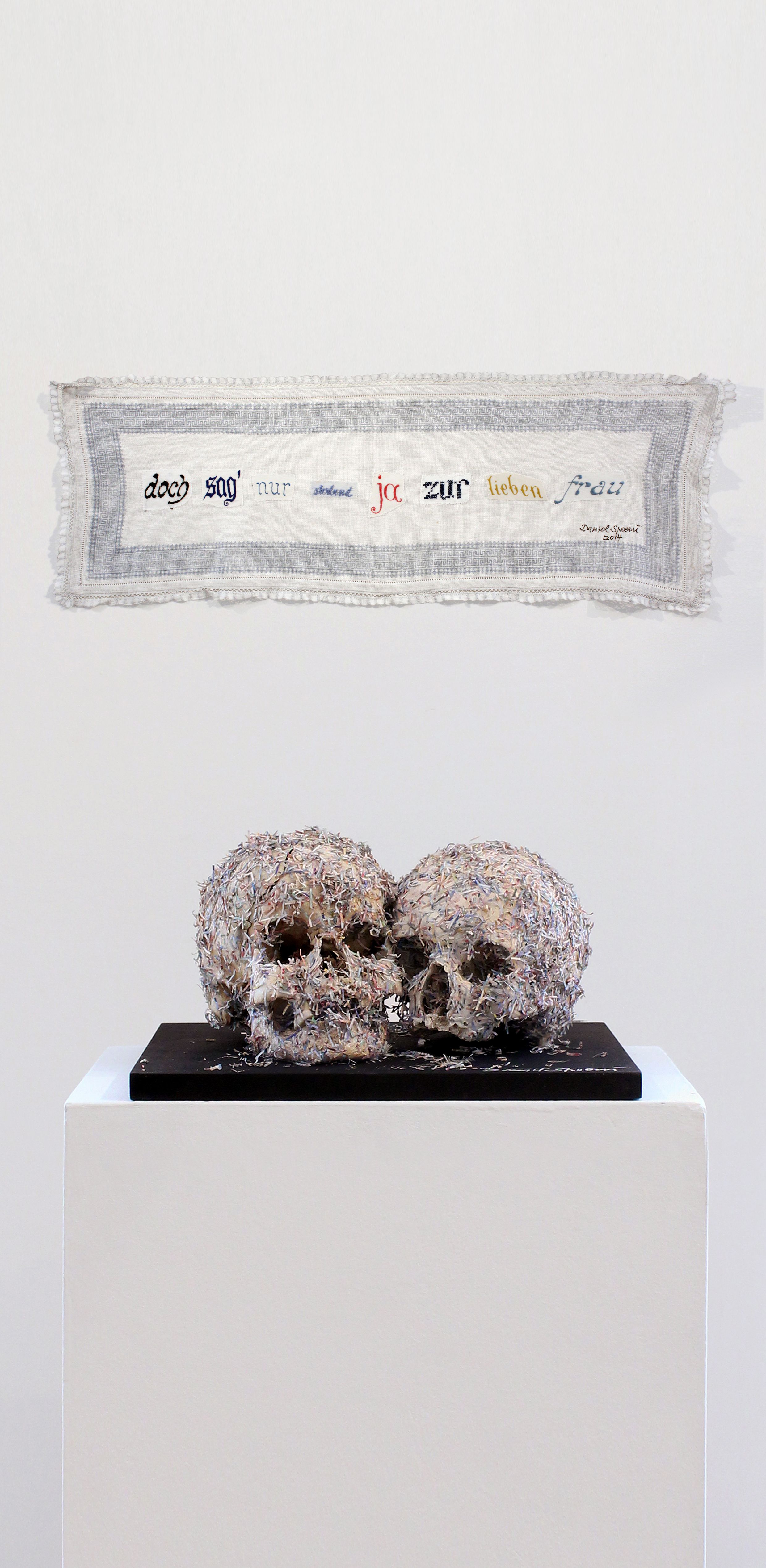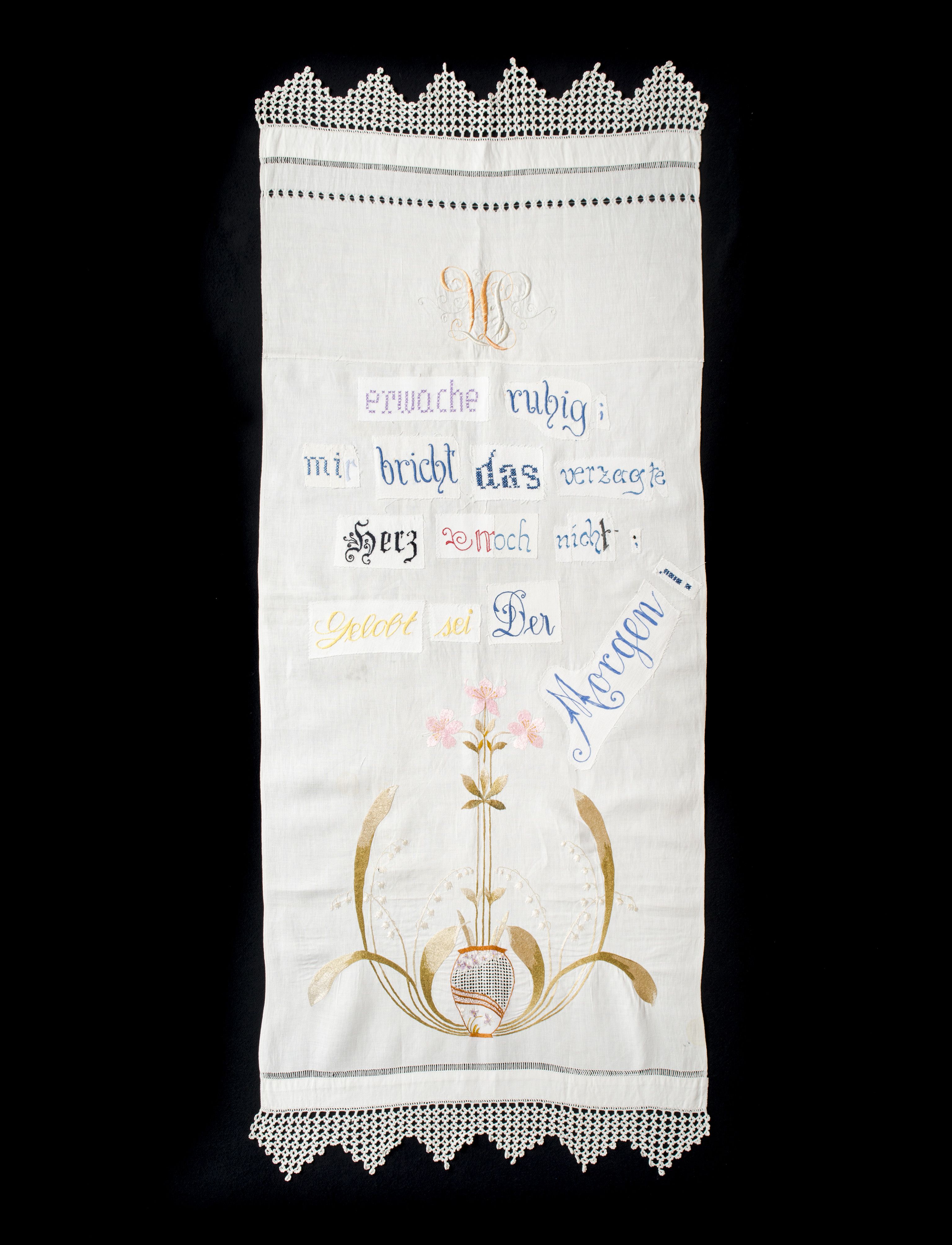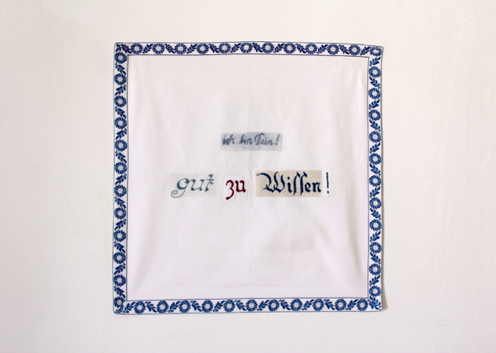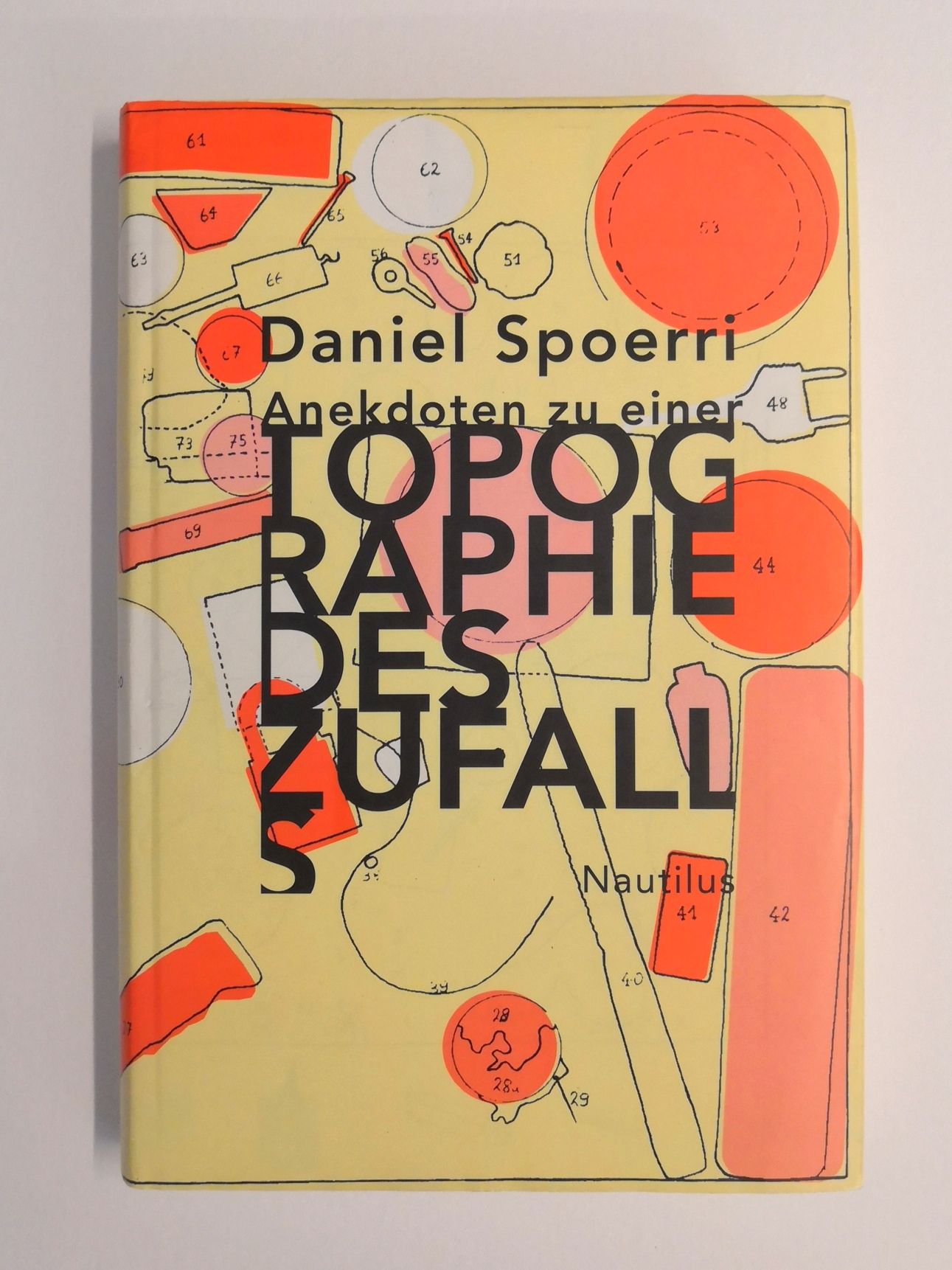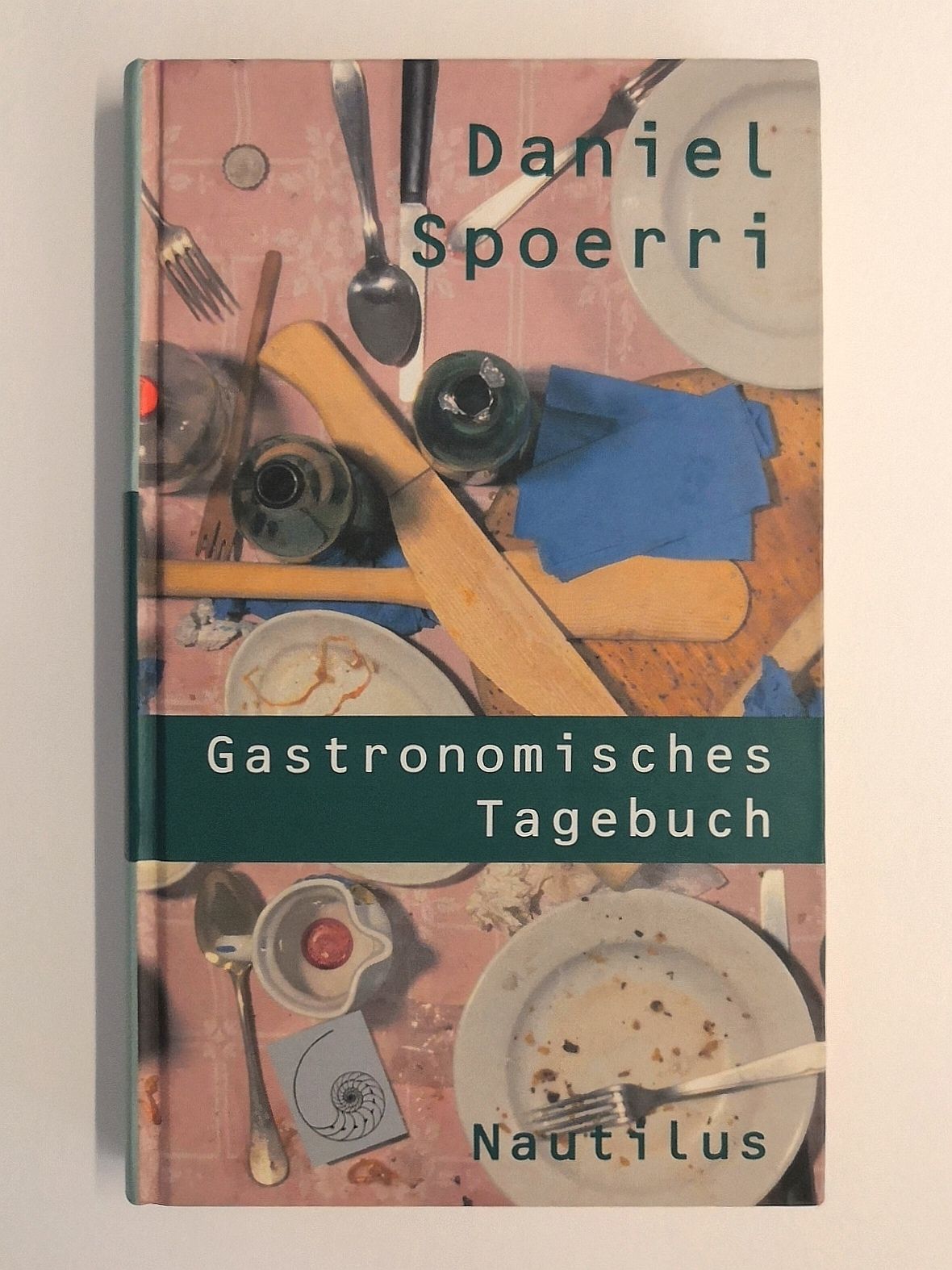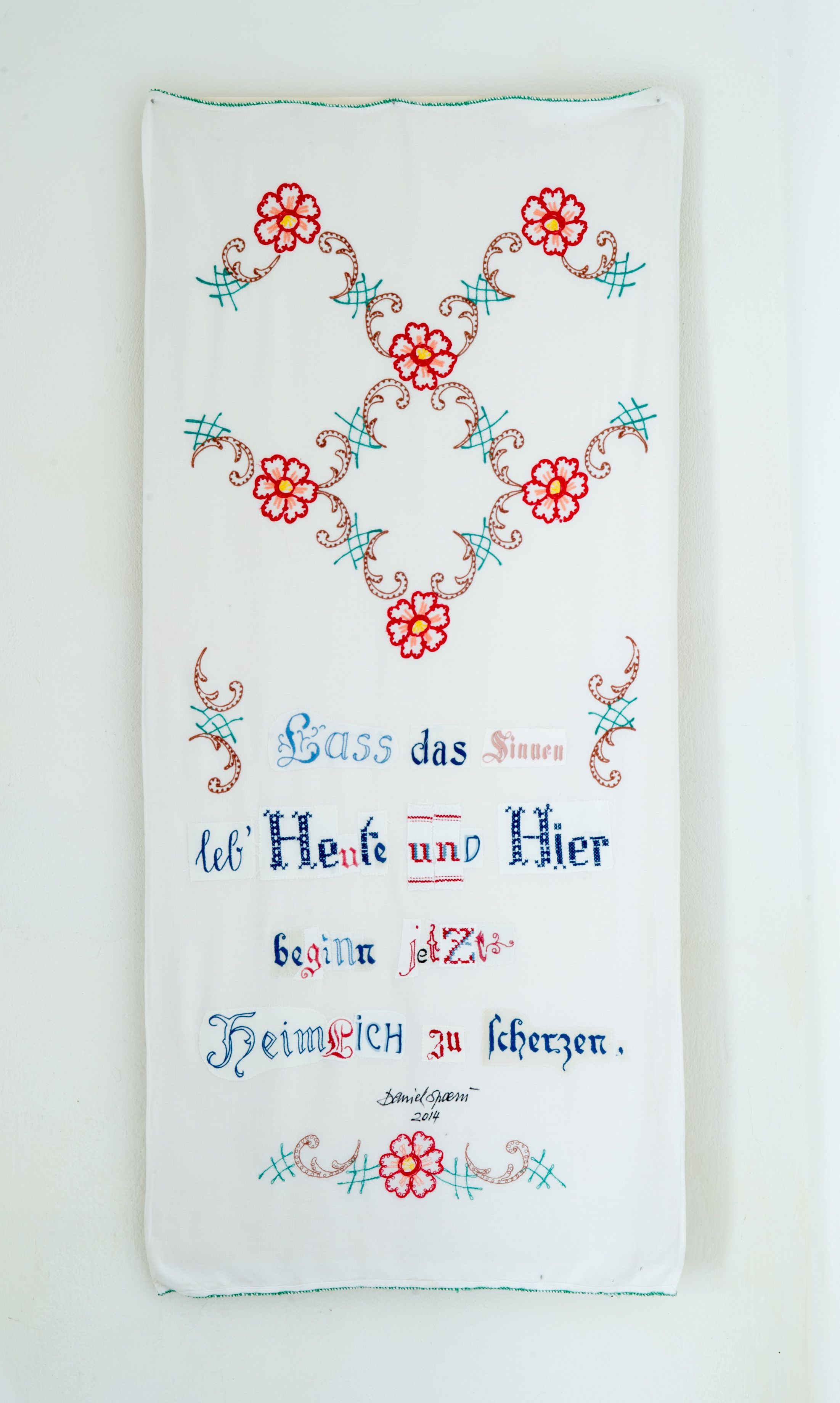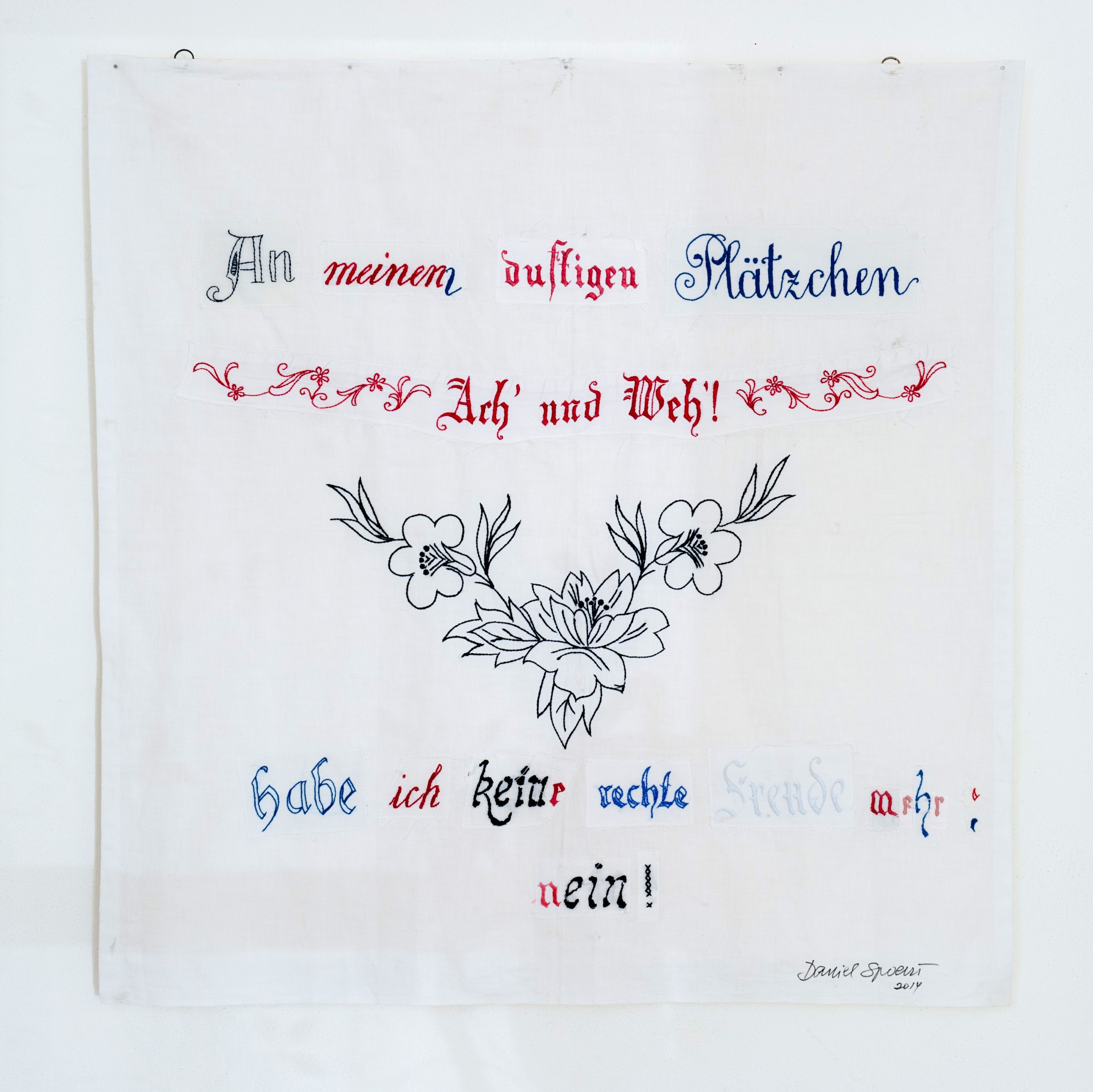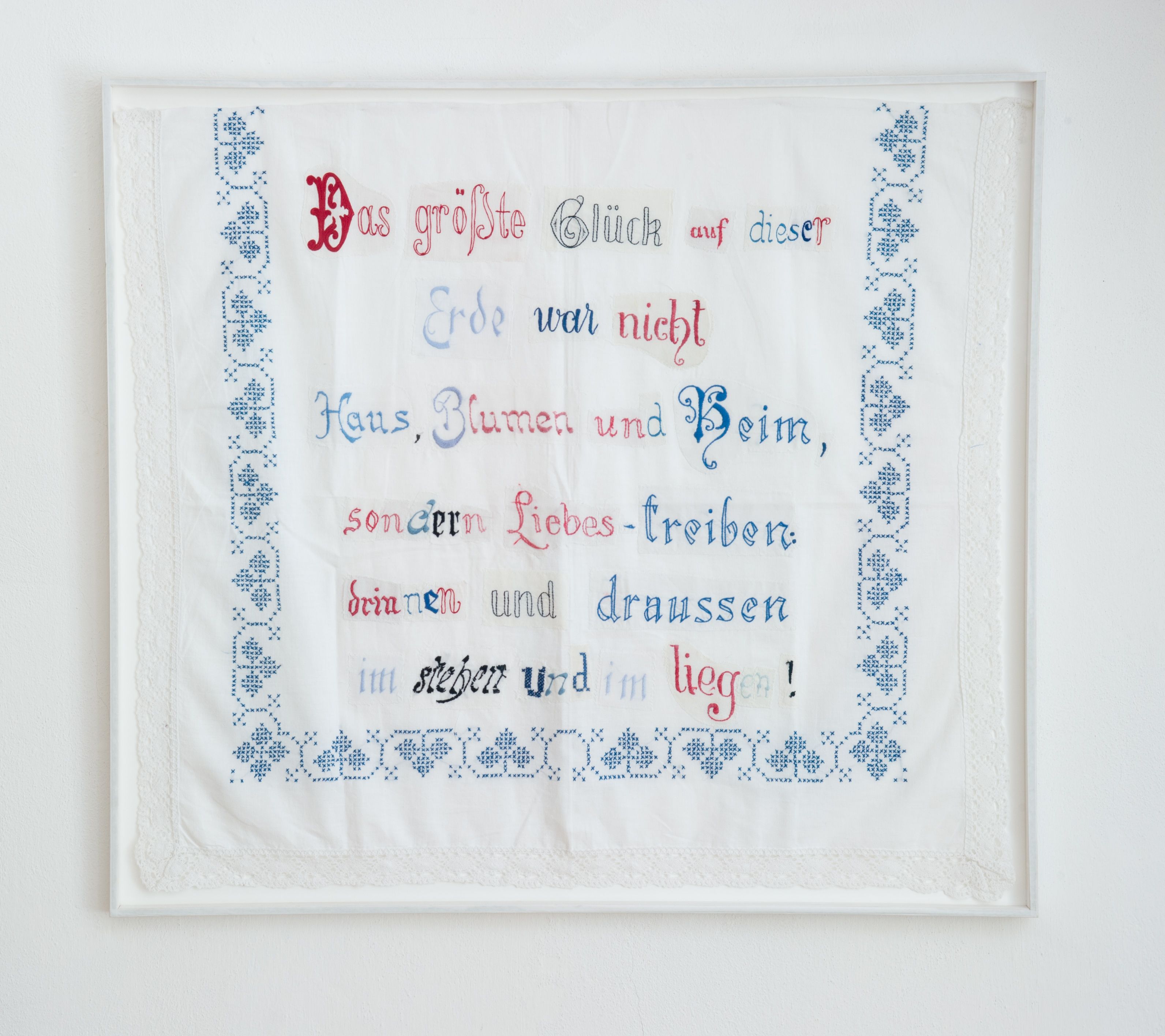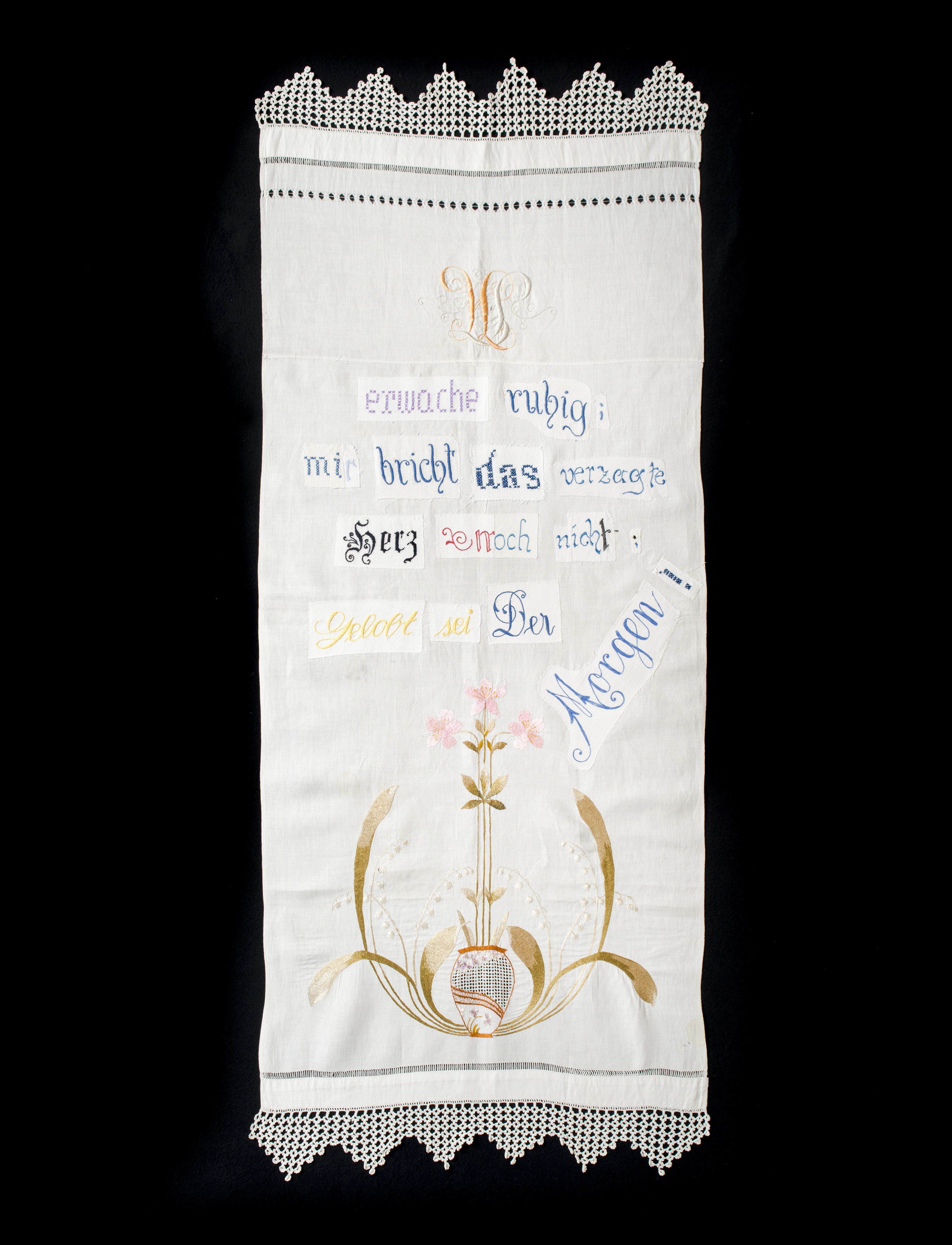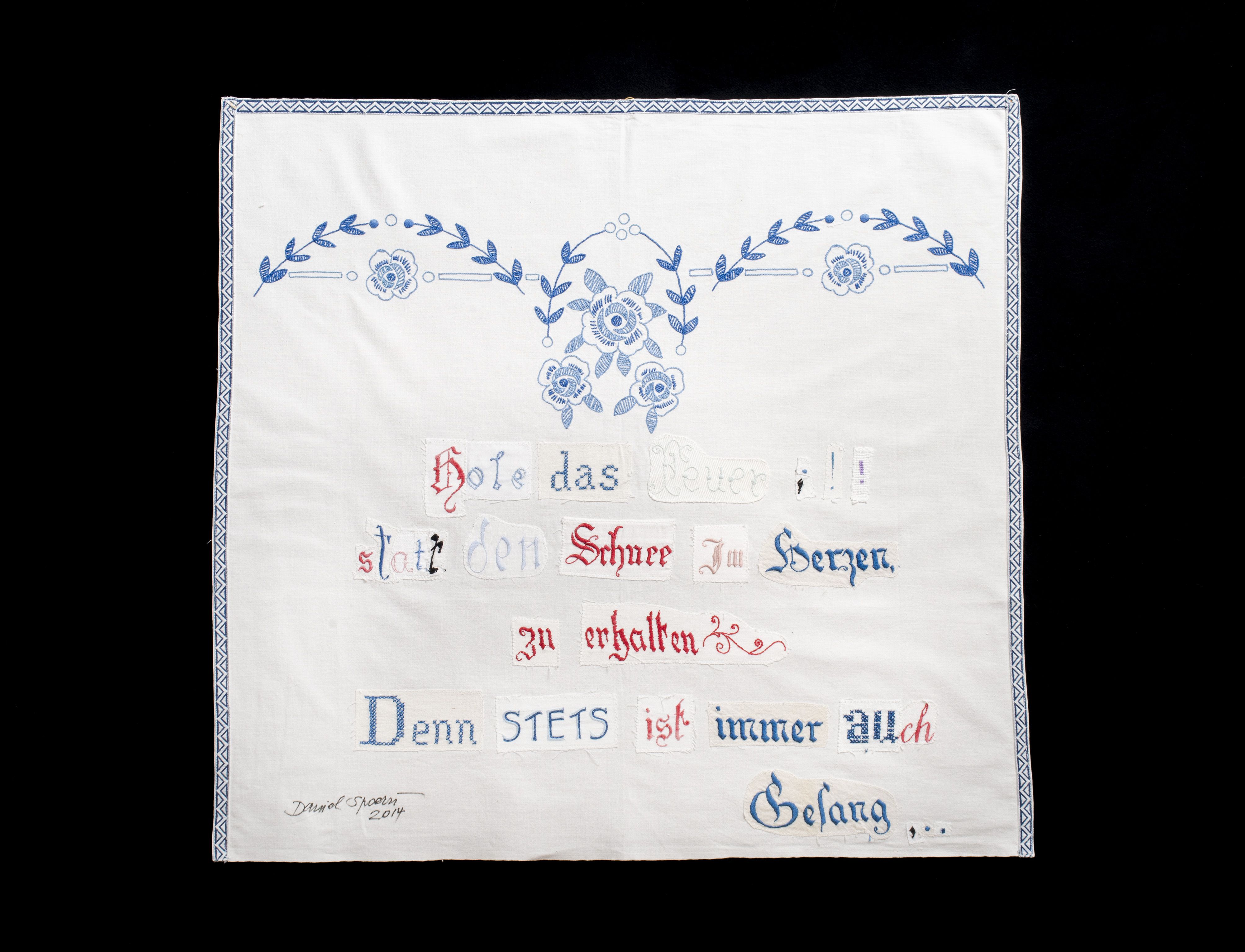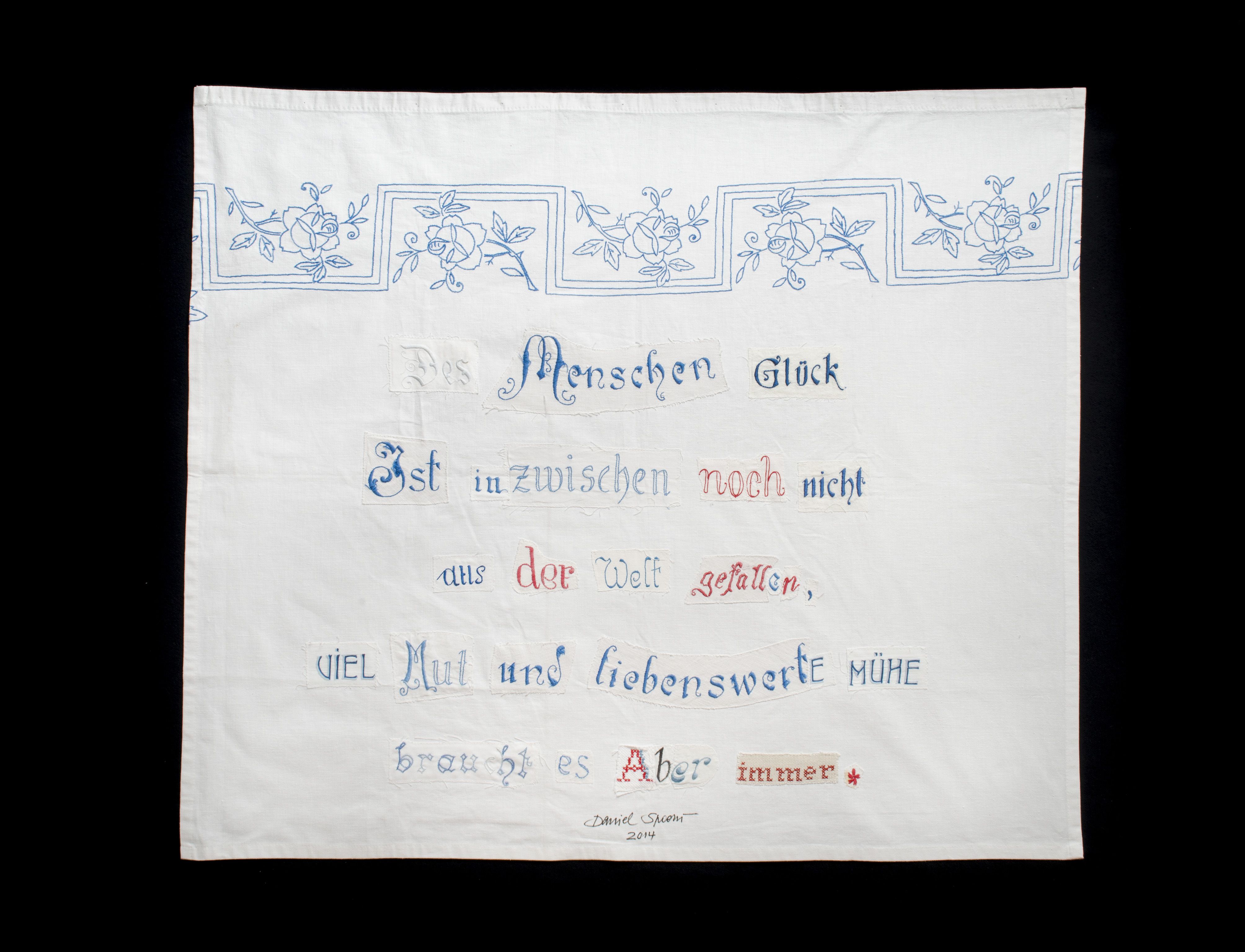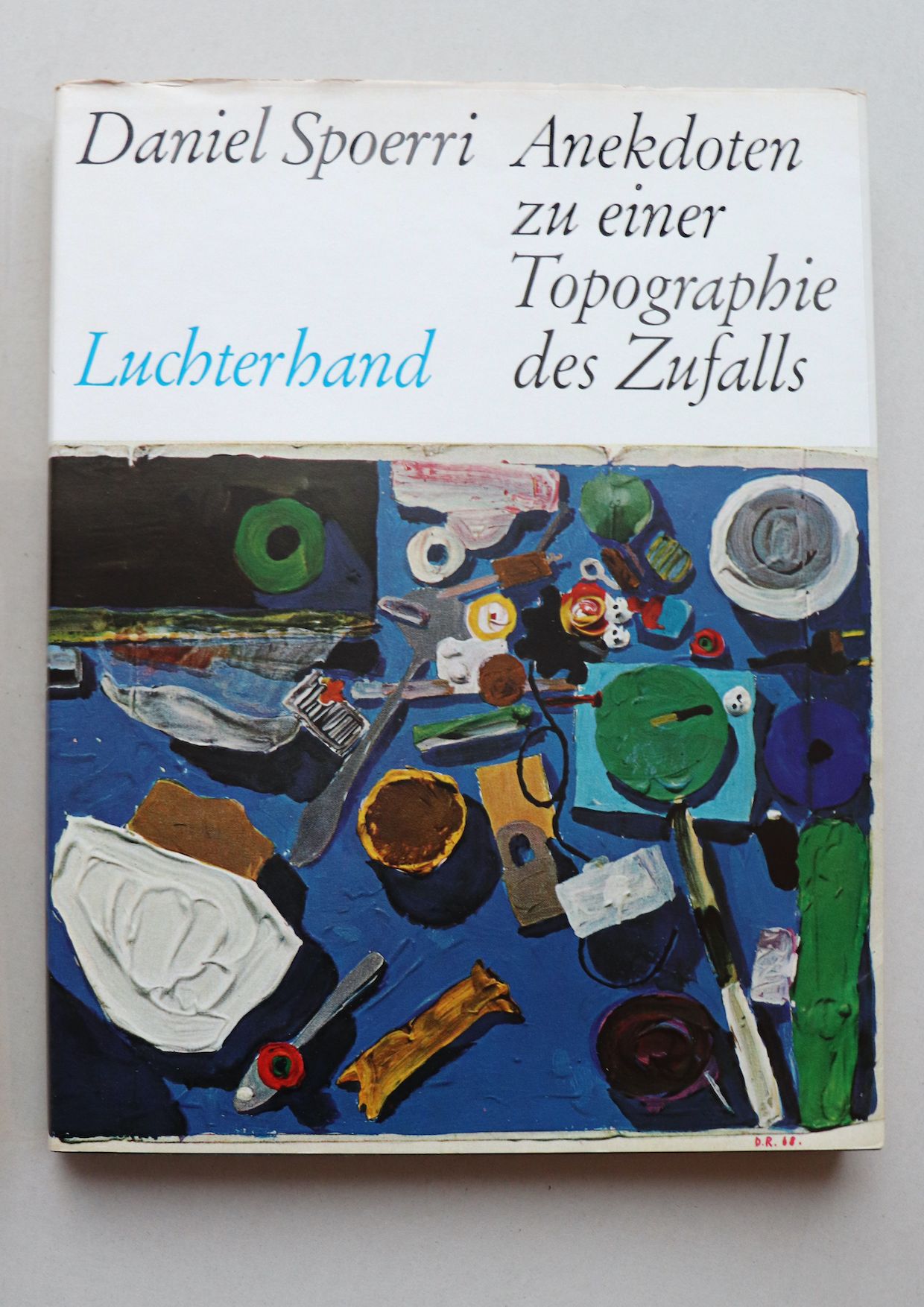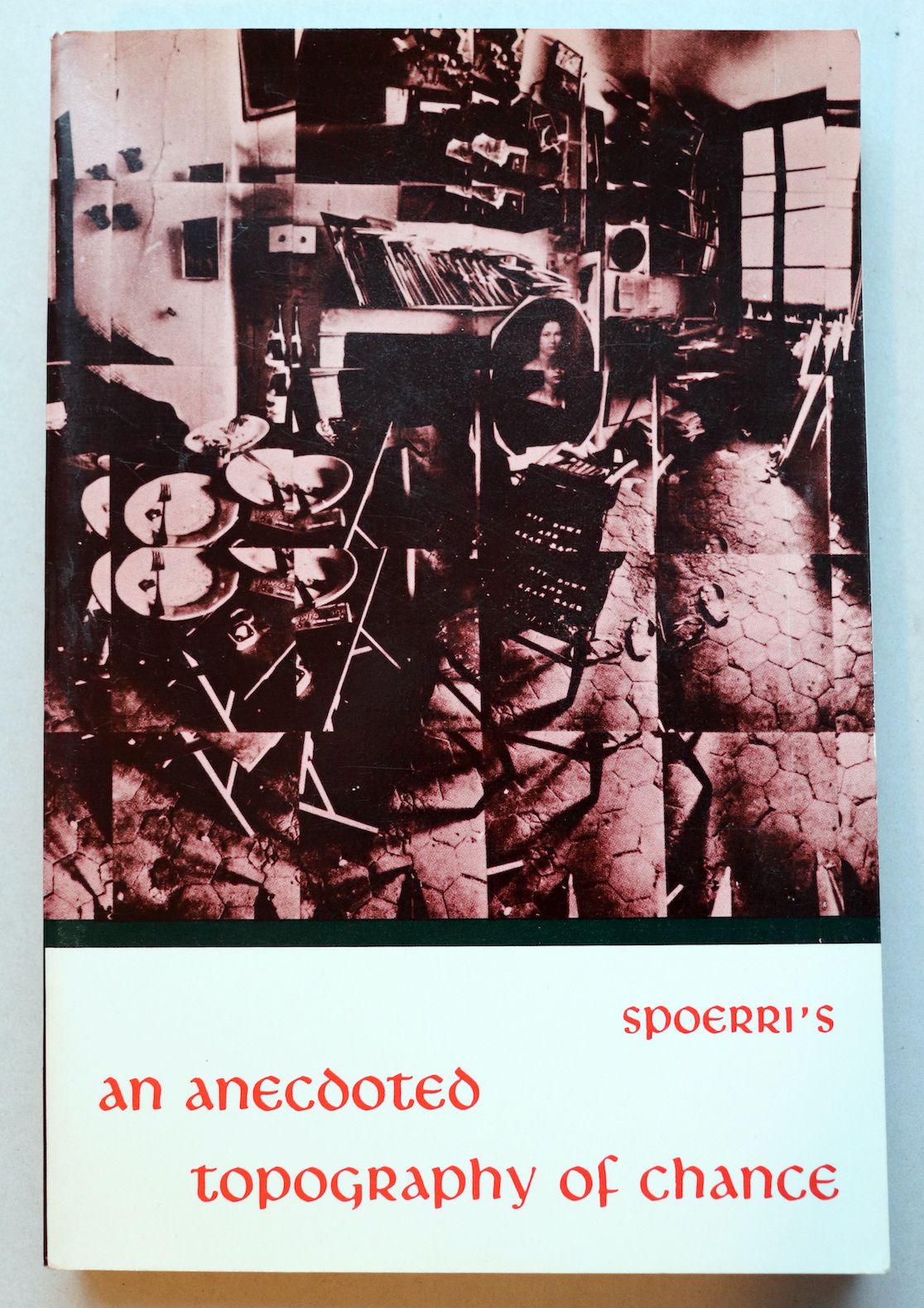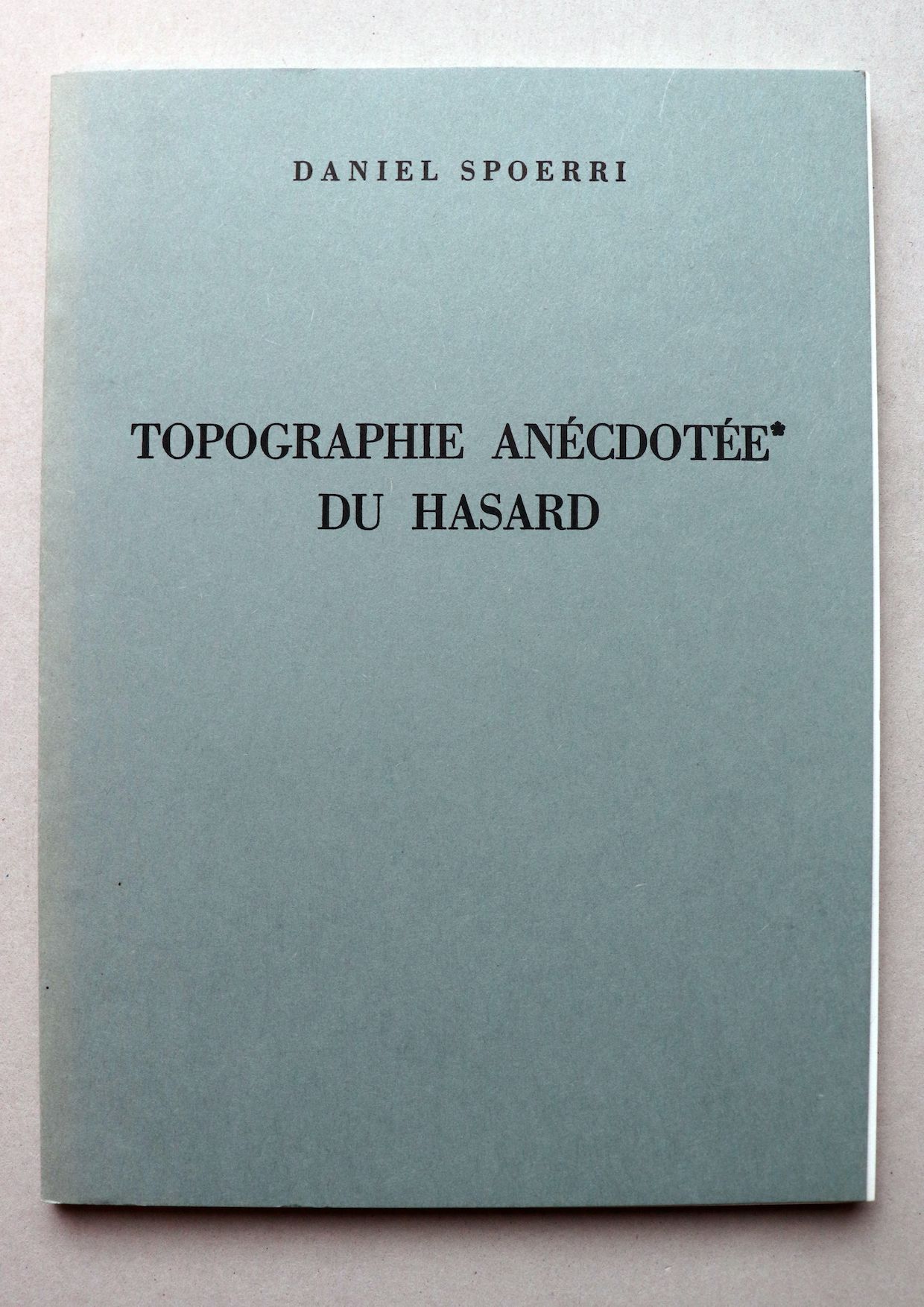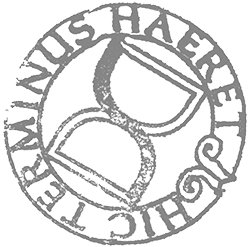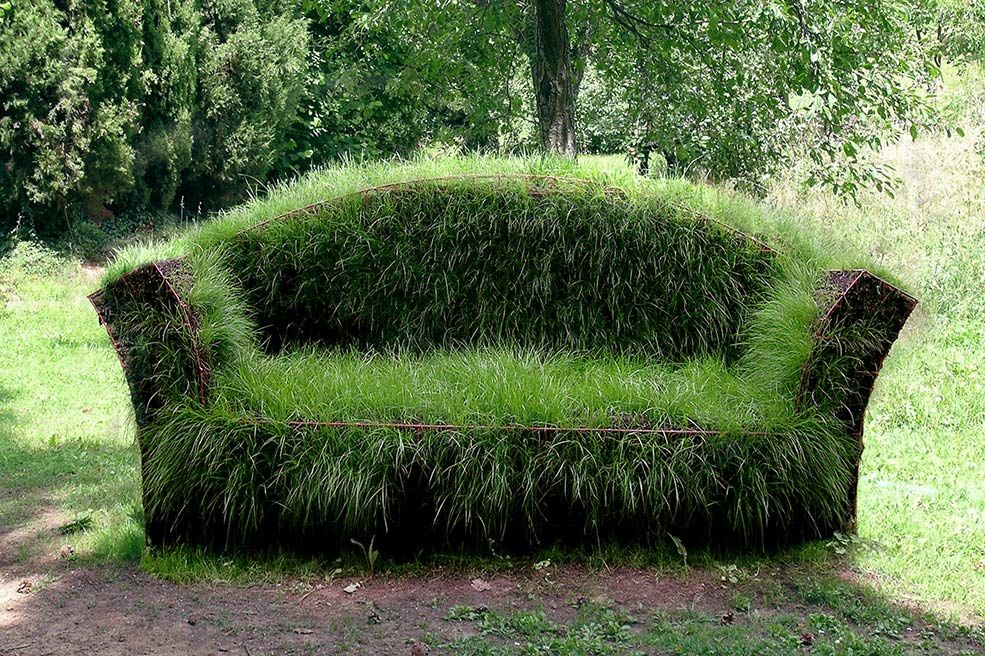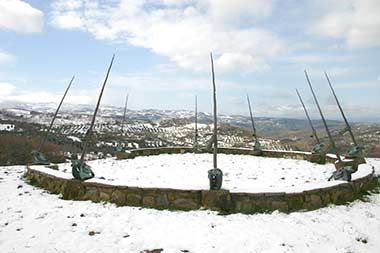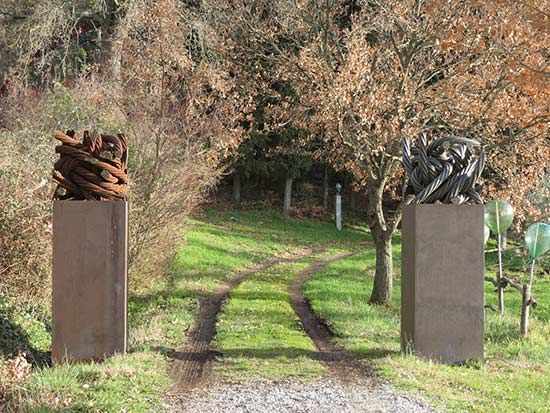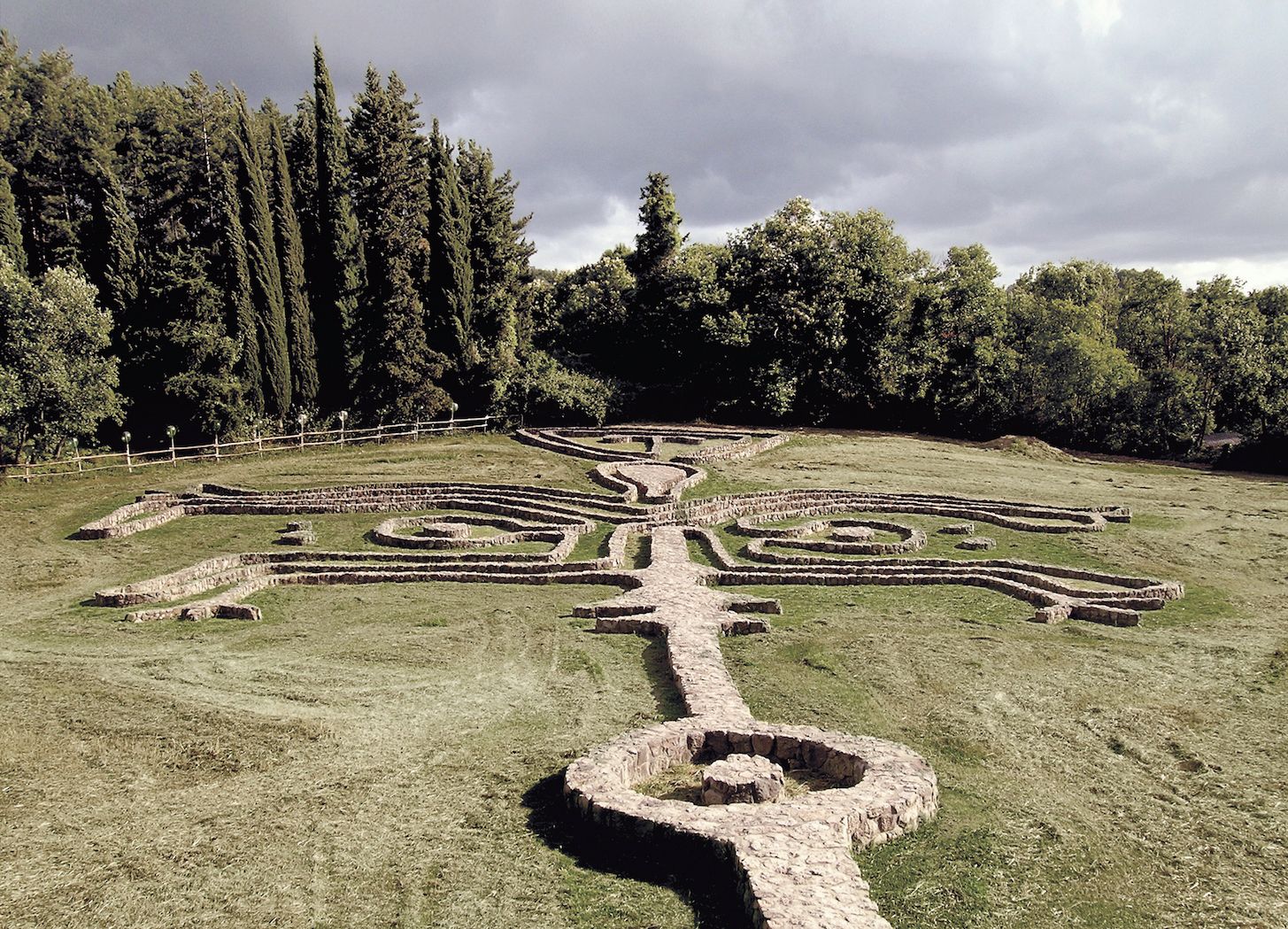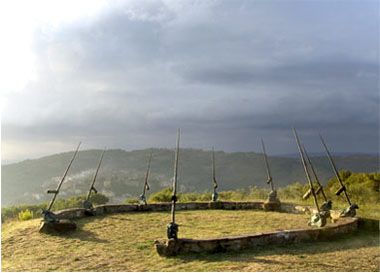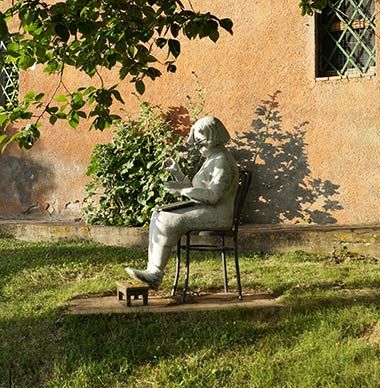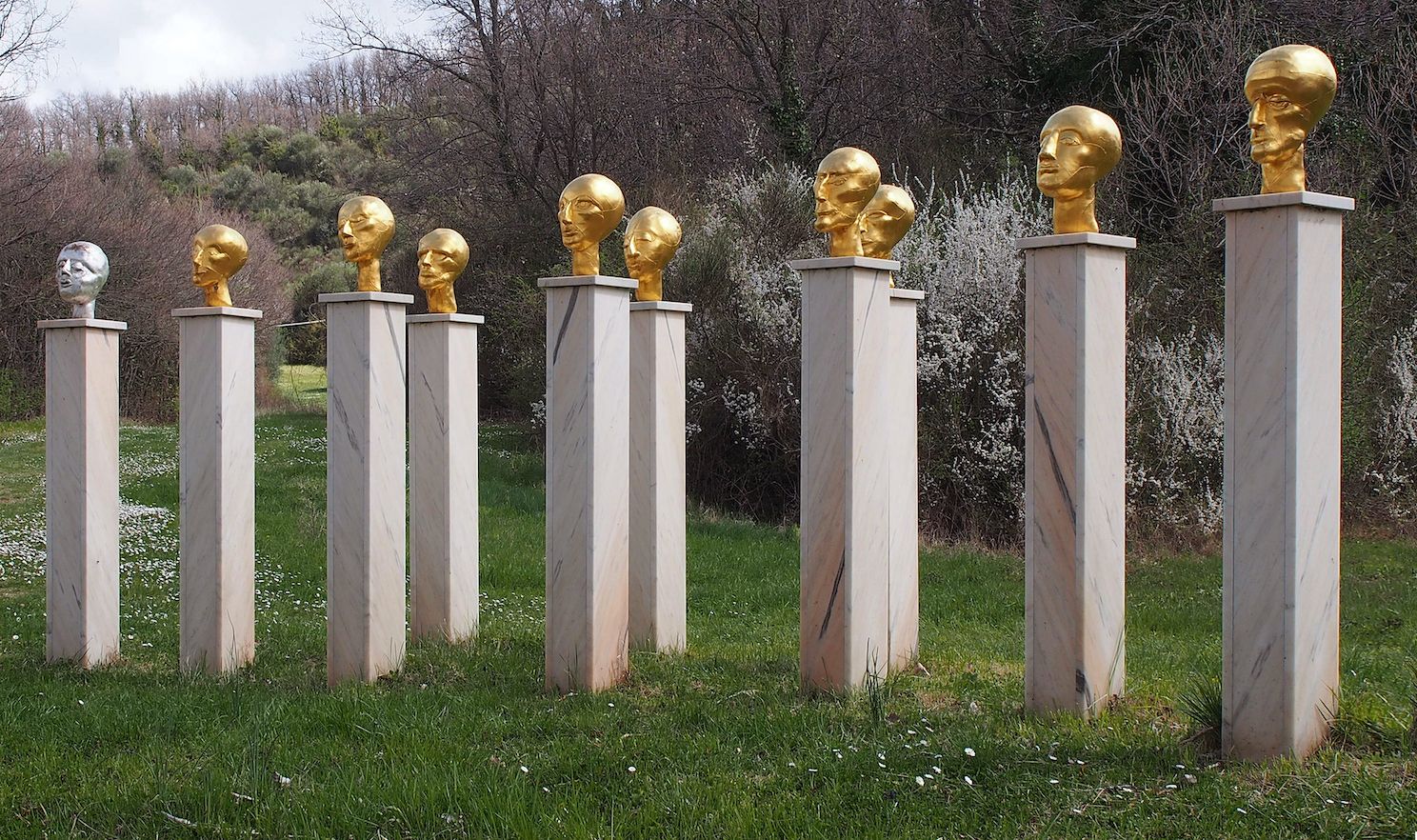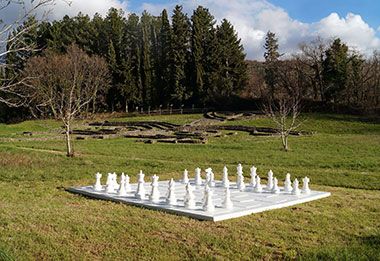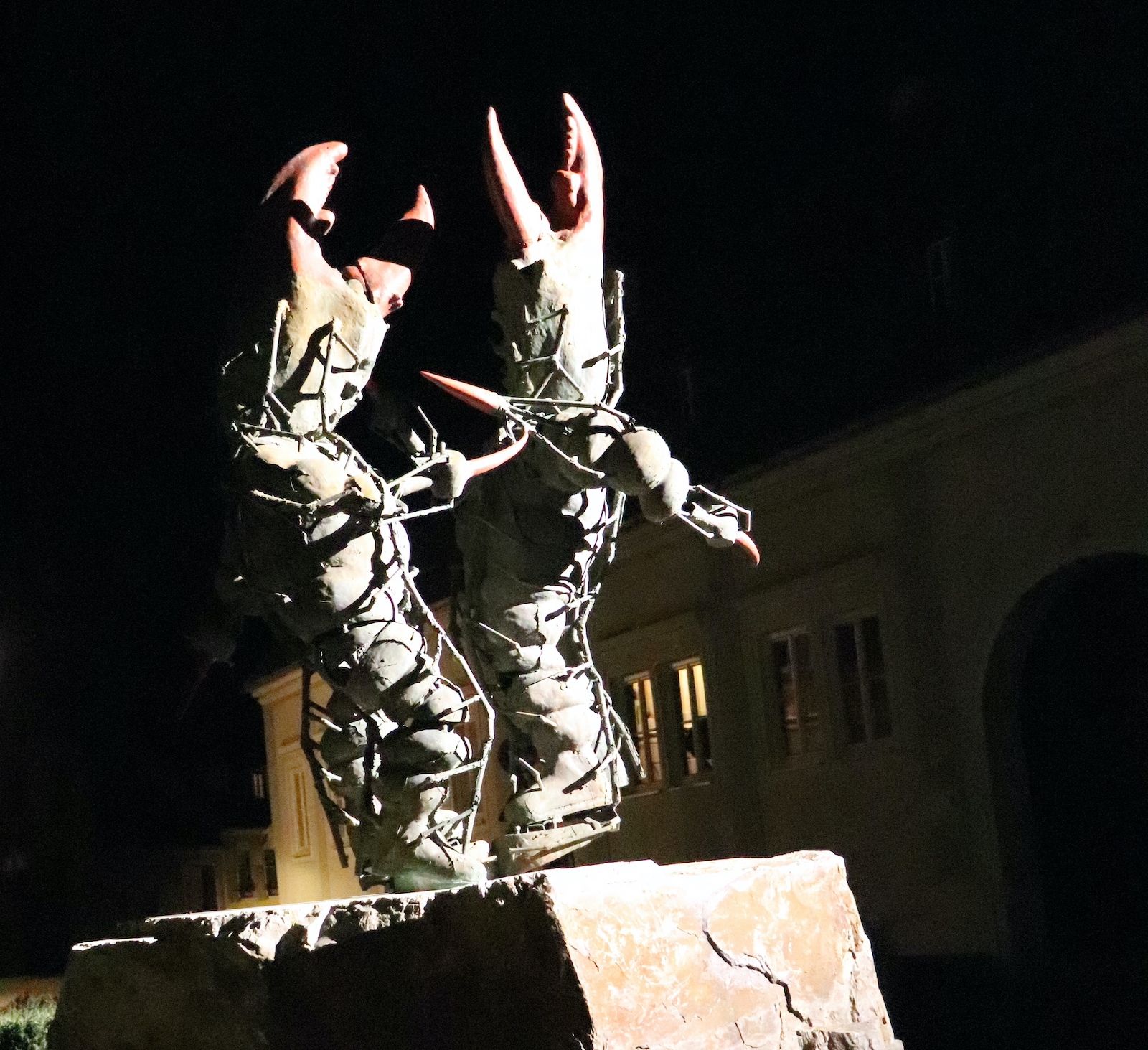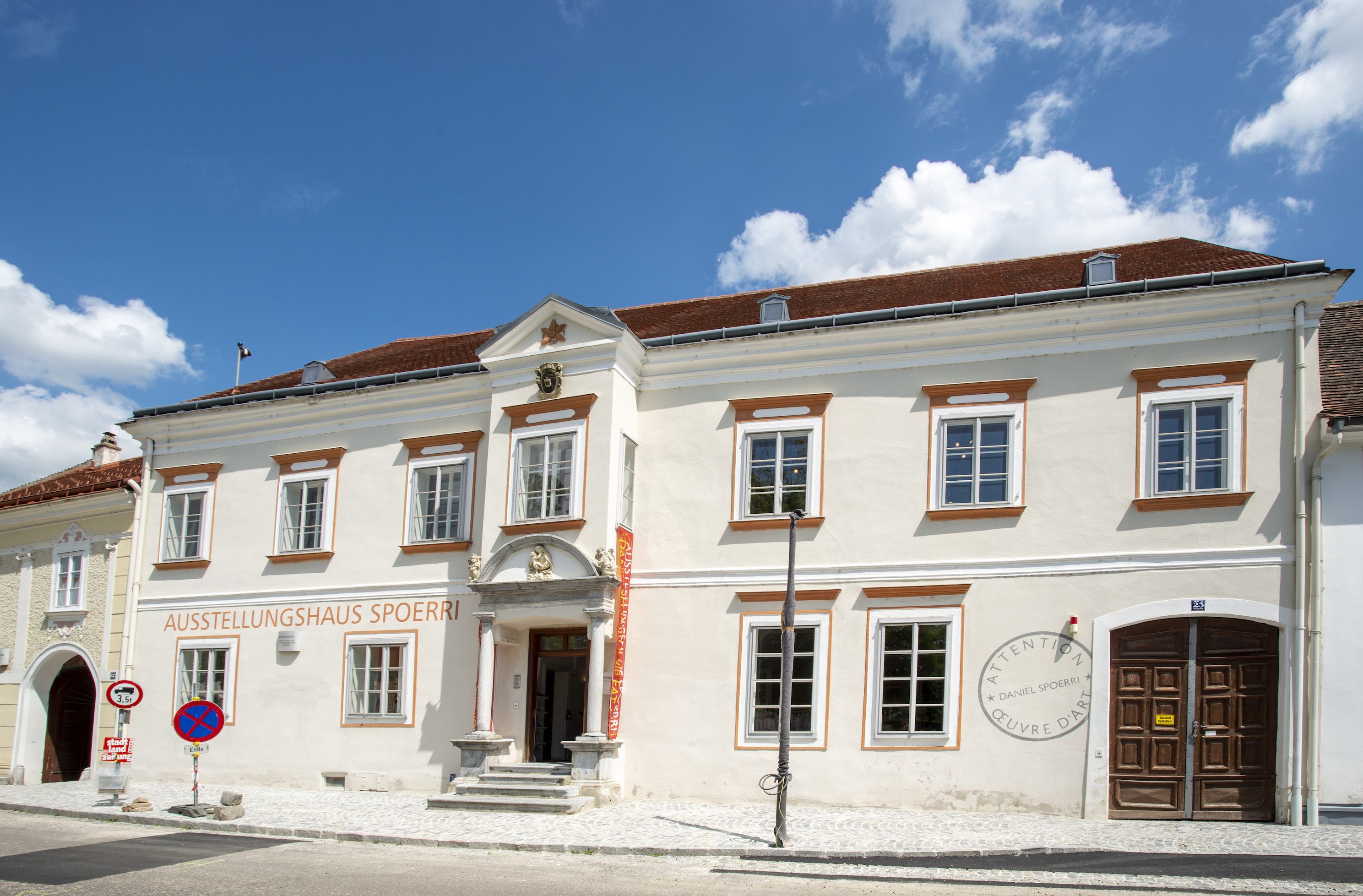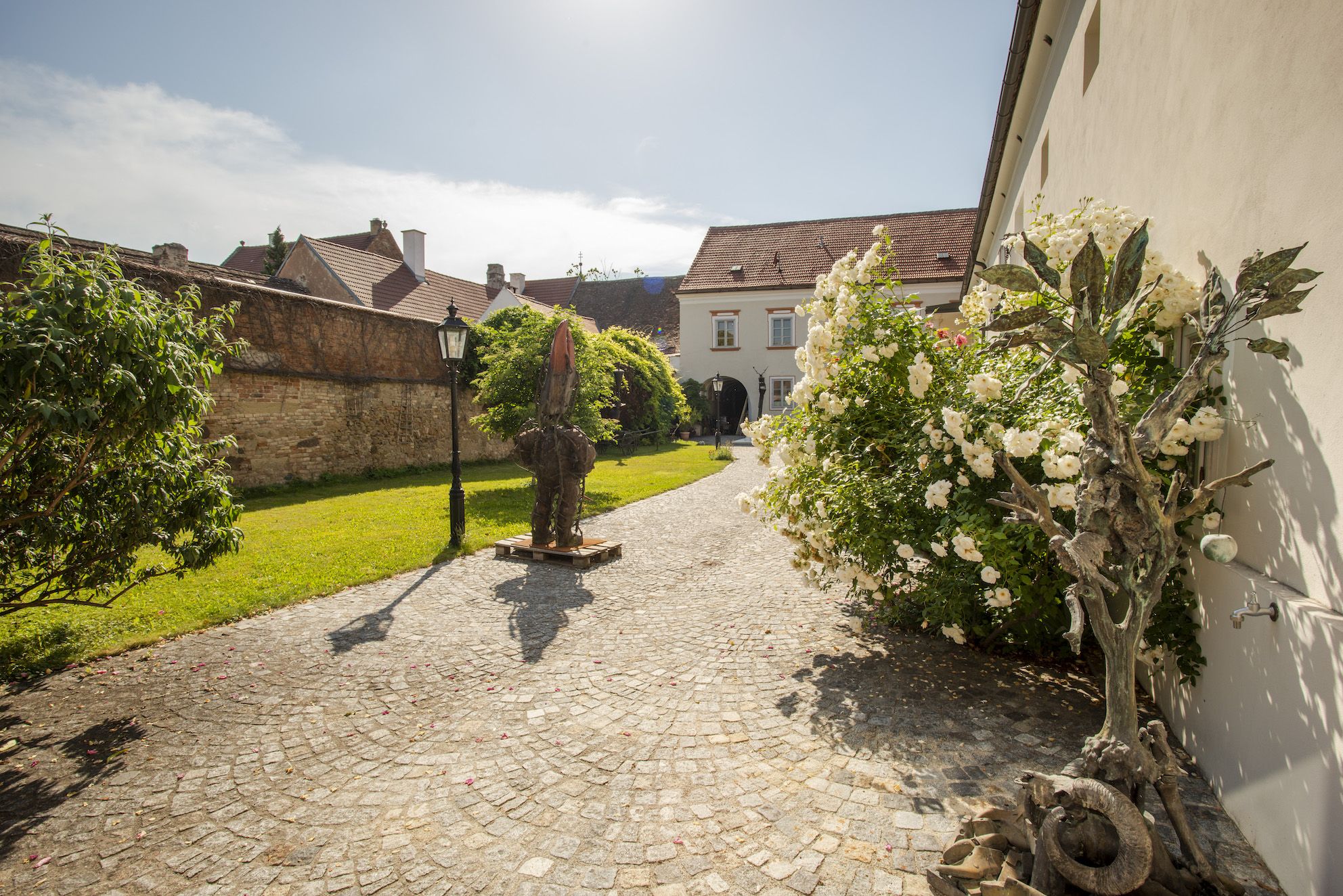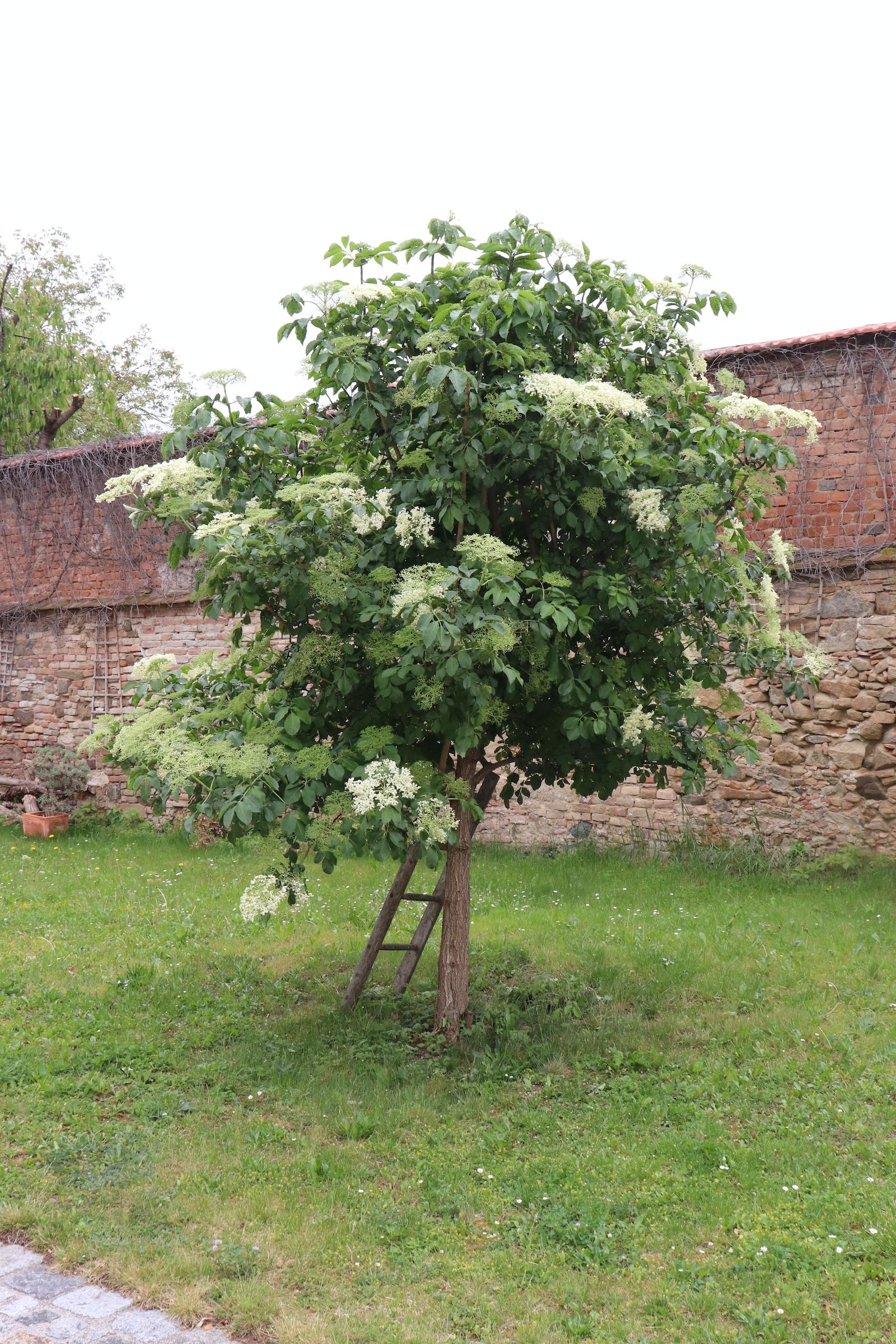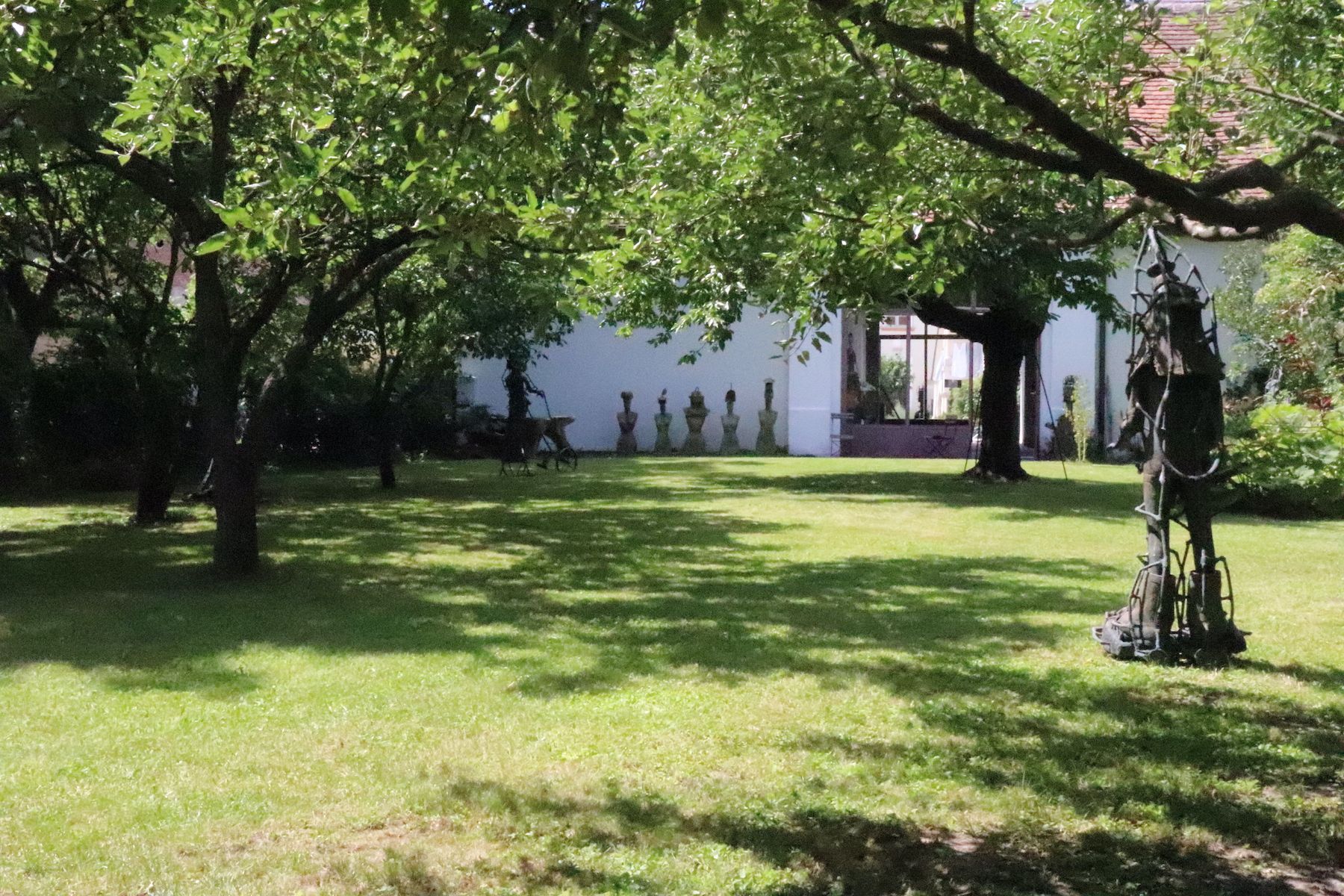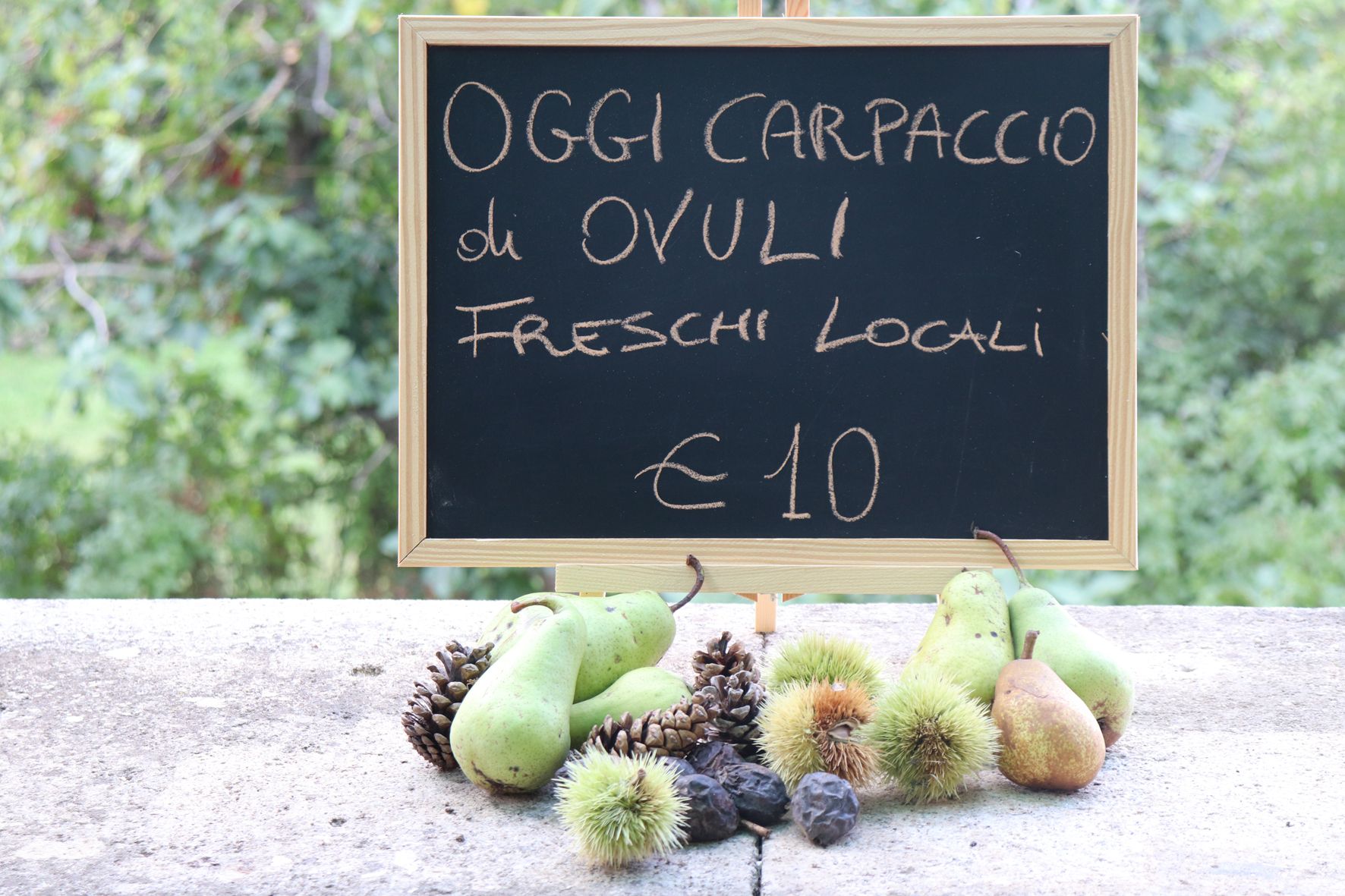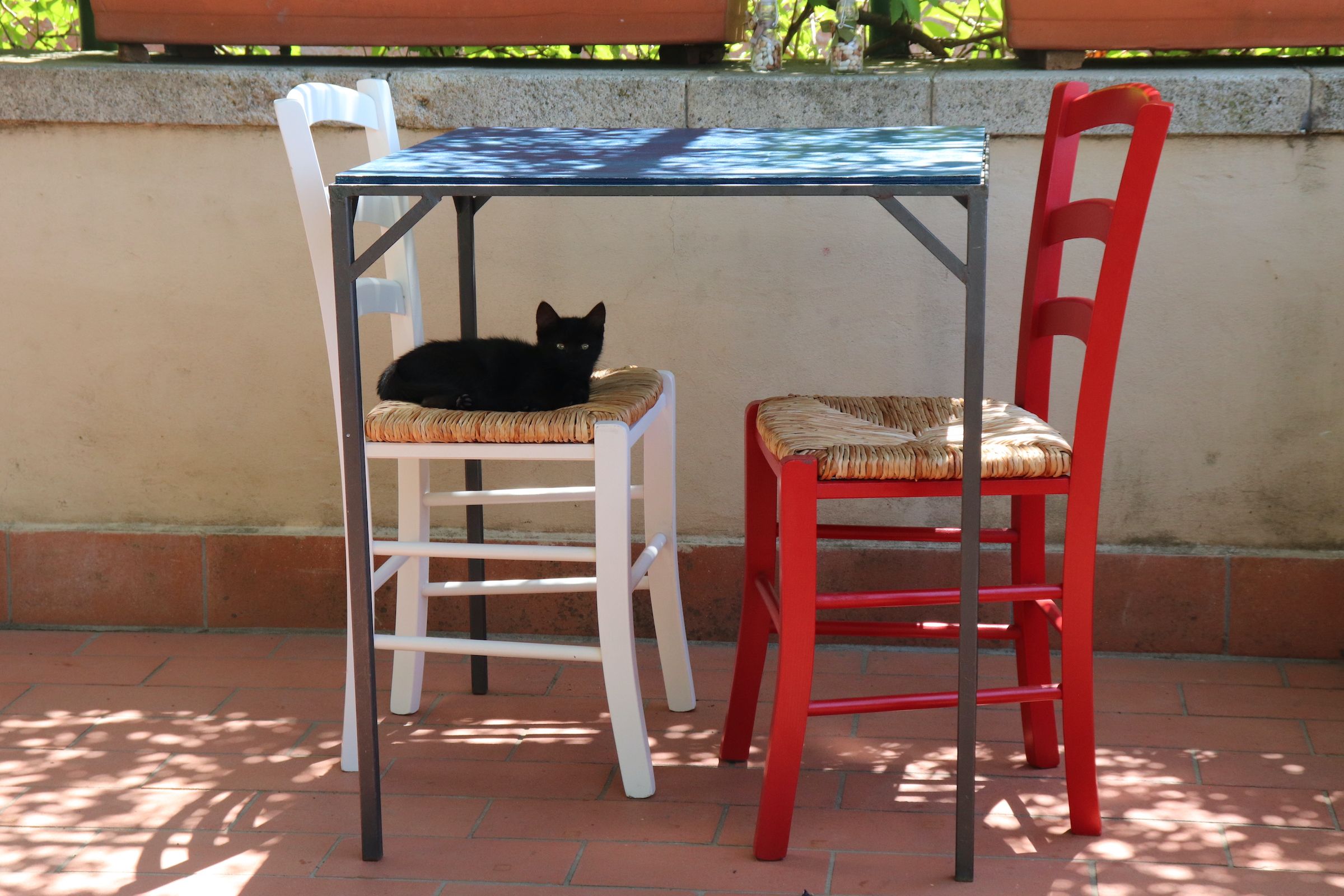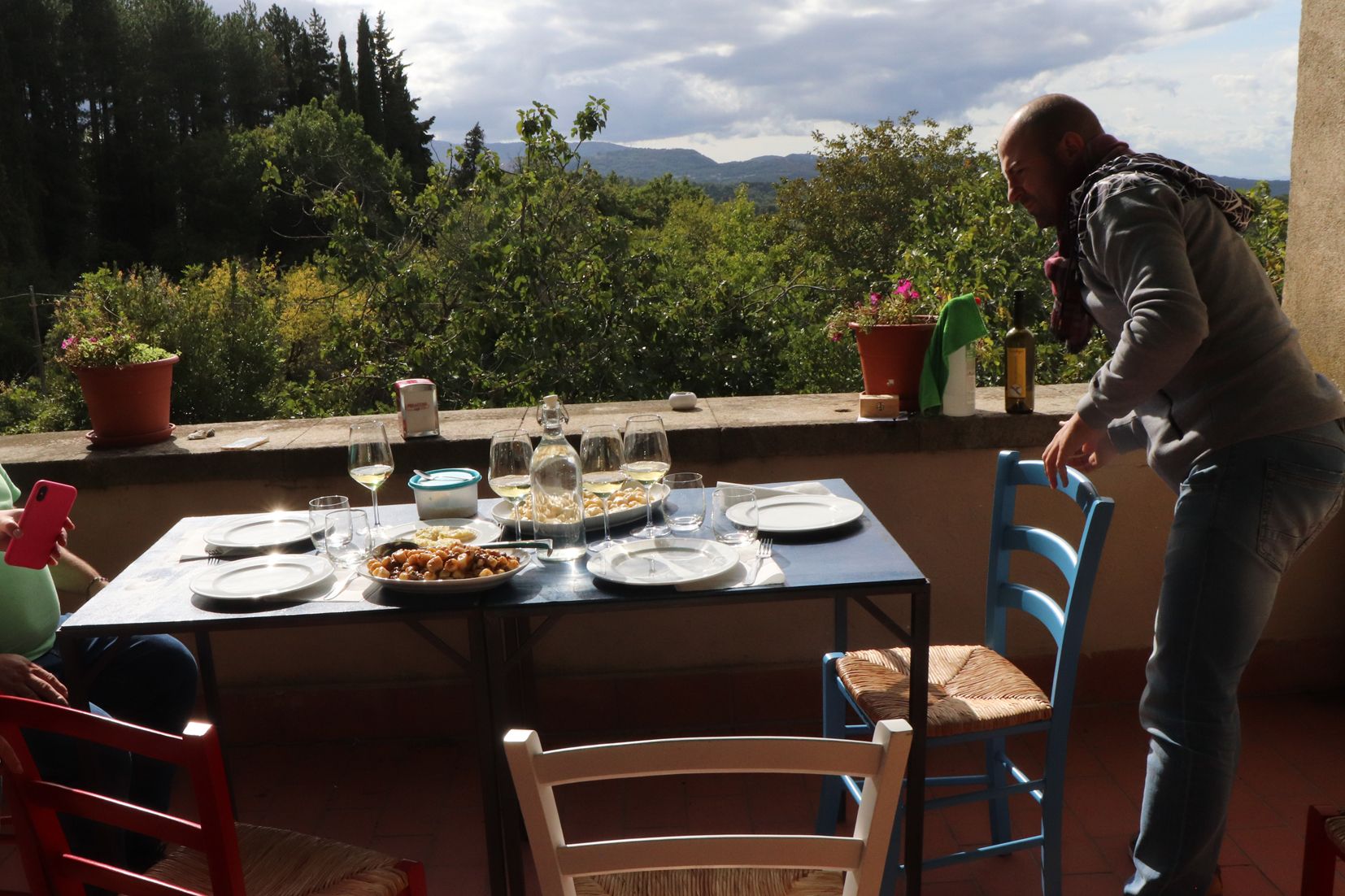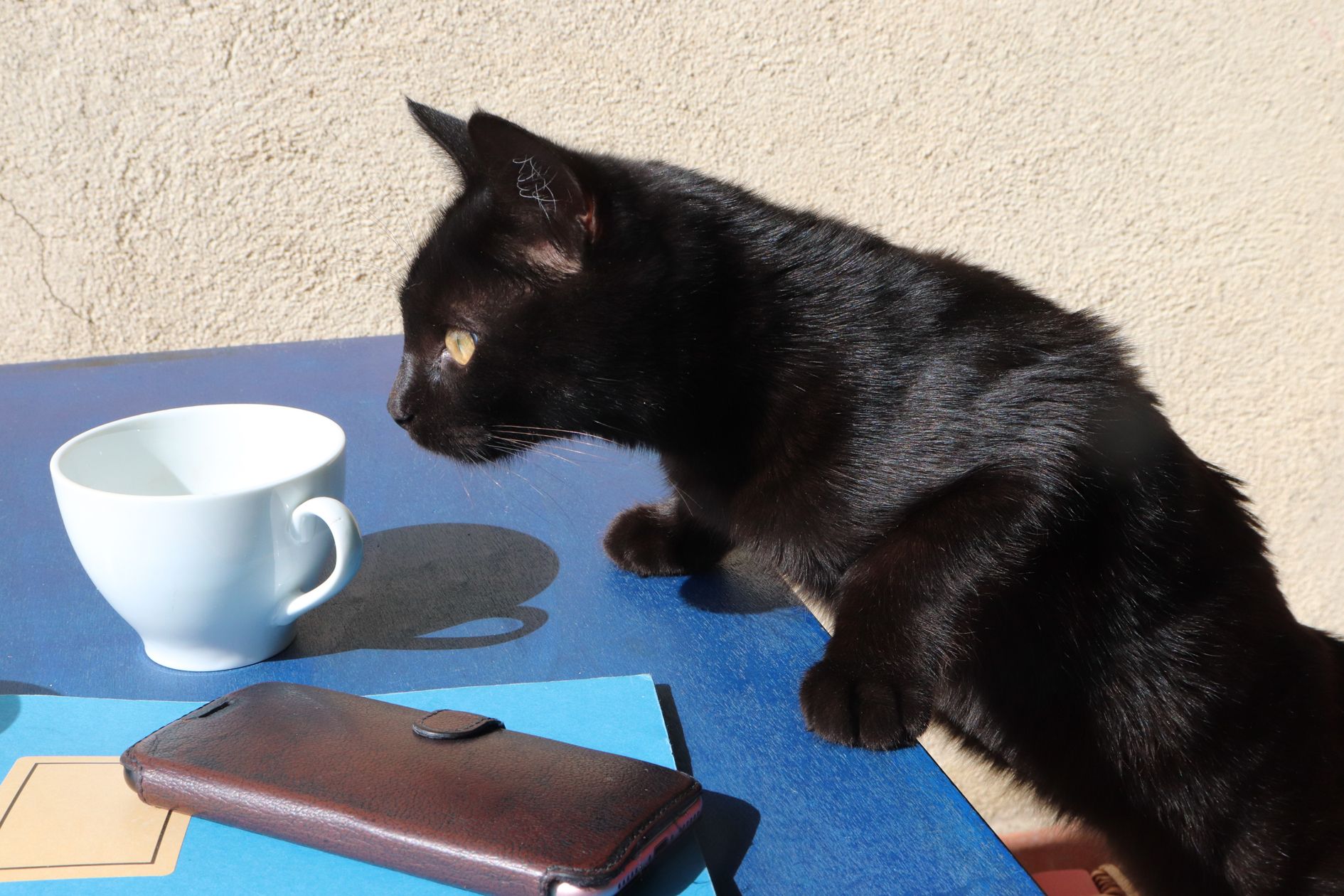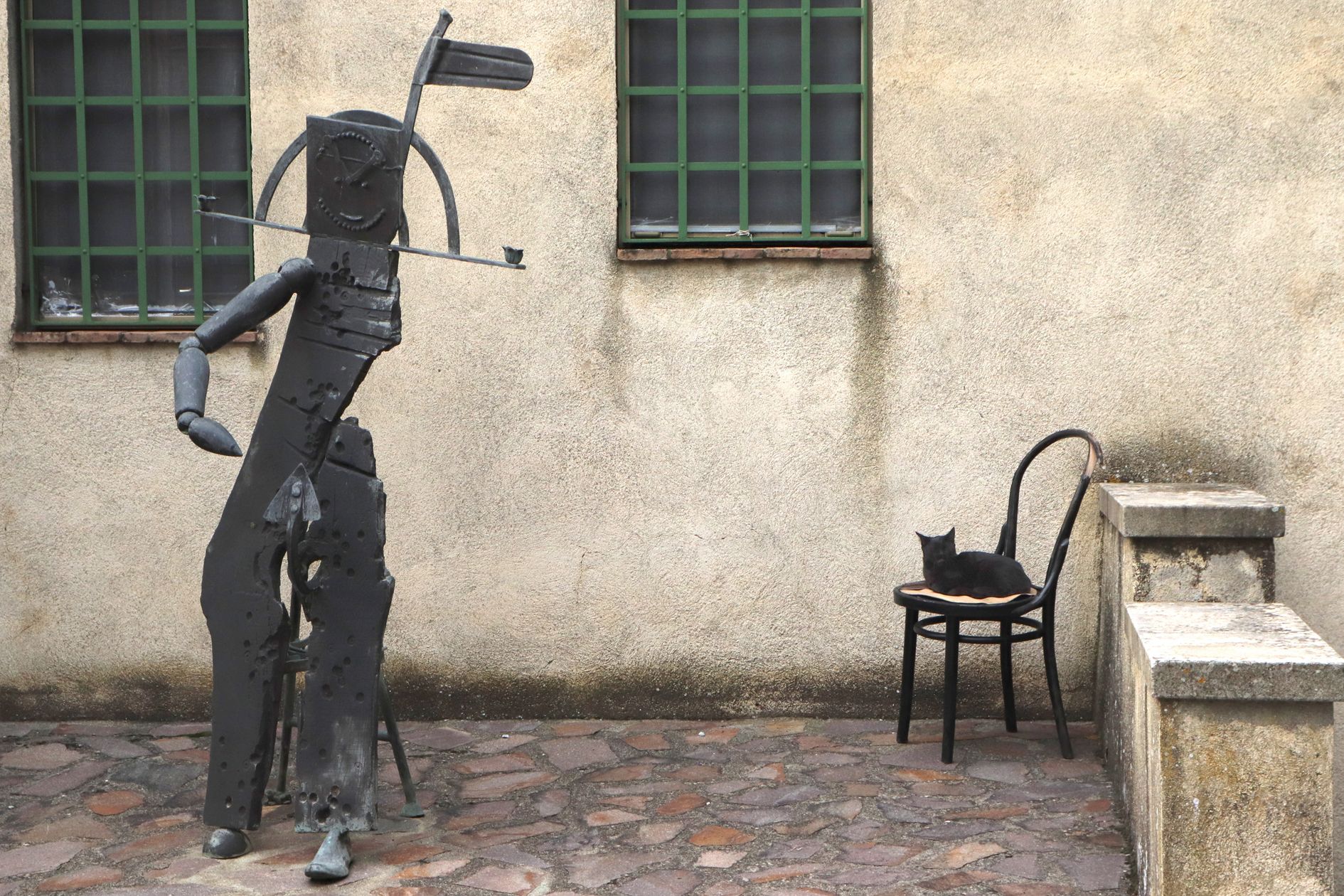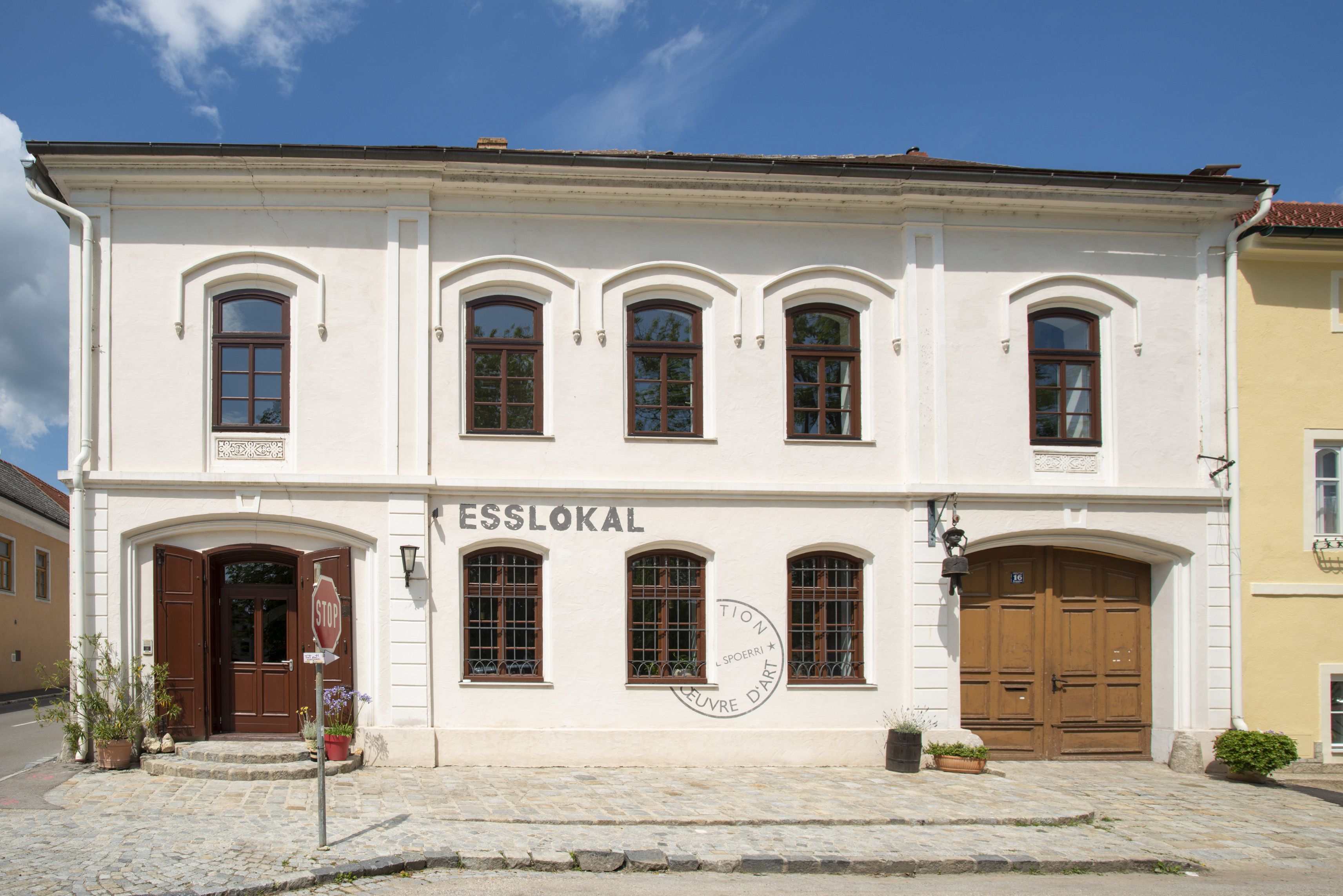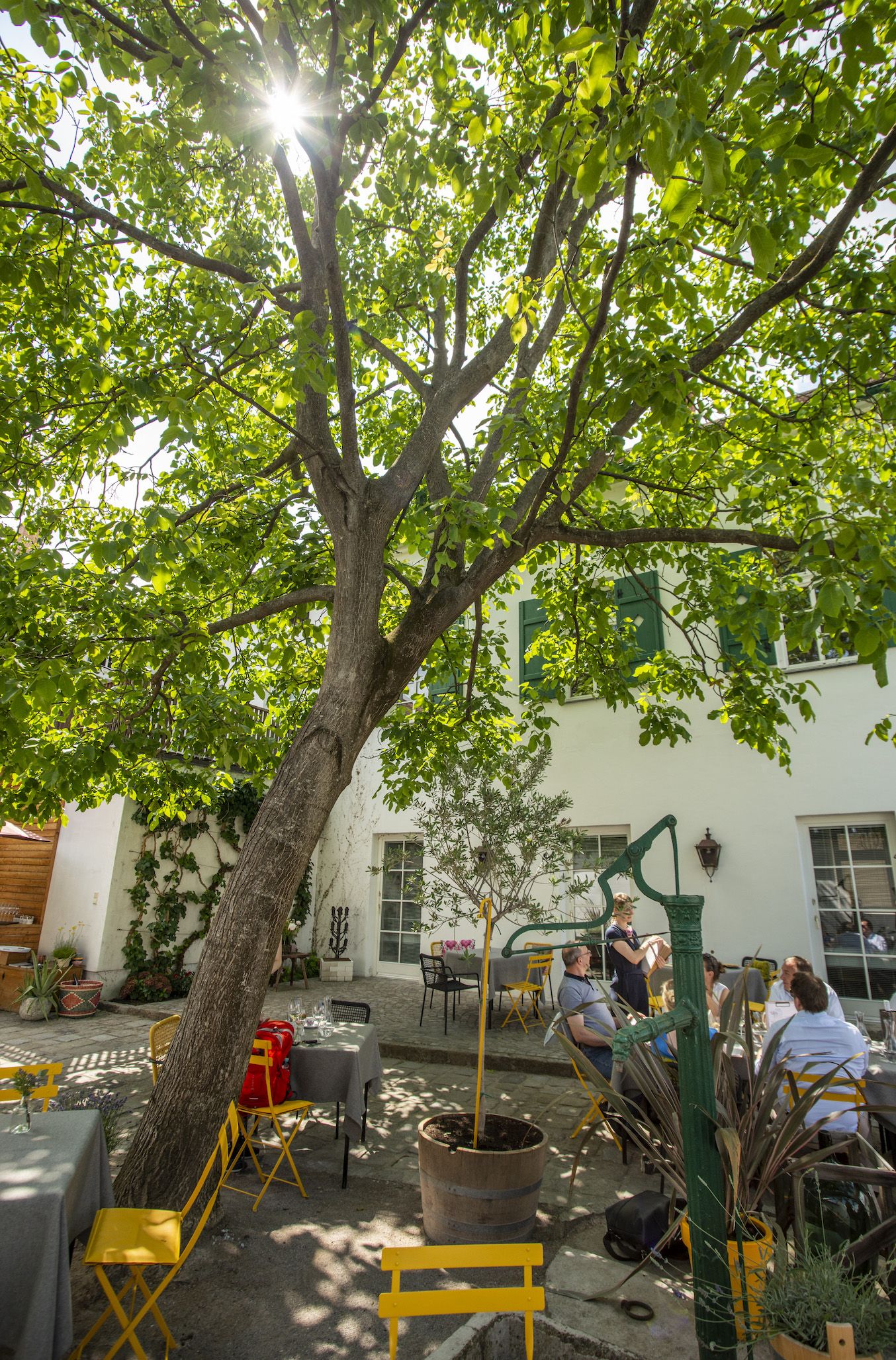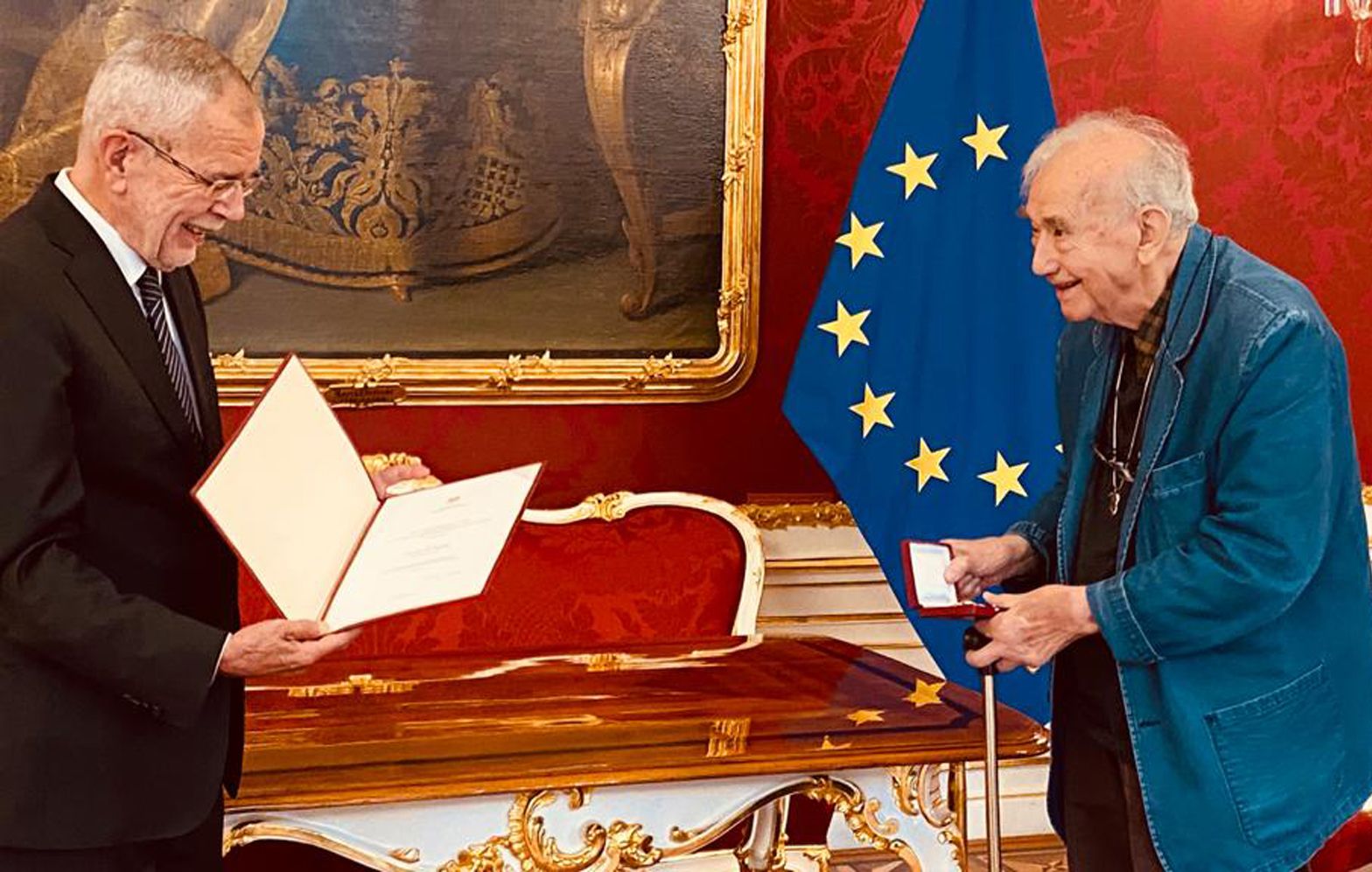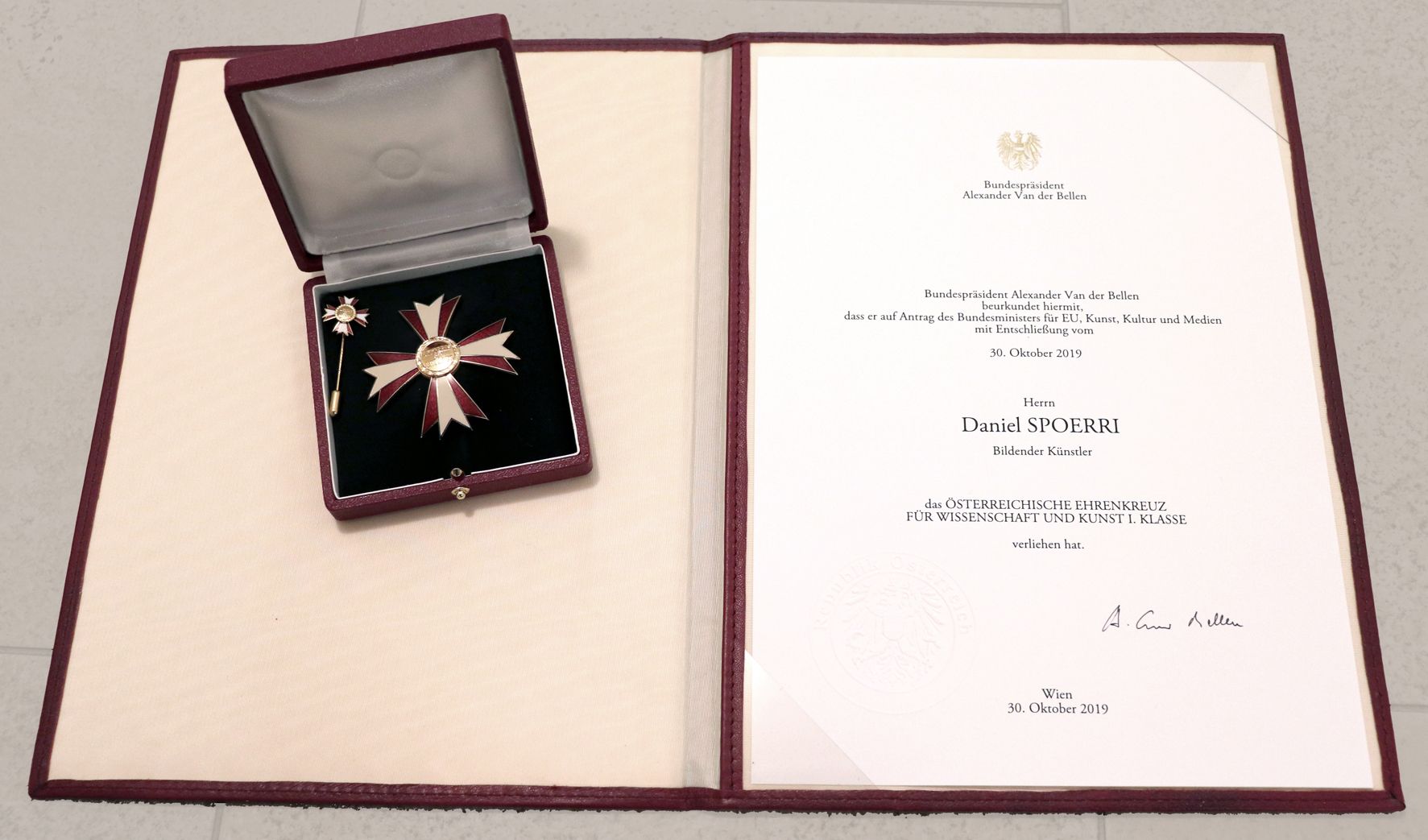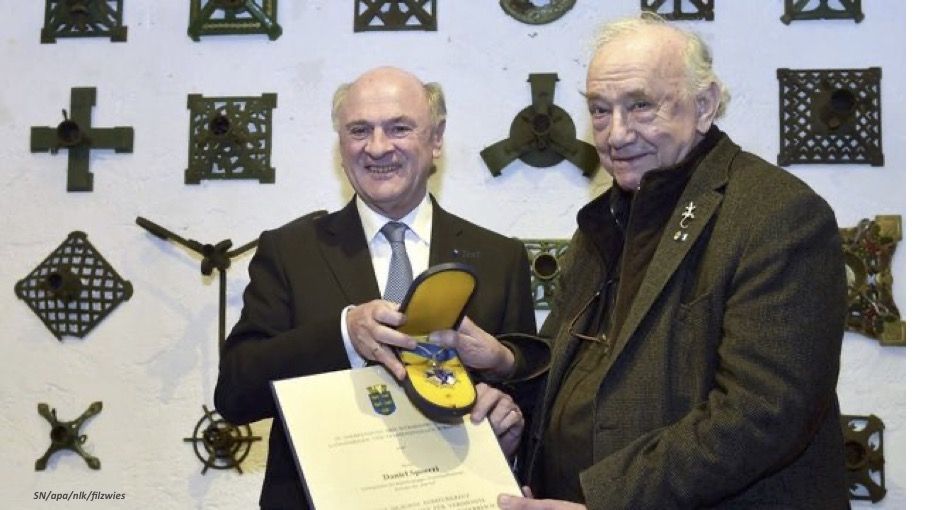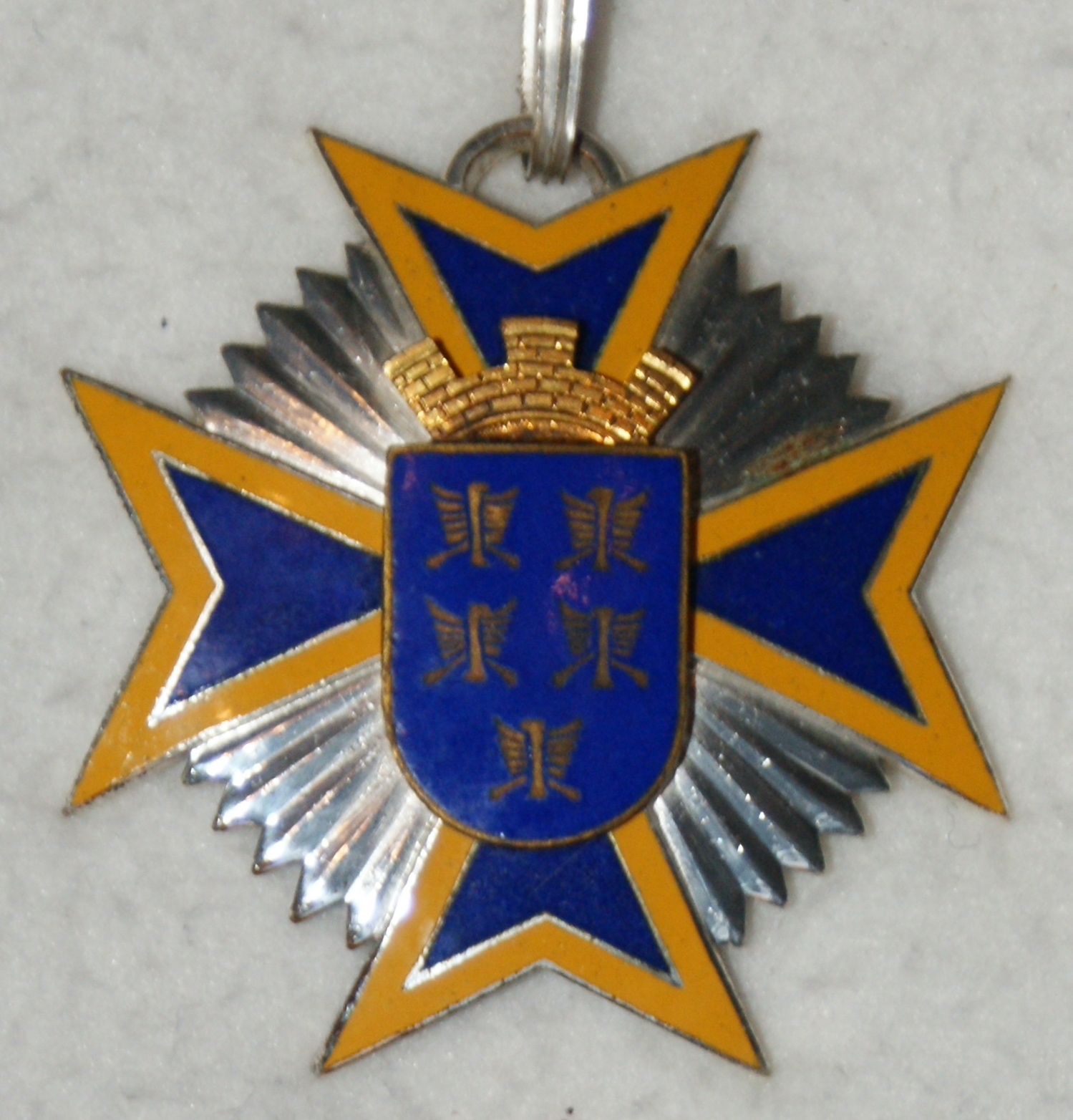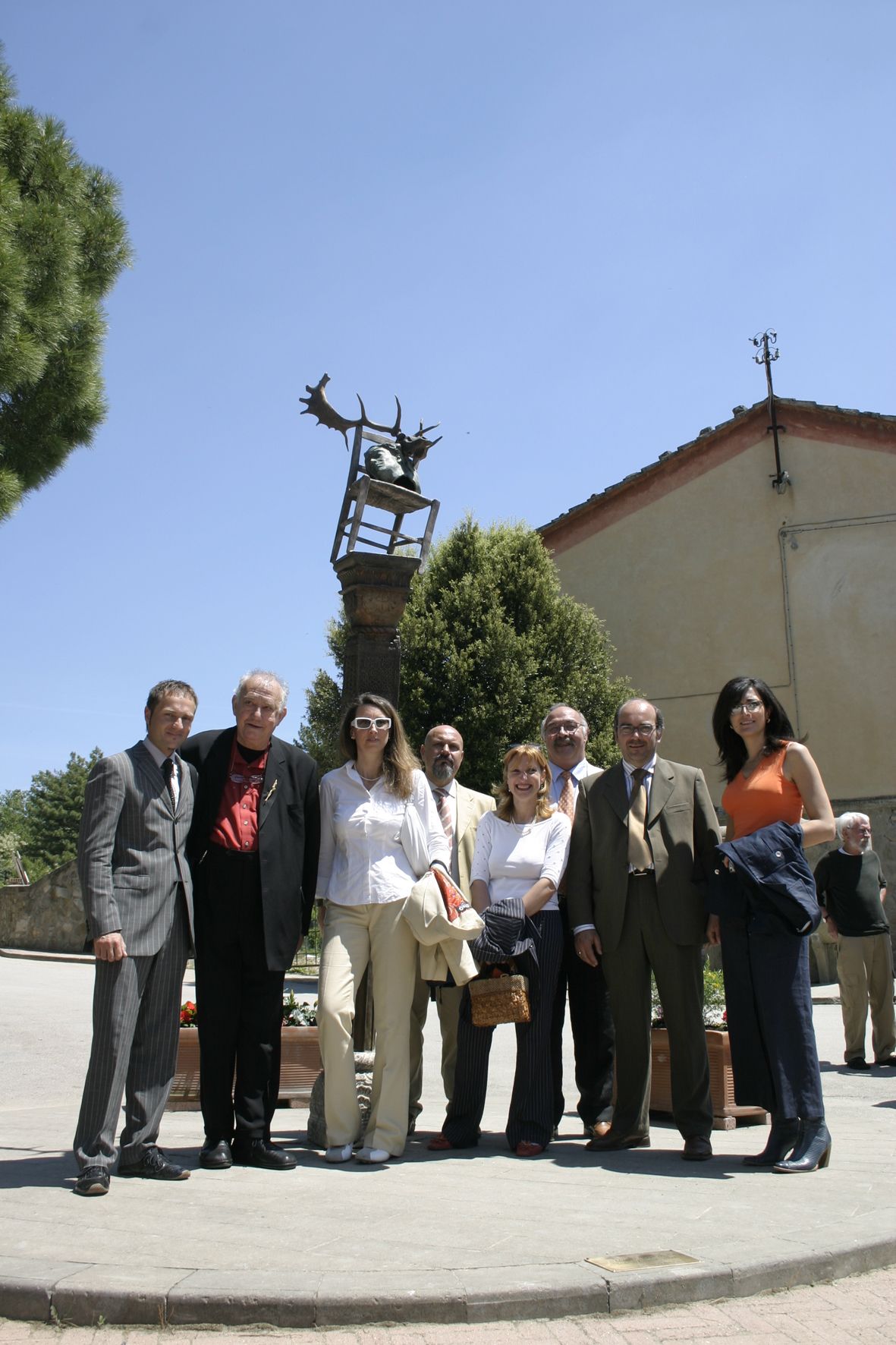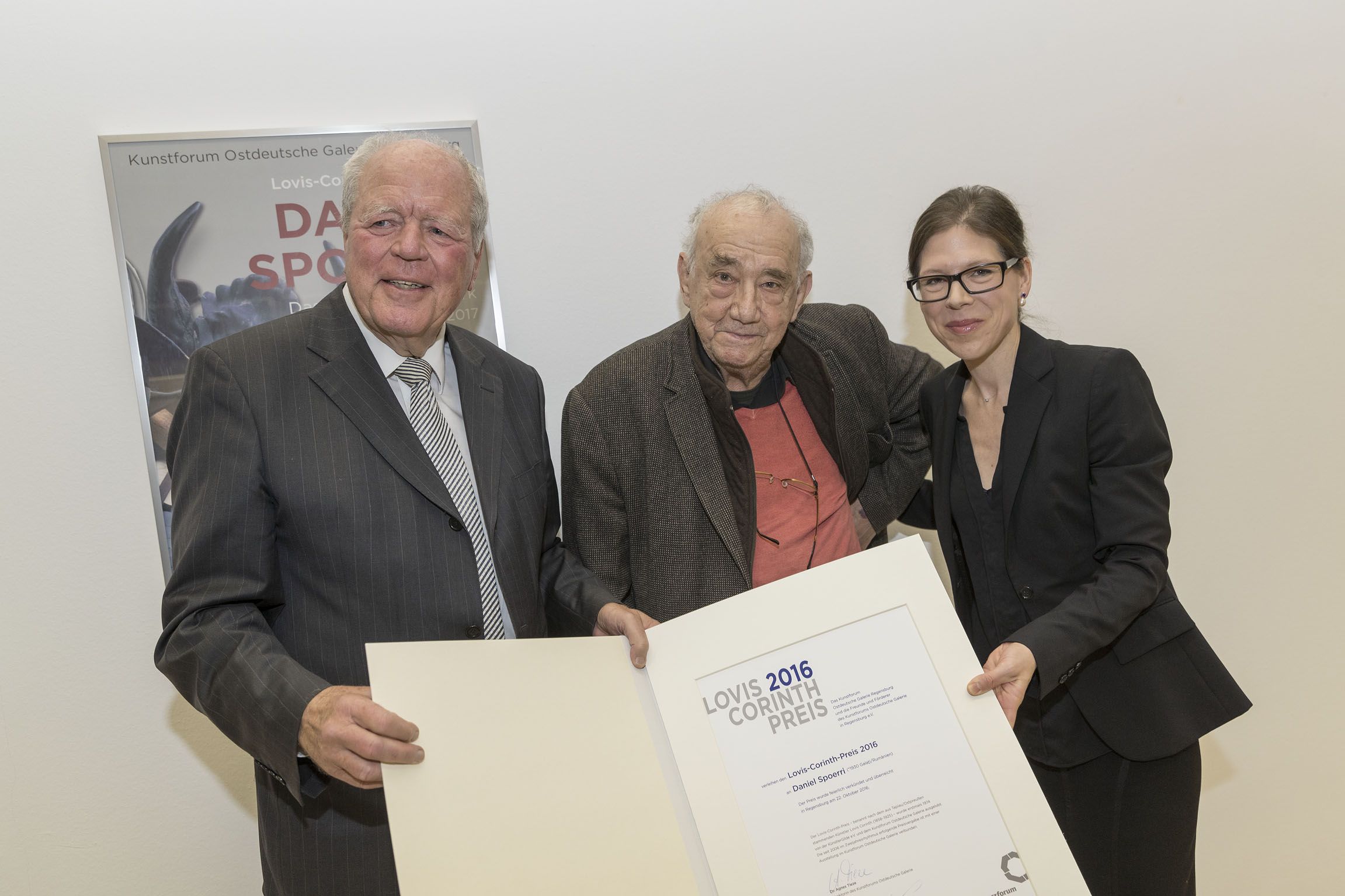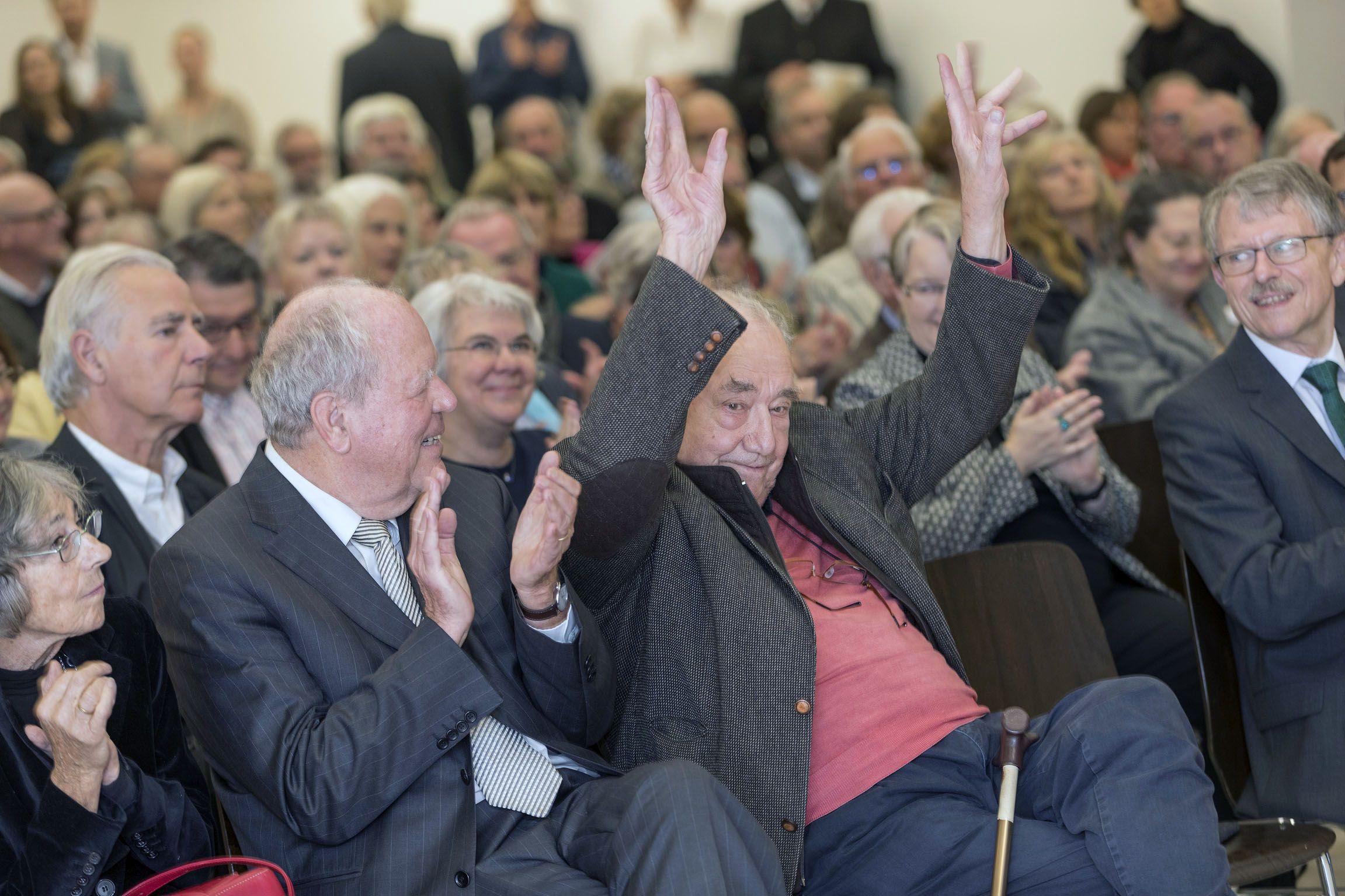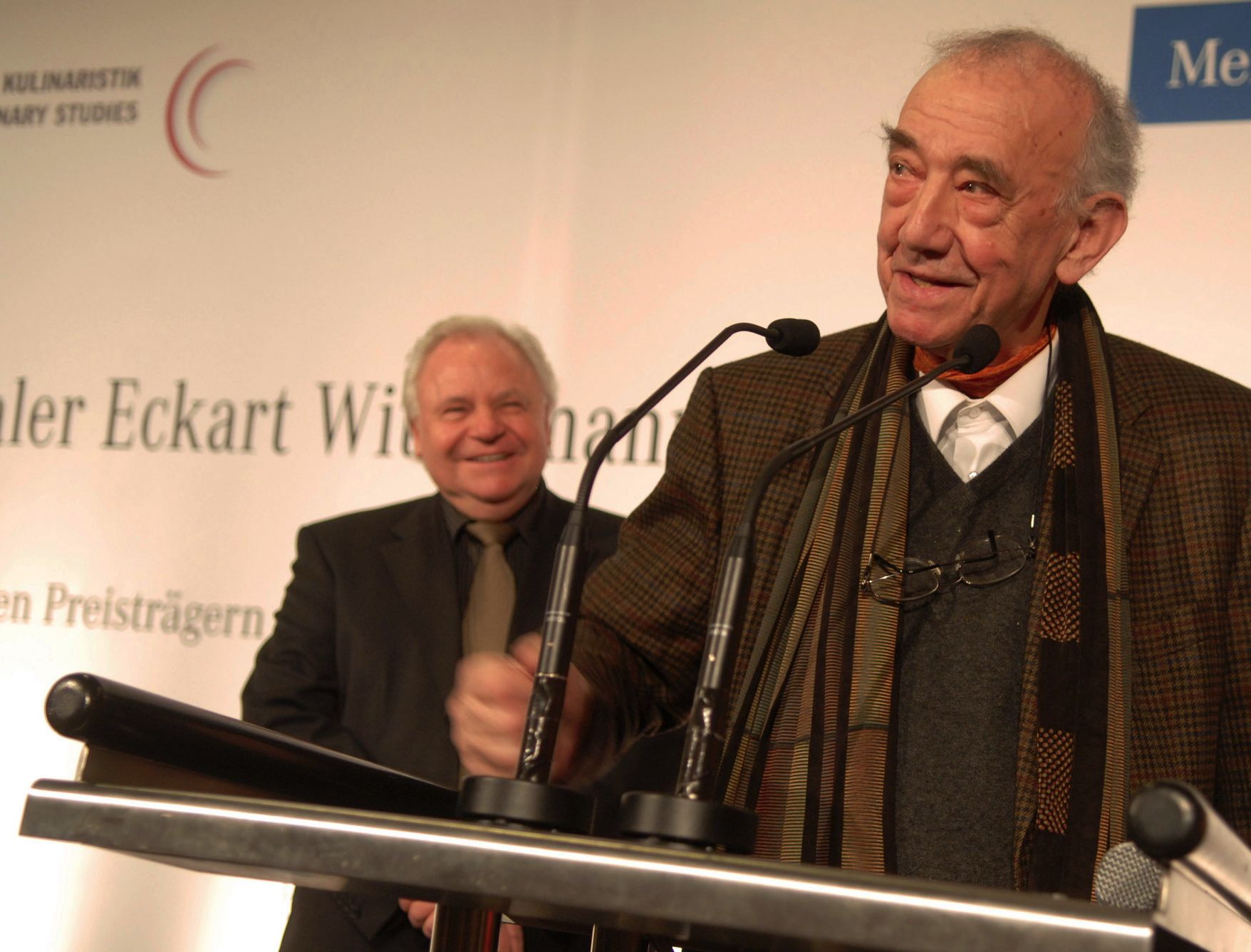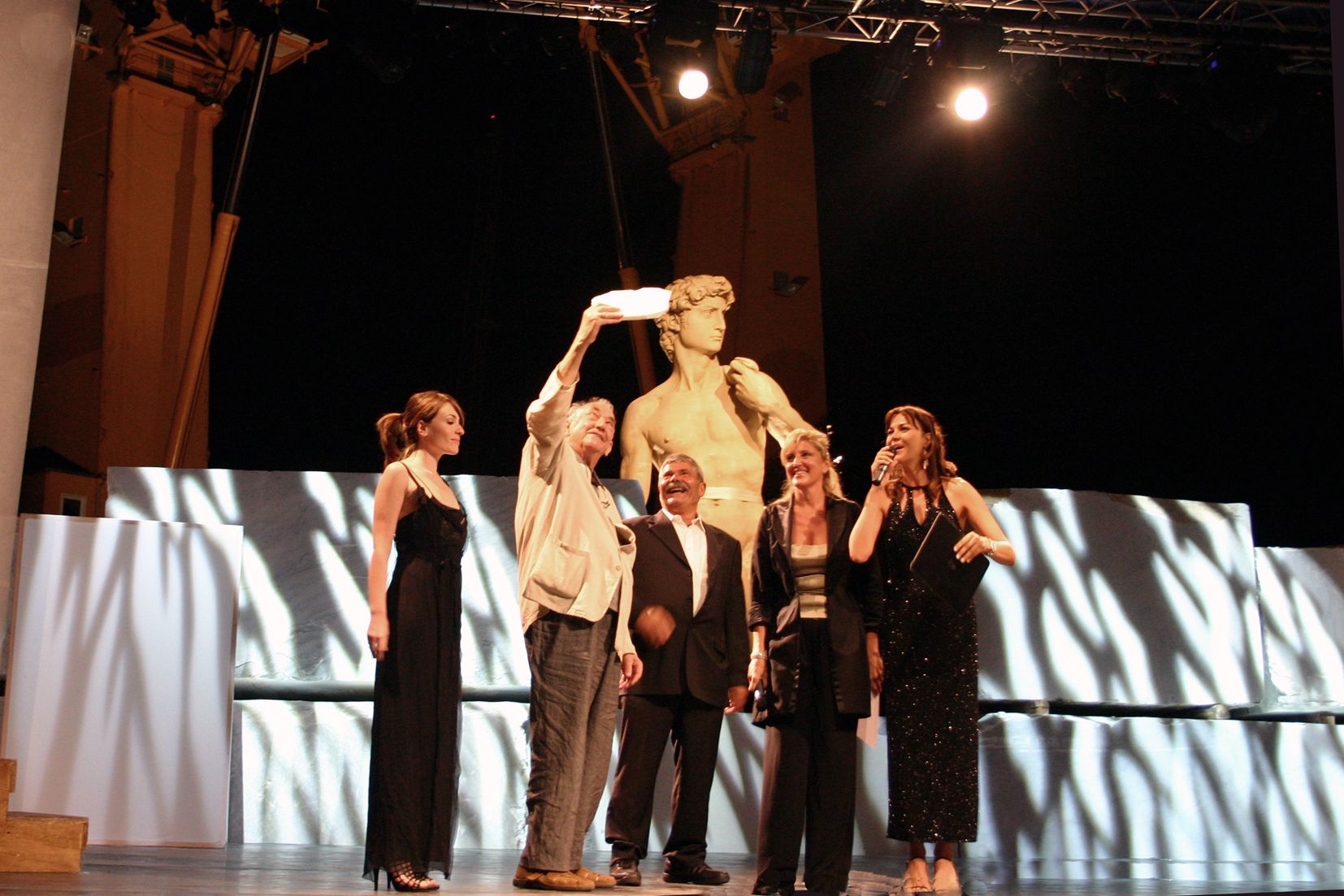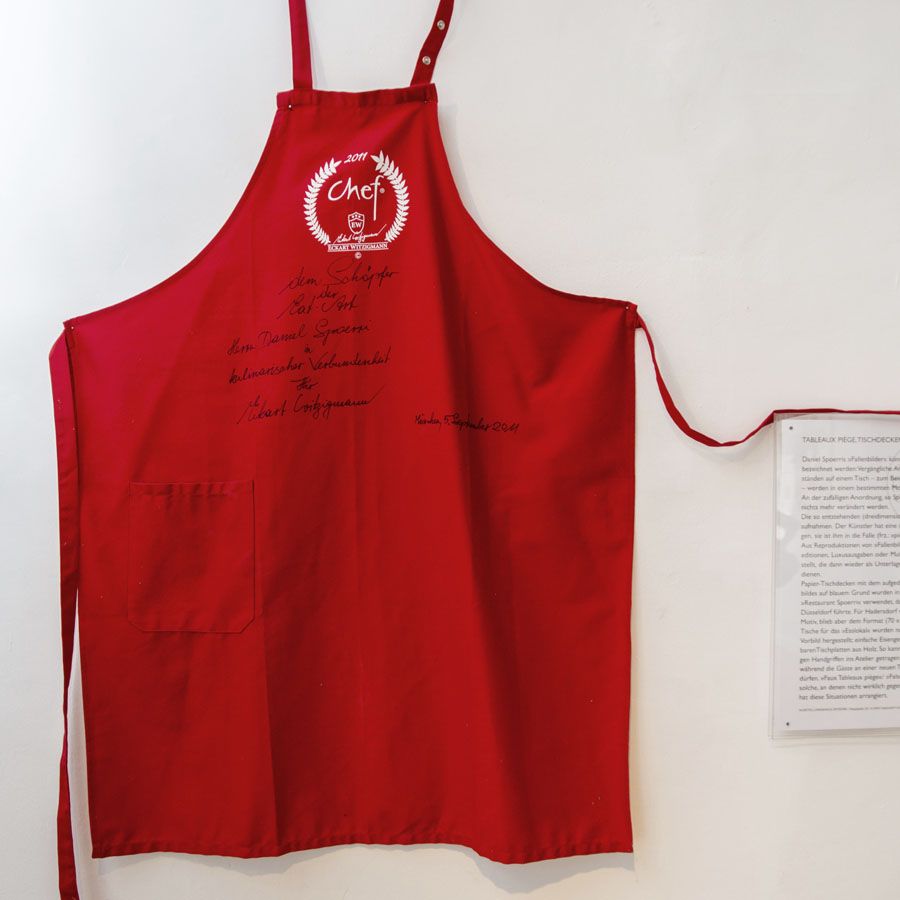Daniel Spoerri
Daniel Spoerri
Life
BIOGRAPHICAL DATA, short outline
-
1930:
Born on March 27th in Galati (Romania)
-
1942:
Escape to Switzerland with his mother and siblings
-
1954:
Dancer at the City Theatre Bern (Stadttheater Bern)
-
1959:
Move to Paris
Creation of the first Snare picture -
1960:
Joint-Signature of the Manifeste du Nouveau Réalisme
-
1961:
First solo exhibition at the Schwarz Gallery
-
1966:
Retreat to the Greek island of Symi
-
1968:
Conception of Eat Art
Opening of the Restaurant Spoerri in Düsseldorf -
1971:
Opening of the Eat Art Gallery
First retrospective at the Stedelijk Museum (Amsterdam) -
1983:
Professorship at the Art Academy in Munich
-
1985:
First exhibition of Bronze Sculptures
-
1989:
Beginning of his work on the Il Giardino di Daniel Spoerri sculpture park in Seggiano, Italy
-
1997:
Contribution of the sculpture park to a non-profit foundation
Opening of the Giardino to visitors -
2008:
Move to Vienna
Start of work on the museum project in Hadersdorf am Kamp -
2009:
Opening of the Spoerri exhibition center and the associated eatery in Hadersdorf
-
2010:
Contribution of the properties in Hadersdorf to a charitable foundation
Detailed biography of Daniel Spoerri | DOWNLOAD
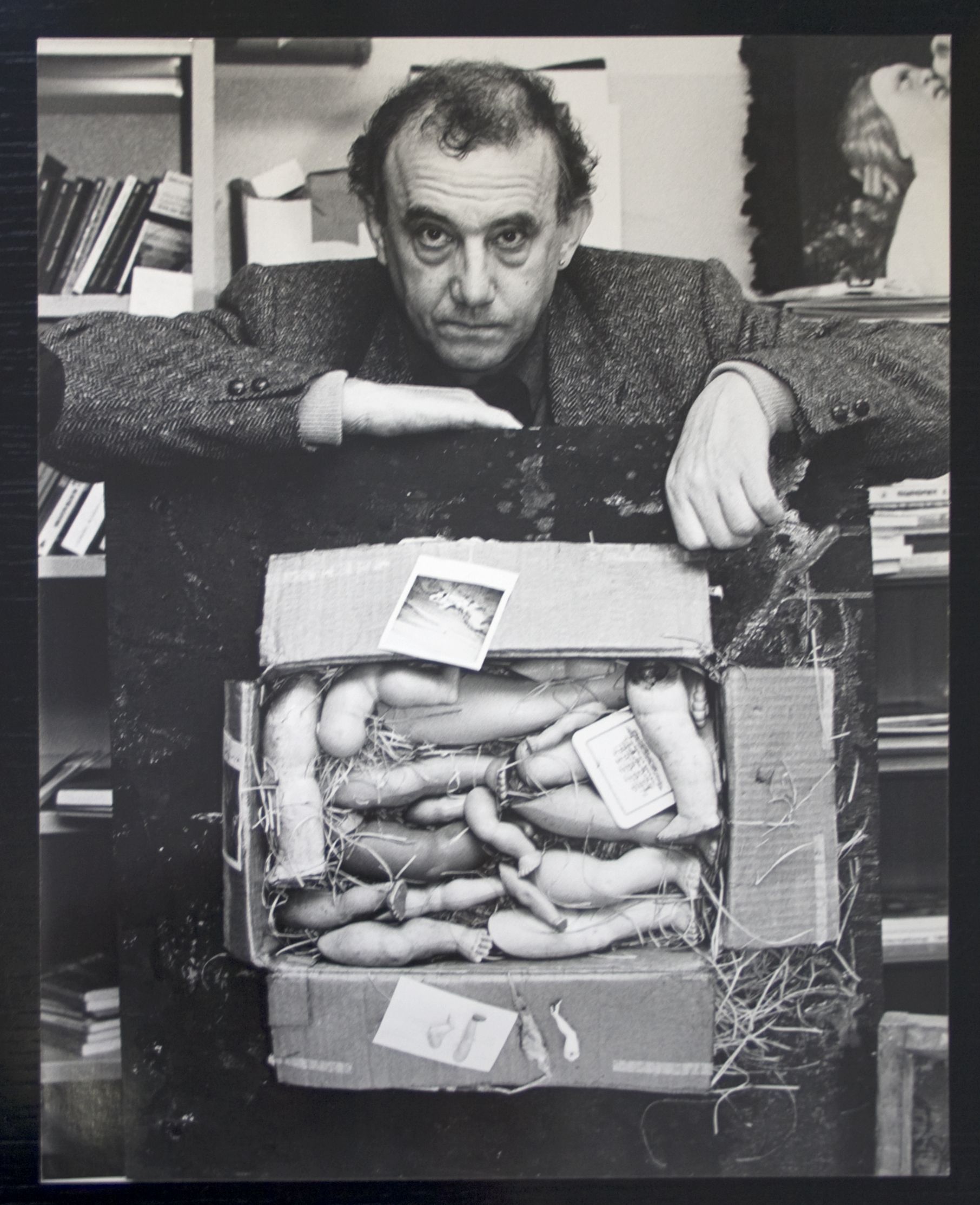
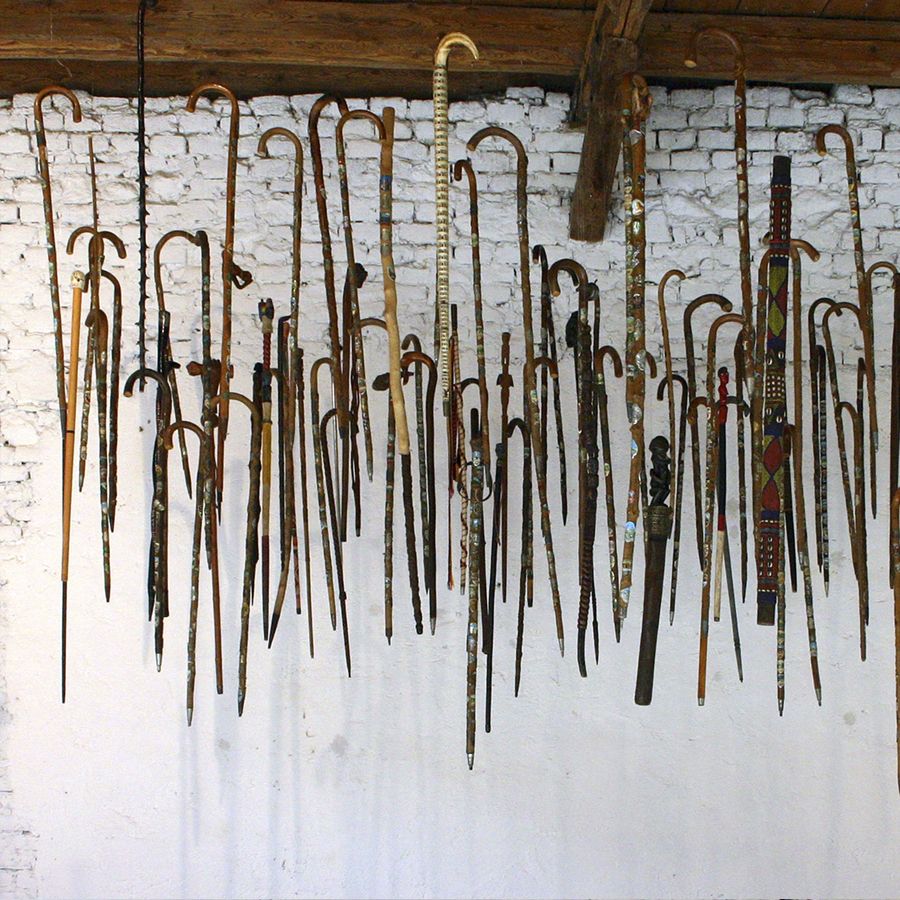
A WANDERER...
Daniel Spoerri is an inquisitive character. And as such he has been on the move throughout his life - in a figurative sense in search of new impressions, ideas, stories, objects, but in the actual sense he too has a certain "unsteady" nature.
While fleeing from Romania to Switzerland was a question of survival, the geographical stations that followed are probably a sign of the curiosity that kept pushing him for new, external impressions. Thus it is not surprising that right from the start of his career as an artist he could be found wherever the new, the avant-garde, ruled – be it Paris or New York.
His biography gives the impression that he stayed everywhere for as long as the place made artistic development possible for him. Then he moved on...
With his Giardino in southern Tuscany, Daniel Spoerri has probably found THE permanent place for himself. That didn't stop him from moving on after years of living and working there, but not without returning regularly to this piece of paradise.
...AND NARRATOR
Bringing things that already have a »history« into a different narrative form, counteracting traditional expectations, a slightly modified proverb... these are central points of Daniel Spoerri's object and process art.
Daniel Spoerri plays with the moment, flirts coquettishly with the element of surprise, and tries to stimulate the viewer's or co-experiencer's reflection by changing small elements of a process, which then suddenly function as »mental stumbling blocks«.
All of this, the almost »Faustian« captured moment or the mutation of the returning, refers to the position of »instants« in the overall cycle of life, death, decay and rebirth - and their influence on it...
WORKS
In 1960, after having previously worked as a dancer, set designer and director, Daniel Spoerri, co-founder of Nouveau Réalisme, joint-signed its manifesto in Paris.
His snare pictures (tableaux pièges) made him world-famous as a visual artist.
The MAT Edition, which he published in cooperation with the major contemporary artists of the 1950s and 1960s, helped to solidify the principle of the “Multiple” in art.
With the »Restaurant Spoerri« and the associated Eat Art Gallery, which he opened in Düsseldorf in 1968/1971, the artist became the founder of Eat Art.
As a professor and teacher, he realized various exhibitions with the students in his class(es) based on the principle of a Musée Sentimental – a museum of memories. According to Spoerri, this is the expansion of the snare picture idea to a larger area, for example a city or a region.
The basic theme of his entire artistic work is the contextualisation of objects with a history of previous use in every day life, in the form of collages or assemblages. He ultimately transcended the usual material limits and implemented some of his objects in bronze, and even a series in collaboration with the Meissen porcelain manufactory created from »torn tables« in the finest porcelain.
Tableaux Pièges - SNARE PICTURES
As a visual artist, he gained international recognition in the late 1960s with his snare pictures (tableaux pièges).
These moments fixed on tabletops, which freeze a very specific instant in the course of a meal or a randomly found situation (e.g. a work table or a flea market stall), as if caught in a snare (French: piège) - a piece of everyday reality, captured forever.
Snare pictures originally arose and still do arise in the course of actual dinners, but Spoerri developed the concept further, and thus »composed« snare pictures, which were appropriately also referred to as faux tableaux pièges (fake snare pictures). Although these are the same as the »actual« snare pictures in terms of appearance, they represent more of a still life in a narrower sense of the term.
Bronzes
With the opening of his artists' garden "Il Giardino di Daniel Spoerri" in southern Tuscany in 1997, Daniel Spoerri began to increasingly implement his sometimes large-format assemblages in bronze - not least for the practical reason that his works in the sculpture park should or had to defy wind and weather.
However, the main reason for starting to realize his works as bronzes was an artistic one: a sculpture made entirely of one material appears more cohesive.
Spoerri wanted the viewer of his assemblages to see them not only as a collection of diverse objects, but also as a unified whole. Art critics were often surprised by this step - and not only in a positive way - after all, for some Spoerri was »the object artist who works with old junk«.
It is easy to imagine that Spoerri would not have been satisfied with a series of identical works in the long run. After the first casts in the foundry, he was particularly fascinated by the sprues, which are usually removed after cooling. For him, these »veins« became unplanned or plannable additional elements, sprung from the moment - and different with every cast.
In the spirit of »capturing the moment«, he decided to leave the sprues as they were, often even adding unnecessary ones to the casting, which means that the bronzes he has created since 2005 have become »originals in series« - no cast of the same assemblage is like the other.
The result of this experimentation with a material completely unfamiliar to him are impressively poetic, partly erotic, partly - because of their size - if not frightening, at least expansive creatures of mystical proportions and groups with immense power.
Edition MAT / Multiples
Daniel Spoerri pursued the basic idea that art shouldn't cost a lot very early on in his work, and it culminated in the late 1950s in the Edition MAT that he created.
He inspired artist friends to produce one work for each edition in a specific score in order to then sell the individual objects at a standard price. The objects were made by the artists as a series, but not as a fixed copy of a template, but as a separate, individual work according to the basic scheme defined by the artist. As a result, no object in a series is exactly the same as the other – the basic concept of Multiple.
Over the years in which the edition was published (1959, 1964 and 1965), the ranks of participating artists would ultimately include such important names as Jean Tinguely, Vasarely, Heinz Mack, J.R. Soto, Yves Klein, Christo - to name just a few.
EAT ART
Central themes in Daniel Spoerri's work are the human sense of taste and the questioning of eating habits. The alienation of food, of meal processes, the game with expectations and appearances, all of this questions or at least irritates traditional sensory perceptions and traditions.
His engagement with cooking traditions and with the change in the choice of ingredients not only resulted in a considerable collection of cookbooks and cooking utensils, but also in his own nine-part »recipe library«, which he compiled. For its realisation he collaborated with close artist friends, e.g. Roland Topor or Bernhard Luginbühl, who were invited to illustrate it.
With his »bread objects« Daniel Spoerri questioned the misappropriation of food, which is often seen as taboo.
Above all, however, the »staging« of banquets using all the aforementioned stylistic devices of alienation and surprise is an essential point of Spoerri's Eat Art.
As a logical consequence, from the late 1960s Daniel Spoerri always made sure that Eat Art was present in all his places of activity - while the Spoerri restaurant only existed during his professorship in Düsseldorf, the “Non-Solo Eat Art” restaurant in the “Giardino” and the “Esslokal” adjacent to his exhibition house in Hadersdorf have become permanent establishments.
WORD(PLAY)
In the mid-1950s, Daniel Spoerri dealt with Concrete poetry. Together with Claus Bremer he edited a magazine called »material«, a monthly publication for various authors - including Dieter Roth, Emmett Williams, Gherasim Luca and Pol Bury.
To which extent Daniel Spoerri sees everyday objects as the main protagonists in his work, becomes evident in 1967 in his groundbreaking and repeatedly published book An Anecdoted Topography of Chance. From the salt shaker to the eggshell - all objects and leftovers that happened to be lying around on a table were mapped and described.
In personal encounters Daniel Spoerri often shows an almost mischievous pertness. With subtle, enigmatic wit, he usually casually comments on statements or situations. This subtle wit is also captured in his quilts – gems put together from letters and words from now outdated cloths found at the flea market with embroidered pious sayings that once used to be hung behind sofas to protect the wall.
Vestiges
il giardino @ Seggiano
Daniel Spoerri once called the Giardino his "poetry album": The 16-hectare, gently sloping hilly landscape with its little woods, spacious meadows, an olive grove - and an unparalleled view - invites you to hike and linger and provides a frame for more than 100 installations by more than 50 artists that can be discovered – an ideal space to sink into and dream.
At the end of the 1980s, Daniel Spoerri found this piece of living environment in Seggiano in southern Tuscany, about 60 km south of Siena - since 1997 Il Giardino di Daniel Spoerri has been open to visitors from Easter till October. In order to be able to see all the installations, we recommend calculating at least a few hours – and allowing time for a visit to the associated small bar Non solo EAT ART... – or renting one of the four apartments for a few days for having time to linger.
"Ausstellungshaus Spoerri" - exhibition house @ Hadersdorf
Similar to the Giardino, the Ausstellungshaus is also the result of a »moment«: Daniel Spoerri was on an excursion that, among other places, took him to Hadersdorf, a small, idyllic place in the middle of the magnificent wine and cultural landscape of the Kamptal, only a few kilometers from the Danube, the valley of Wachau, as well as from Krems, Stein and Langenlois.
The main square here is a real gem with its carefully renovated Baroque, Renaissance and Gothic facades - and Daniel Spoerri was enthralled by the former monastery building that now lodges the exhibition house. Here, in annually changing exhibitions, works by Daniel Spoerri are placed in dialogue with works by friends from his rich artistic life and exciting contemporary artists, of which many are at view for the first time in Austria.
EATERIES
It is a central concern of Daniel Spoerri that Eat Art, the art form he founded, is not just a visual or even theoretical art concept, but that it can be experienced by the visitors. From the beginning, the »experience« of Eat Art in a classic gastronomic setting was a central part of what he did.
It all started with the Restaurant Spoerri in Düsseldorf. The artist has been celebrating Eat Art Banquets as what we would today call pop-up events. Hence it was only logical that for both the Giardino and the exhibition center in Hadersdorf on-site restaurants were part of the concept from the very beginning.
Spoerri is not concerned with uniformity, but rather with authenticity and - especially - simple well-being. While the NON-SOLO EAT ART of the Giardino corresponds to a classic-style trattoria, the ESSLOKAL in Hadersdorf was defined from the start primarily by the authenticity and cooking style of the respective operators, not by a type of restaurant.
Barbara and Roland Huber have been running the eatery since 2020 - with full passion and energy and to the delight of many visitors!
RECOGNITION
On September 30 2020, Daniel Spoerri was presented with the Austrian Cross of Honor for Science and Art by Federal President Alexander van der Bellen - one of the highest awards that the Republic bestows for artistic or scientific achievements - in a very intimate ceremony in the Federal President's Office in the Vienna Hofburg.
In 2005 governor Erwin Proell awarded him the Silver Commander's Cross of Lower Austria; on November 6 2020, this was followed by the Culture Prize for Fine Arts of the State of Lower Austria.
Daniel Spoerri is an honorary citizen of Seggiano, he was awarded the Lovis Corinth Prize, received the Premio Michelangelo in Carrara...
...and, probably the most pleasing to him, the Eckart Witzigmann Prize, which he was presented with in 2007 for his Eat Art.
RECENT EXHIBITIONS BY/WITH/ABOUT DANIEL SPOERRI ELSEWHERE...
5 July 2024 to 10 May 2025
»Mapping the 60s«
MUMOK, Vienna
Austriahttps://www.mumok.at/en/exhibitions/mapping-the-60s
25 April to 18 July 2025
»EGGSIT. A tribute to Daniel Spoerri (1930-2024)«
Archivio Conz, Berlin
Germany
https://www.instagram.com/p/DIvjnjkoLEp/?hl=fr&img_index=1
2 May to 31 May 2025
»Daniel Spoerri. No friend of stagnation. Commemorative exhibition on the 95th - Part II«
Levy Gallery, Hamburg
Germany
https://levy-galerie.de/exhibition/kein-freund-von-stillstand-gedachtnisausstellung-zum-95-teil-ii/
1 June to 12 October 2025
»Daniel Spoerri. Prillwitz Idols«
Gerisch Foundation, Neumünster
Germany
https://gerisch-stiftung.de/ausstellung/daniel-spoerri
17 June to 31 October 2025
»gugging goes millstART« (with works by Daniel Spoerri)
Millstart Art Association, Millstadt am See
Austria
https://millstart.at/
27 September 2025 to 26 April 2026
»Daniel Spoerri. I love contradictions«
Falkenberg Collection, Deichtorhallen Hamburg
Germany
https://www.deichtorhallen.de/en/ausstellung/daniel-spoerri
May 19 to 28 2023
„The Spoerri Retrospective"
MoBU International Art Fair of Bucharest
Romania
https://www.mobu.art
March 12 bis April 29 2023
„Daniel Spoerri - An Autobiography of Objects"
Galerie Geiger
Konstanz
https://www.galerie-geiger.de
January 14 bis April 10 2023
„About the Value of Art"
Bündner Kunstmuseum Chur
Schweiz
https://kunstmuseum.gr.ch/de
September 30 to November 30, 2022
„Daniel Spoerri“
Gallery Karma International
Zurich / Switzerland
https://www.karmainternational.ch
October 16, 2021 to March 27, 2022
„The theater of objets - Daniel Spoerri“
MAMAC
Nice / France
www.mamac.com
September 5, 2021 to March 13, 2022
„A Museum of Disorder“
Langen Foundation
Neuss / Germany
www.langenfoundation.de
September 4 to October 16, 2021
"The Poetry of Little Things"
Art Space Arcade
Mödling / Austria
http://kunstraumarcade.at
July 7 to September 5, 2021
„curated by Daniel Spoerri“
Museum Gugging
Maria Gugging / Austria
www.galeriegugging.com
May 28 to August 22, 2021
"We don't want nature"
Kunsthaus Mürzzuschlag
Mürzzuschlag / Austria
www.kunsthausmuerz.at
May 5 to June 12, 2021
DANIEL SPOERRI „Weißt du, schwarzt du?“
(30 years Daniel Spoerri)
Krinzinger Projects Schottenfeld
Vienna / Austria
www.galerie-krinzinger.at
March 24 to June 27, 2021
Daniel Spoerri
Art Forum Bank Austria
Vienna / Austria
www.kunstforumwien.at
Contact
Ausstellungshaus Spoerri
Hauptplatz 23 | 3493 Hadersdorf | Austria
+43 (0)2735 20194 | This email address is being protected from spambots. You need JavaScript enabled to view it.
Subscribe Newsletter
Opening Hours - Season 2025
27 March – 02 November 2025
Friday – Sunday
11am – 6pm
© 2025 Ausstellungshaus Spoerri
